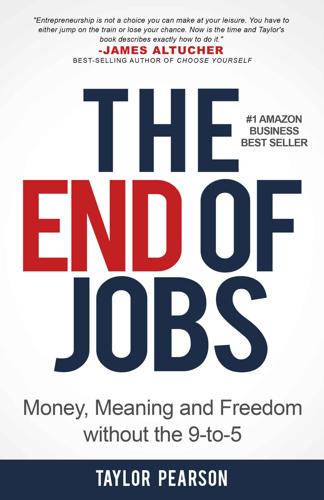
The End of Jobs: Money, Meaning and Freedom Without the 9-To-5
by
Taylor Pearson
Published 27 Jun 2015
Cost: ~$3000 → $35 = ~100 times cheaper Time to get paid: 9 months → 1 week = ~36 times faster Customer Communication: None → You own every customer’s contact info CD Baby revolutionized the music industry by escaping the limitations of the short head and “revealing” the Long Tail. In The Long Tail, Anderson recounts the story of a friend whose band, Birdmonster, saw the benefits of the Long Tail made possible in part by Derek and CD Baby. For bands looking to get started, there’s no way around hustling for gigs. While most bands are forced into pestering club owners for gigs, Birdmonster searched for clubs that had already booked headliners but still had “TBA” for the opening band.
…
If we plot the same curve on a logarithmic scale, where each step is a factor of ten ($1, $10, $100, $1000, etc), then it should form a straight line as in the graph below. Source: The Long Tail – Chris Anderson In this example from Chris Anderson’s The Long Tail, actual sales don’t follow the dotted line. Traditionally in movies, just as in music, if you aren’t making it into major distribution (in this case movie theaters), you aren’t making any money. After the top one hundred, we see movies that only got a little bit of regional distribution as the curve drops off, and then it falls to zero at around the five hundred rank for movies that got no distribution. What should look like the Long Tail graph we saw earlier actually looks like this: Source: The Long Tail – Chris Anderson Because movie theatres, record stores, and retail businesses can’t serve the area labeled latent demand.
…
The fact that Max’s decision has been safe for the last one hundred years is in no way indicative that it’s going to be safe in the future. I don’t say all this to scare. I say it to make you aware. What was once safe is now risky. What was once risky is now safe. Section 4: The Long Tail How Entrepreneurs with Second Rate Degrees Are Getting Rich The Long Tail, a concept popularized by Wired editor Chris Anderson in his book by the same name, explains that because of technology, primarily the internet, the traditional rules around business and entrepreneurship have changed. In 1998, Derek Sivers was a musician living in New York.

Makers
by
Chris Anderson
Published 1 Oct 2012
If we are all empowered to use tools to meet those needs, or modify them with our own ideas, we will collectively find the full range of what a tool can do. The Internet democratized publishing, broadcasting, and communications, and the consequence was a massive increase in the range of both participation and participants in everything digital—the Long Tail of bits. Now the same is happening to manufacturing—the Long Tail of things. My first book, The Long Tail, was about exactly this—the shift in culture toward niche goods—but mostly in the digital world. For most of the past century, the natural variation and choice in products such as music, movies, and books have been hidden by the limited “carrying capacity” of the traditional distribution systems of physical stores, broadcast channels, and megaplex movie theaters.
…
HB615.A683 2013 338′.04—dc23 2012014398 eISBN: 978-0-307-72097-9 Jacket creative direction and design by Brandon Kavulla v3.1 For Carlotta Anderson Contents Cover Title Page Copyright Dedication Part One THE REVOLUTION Chapter 1 The Invention Revolution Chapter 2 The New Industrial Revolution Chapter 3 The History of the Future Chapter 4 We Are All Designers Now Chapter 5 The Long Tail of Things Part Two THE FUTURE Chapter 6 The Tools of Transformation Four Desktop Factories Chapter 7 Open Hardwares Chapter 8 Reinventing the Biggest Factories of All Chapter 9 The Open Organization Chapter 10 Financing the Maker Movement Chapter 11 Maker Businesses Chapter 12 The Factory in the Cloud Chapter 13 DIY Biology Epilogue The New Shape of the Industrial World Appendix: The 21st-Century Workshop Getting started with CAD Getting started with 3-D printing Getting started with 3-D scanning Getting started with laser cutting Getting started with CNC machines Getting started with electronics Acknowledgments Notes Chapter 1 The Invention Revolution Fred Hauser, my maternal grandfather, emigrated to Los Angeles from Bern, Switzerland, in 1926.
…
But that is just the first wave of what is quickly becoming a mainstream phenomenon. Soon these early tools will become as ubiquitous and as easy to use as inkjet printers. And if history is any guide, it will change the world even faster than the microprocessor did a generation ago. We are all designers now. It’s time to get good at it. Chapter 5 The Long Tail of Things Mass production works for the masses. But what works for you? One recent Saturday, my two youngest daughters decided they wanted to redecorate their dollhouse. They’ve been playing The Sims 3, which is a video game that’s basically a virtual dollhouse where you can make any kind of home with a dizzying array of furniture and people choices (“Sims”), and then watch them live their lives in it.
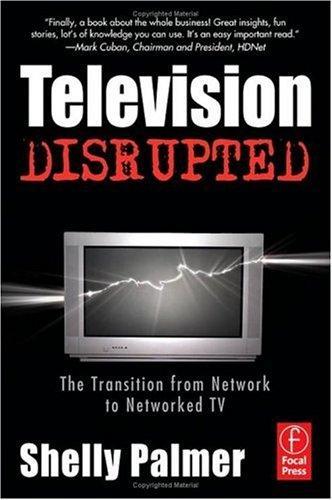
Television disrupted: the transition from network to networked TV
by
Shelly Palmer
Published 14 Apr 2006
We are likely to see many new and interesting kinds of database marketing as we transition from network to networked television. The lure of the direct response dollars is an exceptional motivator. The Tale of the Long Tail The Eskimos have 27 words for snow... The Great Wall of China is the only manmade object you can see from space... More than 20 percent of value is locked up in the “Long Tail.” These are all myths that have such romantic power, you just want to believe them; but they are still myths. In October 2004, Chris Anderson, editor-in-chief of Wired magazine wrote “The Long Tail,” a brilliant article. In it, Anderson argues that products that are in low demand or have low sales volume can collectively make up a market share that rivals or exceeds the relatively few current bestsellers if sales and distribution costs are low enough.
…
A Zipf ’s distribution is an excellent way to plot a demand curve and, if properly applied, the insight gained can be very useful. Results The problem with the long tail is not with the math, or even with the idea; the problem is the way people interpret (or more precisely, misinterpret) Anderson’s concept. With regard to content (audio and video on the Internet), there is a pretty good theoretical argument to be made for the value proposition of the long tail. After all, in theory, it goes on forever and it is full of valuable things like old Sidney Bechet and Bunk Johnson recordings. These 0.7 artists, by default, have a place 0.6 on the long tail. 0.5 But, how will consumers find this long-tail content, 0.4.
…
In other words, you’ll need to determine which movies are in the top quintile (top 20 percent of the curve) of revenue producers to determine if the content is worth encoding at all. But isn’t the long tail an accurate way to look at content usage? Yes, it is. And it’s great if the content can be encoded and stored at a very low cost. It’s just not a profitable way to look at a back catalog that was not created with the long tail in mind. It is never less expensive to prepare content for long tail distribution than it is during the original production process. If you know that one day you will want to store your content online and make the files available for electronic distribution, you can easily take advantage of the long tail. However, after the fact or with existing material in non-digital formats, there are very real costs associated with encoding and storage.
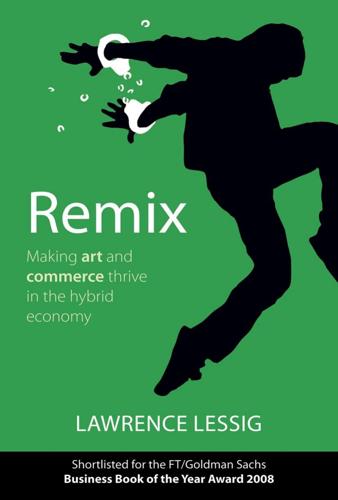
Remix: Making Art and Commerce Thrive in the Hybrid Economy
by
Lawrence Lessig
Published 2 Jan 2009
Netflix offers seventy-five thousand titles today (about twelve thousand in 2002) in more than two hundred genres on its Web site. Blockbuster offered seven thousand to eight thousand in 2002.16 The Long Tail dynamic benefits those whose work lives in the niche. A wider diversity of films and books is available now than ever before in the history of culture. The low cost of inventory means wider choice. Wider choice is a great benefit for those whose tastes are different.17 Those who doubt the significance of the Long Tail are quick to argue that the amount of commerce generated in the Long Tail is small relative to the market generally. Anderson calculates 25 percent of Amazon’s sales come from its tail; but the Wall Street 80706 i-xxiv 001-328 r4nk.indd 129 8/12/08 1:55:17 AM 130 REMI X Journal’s Lee Gomes comments, “[U]sing another analysis of those numbers . . . you can show that 2.7% of Amazon’s titles produce a whopping 75% of its revenues.”18 But this criticism misses two important points.
…
But in each case, the skeptic misses something critically important: how the discipline of the yeoman’s life changes him or her as a citizen. The Long Tail enables a wider range of people to speak. Whatever they say, that’s a very good thing. Speaking teaches the speaker even if it just makes noise. Little Brother The Long Tail alone, however, is not enough to explain the great success of the Amazons/Netflixes/Googles of the world. It’s not enough that stuff is simply available. There must also be an efficient way to match customers to the stuff in the Long Tail. I may well want to buy a book that only five hundred others in the world would want to buy.
…
See Erik Brynjolfsson, Yu Jeffrey Hu, and Duncan Simester, “Goodbye Pareto Principle, Hello Long Tail: The Effect of Search Costs on the Concentration of Product Sales,” MIT Center for Digital Business Working Paper (2007); Paul L. Caron, “The Long Tail of Legal Scholarship,” Yale Law Journal 116 Pocket Part 38 (2006); Anita Elberse and Felix Oberholzer-Gee, “Superstars and Underdogs: An Examination of the Long Tail Phenomenon in Video Sales,” Harvard Business School No. 07-015 Working Paper Series; Indiana Resource Sharing Task Force, “Wagging the Long Tail: Sharing More of Less; Recommendations for Enhancing Resource Sharing in Indiana,” White Paper (2007); Anindya Ghose and Bin Gu, “Search Costs, Demand Structure and Long Tail in Electronic Markets: Theory and Evidence,” NET Institute Working Paper No. 06-19 (2006); Teruyasu Murakami, “The Long Tail and the Lofty Head of Video Content: The Possibilities of ‘Convergent Broadcasting,’ ” Nomura Research Institute, NRI Papers No. 113 (2007). 18.
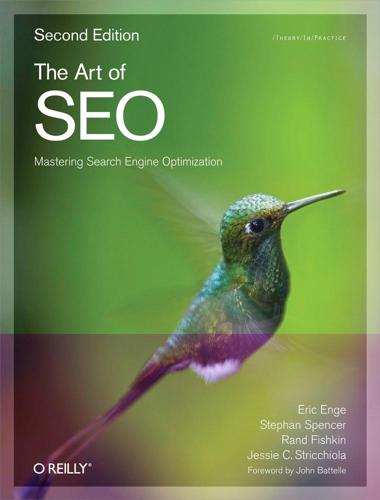
The Art of SEO
by
Eric Enge
,
Stephan Spencer
,
Jessie Stricchiola
and
Rand Fishkin
Published 7 Mar 2012
However, landing page optimization is not practical for performing SEO tests (i.e., to see which version of a page ranks higher), as with SEO tests it can take weeks or even months to see results. Leveraging the Long Tail of Keyword Demand As we discussed at the beginning of this chapter, the long tail of search is where 70% of search queries occur. Only 30% of those precious queries happen in the more obvious terms that people use, the so-called “head terms.” Another way to underscore this is that in May 2007, Google Vice President Udi Manber indicated that 20% to 25% of all search queries that Google receives on a given day are queries that Google is seeing for the first time. You can think of this as the “ultra-long tail.” The long tail of search queries in a given industry is typically not visible via any of the major keyword research services or search engine ad databases (Google AdWords, Yahoo!
…
For example, if you run a site targeting searches for new york pizza and new york pizza delivery, you might be surprised to find that the hundreds of single searches each day for terms such as pizza delivery on the corner of 57th & 7th, or Manhattan’s tastiest Italian-style sausage pizza, when taken together, will actually provide considerably more traffic than the popular phrases you’ve researched. This concept is called the long tail of search. Targeting the long tail is another aspect of SEO that combines art and science. In Figure 6-22, you may not want to implement entire web pages for a history of pizza dough, pizza with white anchovies, or Croatian pizza. You may get traffic on these terms, but they are not likely to convert into orders for pizza. Figure 6-22. Example of the long-tail search curve Finding scalable ways to chase long-tail keywords is a complex topic. Perhaps you have a page for ordering pizza in New York City, and you have a good title and <h1> header on the page (e.g., “New York City Pizza: Order Here”), as well as a phone number and a form for ordering the pizza, and no other content.
…
Take the time to go beyond the surface and use the tools to learn how your customers think, get your thinking in alignment with theirs, and then build your website strategy (and perhaps even your product strategy) around that. Understanding the Long Tail of the Keyword Demand Curve It is wonderful to deal with keywords that have 5,000 searches per day, or even 500 searches per day, but in reality these “popular” search terms may actually comprise less than 30% of the overall searches performed on the Web. The remaining 70% lie in what’s commonly called the “long tail” of search (as published at http://www.seomoz.org/blog/rewriting-the-beginners-guide-part-v-keyword-research); see Figure 5-1. The tail contains hundreds of millions of unique searches that might be conducted only a few times in any given day, or even only once ever, but when assessed in aggregate they comprise the majority of the world’s demand for information through search engines.
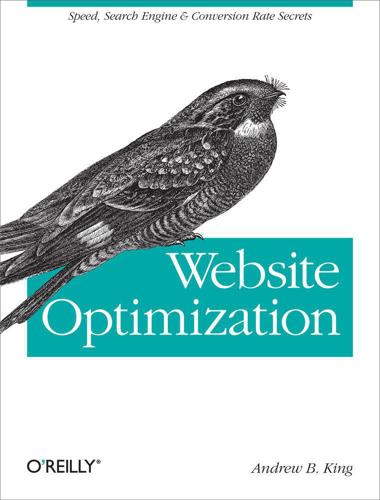
Website Optimization
by
Andrew B. King
Published 15 Mar 2008
, Microsoft, and Everybody Else, Goals and Values, Goals and Values website focus and, Unprofessional design work cycle overview, The Pay-per-Click Work Cycle press releases, Step 10: Build Inbound Links with Online Promotion, Step 10: Build Inbound Links with Online Promotion primacy effect, New visitors primary content consumption (metric), Website Success Metrics, Primary content consumption, Success Metrics = Reaching Goals PRNewsWire.com, Step 10: Build Inbound Links with Online Promotion, Step 10: Build Inbound Links with Online Promotion product images, Factor #8: Deploy Persuasive, Benefit-Oriented Content, Factor #9: Use Illustrative Product and Service Images—The "Hero Shot", Factor #10: Use Interactive Elements to Engage Users professional website design, Unprofessional design, Make it linkworthy profit-per-impression equation, Measuring Ad Performance progressive enhancement (PE) strategy, Use progressive enhancement, Use progressive enhancement, Use progressive enhancement, Use progressive enhancement Prototype library, Relying on Ajax Libraries prototyping, Put it on paper and build graphical mockups ProxyPass directive, Using mod_cache ProxyScoring (metric), PathWeight and ProxyScoring PRWeb.com, Step 10: Build Inbound Links with Online Promotion, Step 10: Build Inbound Links with Online Promotion psychographics, Discovering personas psychological reactance, The six persuaders psychology of persuasion, The six persuaders, The six persuaders, The six persuaders, The six persuaders, The six persuaders, The six persuaders, Building trust to close the sale, Optimize with persuasive copywriting, Optimize with persuasive copywriting authority, The six persuaders building trust, Building trust to close the sale, Optimize with persuasive copywriting consistency, The six persuaders CRO considerations, Optimize with persuasive copywriting liking, The six persuaders reciprocation, The six persuaders scarcity, The six persuaders social proof, The six persuaders PubSub.com, Delta encoding (delta compression) Q Quality Scores, Optimizing Pay-per-Click Ads optimizing ad groups, Optimizing Pay-per-Click Ads QuickTime Pro, Optimizing videos for the Web, Optimizing videos for the Web, Optimizing videos for the Web, Optimizing videos for the Web, Optimizing videos for the Web, Optimizing videos for the Web, Optimizing videos for the Web, Optimizing videos for the Web, Optimizing videos for the Web Compressor section, Optimizing videos for the Web Data Rate section, Optimizing videos for the Web Encoding area, Optimizing videos for the Web Frame Reordering box, Optimizing videos for the Web Key Frames area, Optimizing videos for the Web Motion section, Optimizing videos for the Web optimizing video, Optimizing videos for the Web Quality area, Optimizing videos for the Web Temporal slider, Optimizing videos for the Web R rankings, Natural Search Engine Optimization, Natural Search Engine Optimization, The Benefits of SEO, Duplicate content, Duplicate content, Best Practices, Tools for keyword research, Optimize key content, Acquire inbound links, Acquire inbound links, Summary, Step 1: Determine Your Keyword Phrases, Find your primary keyphrase, Tools for keyword research, Tools for keyword research, Tools for keyword research, Tools for keyword research, Find your primary keyphrase, Step 2: Sort by Popularity, Step 2: Sort by Popularity, Step 2: Sort by Popularity, Step 2: Sort by Popularity, Step 2: Sort by Popularity, Step 2: Sort by Popularity, Step 3: Refine Keyword Phrases and Re-Sort, Right-size your keyphrases, Keywords trump company name (usually), Right-size your keyphrases, Keywords trump company name (usually), Right-size your keyphrases, Right-size your keyphrases, Target multiple keyphrases, Target multiple keyphrases, Target multiple keyphrases, Keywords trump company name (usually), Keywords trump company name (usually), Keywords trump company name (usually), Step 6: Write a Keywords Meta Tag, Write headlines that pop, Step 8: Add Keywords Tactically, Buy keyphrased domain names, Buy keyphrased domain names, Buy keyphrased domain names, Step 9: Create Valuable Keyword-Focused Content, Sharpen your keyword-focused content, Create search-friendly URIs, Write compelling summaries, Automatically categorize with blogs, Automatically categorize with blogs, Automatically categorize with blogs, Create tag clouds, Create tag clouds, Step 10: Build Inbound Links with Online Promotion, Summary, Step 10: Build Inbound Links with Online Promotion, Step 10: Build Inbound Links with Online Promotion, Step 10: Build Inbound Links with Online Promotion, Don't dilute your PageRank, Be leery of link exchange voodoo, Hurl harmful outlinks, Reduce risky redirects, Measuring inbound links, Measuring inbound links, Summary, Summary acquiring inbound links, Acquire inbound links adding keywords tactically, Buy keyphrased domain names, Buy keyphrased domain names best practices, Best Practices, Tools for keyword research, Tools for keyword research building inbound links, Step 10: Build Inbound Links with Online Promotion, Summary, Step 10: Build Inbound Links with Online Promotion, Measuring inbound links, Summary determining keyphrases, Step 1: Determine Your Keyword Phrases, Find your primary keyphrase, Tools for keyword research, Find your primary keyphrase duplicate website content and, Duplicate content Google factors, Step 2: Sort by Popularity importance of, Natural Search Engine Optimization, The Benefits of SEO keyword stuffing and, Step 2: Sort by Popularity keyword-focused content, Sharpen your keyword-focused content, Automatically categorize with blogs negative factors, Step 2: Sort by Popularity on-site optimization and, Natural Search Engine Optimization optimizing key content, Optimize key content positive factors, Step 2: Sort by Popularity re-sorting keyphrases, Right-size your keyphrases, Keywords trump company name (usually), Target multiple keyphrases, Keywords trump company name (usually) refining keyphrases, Right-size your keyphrases, Keywords trump company name (usually), Target multiple keyphrases, Keywords trump company name (usually) reinforcing site theme, Duplicate content steps for improving, Acquire inbound links, Summary, Tools for keyword research, Tools for keyword research, Step 2: Sort by Popularity, Step 2: Sort by Popularity, Step 3: Refine Keyword Phrases and Re-Sort, Right-size your keyphrases, Right-size your keyphrases, Target multiple keyphrases, Keywords trump company name (usually), Step 6: Write a Keywords Meta Tag, Write headlines that pop, Step 8: Add Keywords Tactically, Buy keyphrased domain names, Step 9: Create Valuable Keyword-Focused Content, Create search-friendly URIs, Write compelling summaries, Automatically categorize with blogs, Automatically categorize with blogs, Create tag clouds, Create tag clouds, Step 10: Build Inbound Links with Online Promotion, Step 10: Build Inbound Links with Online Promotion, Don't dilute your PageRank, Be leery of link exchange voodoo, Hurl harmful outlinks, Reduce risky redirects, Measuring inbound links, Summary RDF (Resource Description Framework), Summary reciprocation (persuader), The six persuaders Red Hat Enterprise platform, Target files by extension for caching reference movies, Step 3: Optimize Multimedia regional compression, Step 2: Resize and Optimize Images remote procedure calls, Load JavaScript on demand (remote procedure calls) remote scripting, Ajax Optimization repeat visitors (metric), Repeat visitors replication, Shorthand properties Resource Description Framework (RDF), Summary return statement, Avoid Optional Constructs and Kill Dead Code Fast revenue per visit (metric), Revenue per visit(or) RewriteEngine directive, How mod_rewrite works RewriteMap directive, How mod_rewrite works RewriteRule directive, How mod_rewrite works RFC 2397, Inline Images with Data URIs, Disadvantages of inline images Rhino JavaScript engine, Bundle Your Scripts, JavaScript Optimization and Packing RIAs (Rich Internet Applications), Ajax Optimization ROAS (return on advertising spend), Differences in Geotargeting, Web Server Log Analysis defined, Differences in Geotargeting web analytics support, Web Server Log Analysis robots exclusion protocol, Duplicate content ROI (return on investment), Summary of the Differences Among AdWords, adCenter, and YSM, Calculating Return on Investment, Pay-per-Click Return on Investment and Goals Summary calculating, Calculating Return on Investment PPC optimization and, Summary of the Differences Among AdWords, adCenter, and YSM, Pay-per-Click Return on Investment and Goals Summary root terms, The Right Keywords and the Myth of the Long Tail, The Right Keywords and the Myth of the Long Tail, Guidelines for Grouping ad group themes, Guidelines for Grouping broad matching, The Right Keywords and the Myth of the Long Tail unique keywords and, The Right Keywords and the Myth of the Long Tail RSS news feeds, Write compelling summaries headline summaries, Write compelling summaries rss2html.pl script, Example RSS cache S sales cycle, Goals and Values, Include multiple conversion points for different stages of the buying cycle, Building trust to close the sale, Factor #7: Include Appealing Offers and Calls to Action building trust, Building trust to close the sale calls to action, Factor #7: Include Appealing Offers and Calls to Action multiple conversion points, Include multiple conversion points for different stages of the buying cycle stages in, Goals and Values scarcity (persuader), The Psychology of Persuasion, The six persuaders scent, Factor #5: Use Benefit-Oriented Headlines script tag, Lazy-Load Your Code, Minimizing HTTP Requests, Load JavaScript on demand (remote procedure calls) scripting, Remap Built-in Objects, Delay Script Loading, Use progressive enhancement, Use progressive enhancement, Use an iframe for external JavaScript delaying loading, Delay Script Loading, Use progressive enhancement, Use progressive enhancement, Use an iframe for external JavaScript remapped objects and, Remap Built-in Objects Search Engine Marketing Professional Organization (SEMPO), Measuring SEM success search engines, Acquire inbound links, Tools for keyword research, Create search-friendly URIs, Original Site estimating search volume, Tools for keyword research ranking considerations, Acquire inbound links search parameters, Create search-friendly URIs simulating with Lynx, Original Site security policies, Minimizing HTTP Requests selectors (CSS), Top 10 Tips for Optimizing CSS replacing inline style with, Top 10 Tips for Optimizing CSS SEM (search engine marketing), Website Success Metrics, Measuring SEM success, Website Success Metrics, Popular Web Metrics, Popular Web Metrics, Measuring SEM success, Search Engine Marketing Metrics, Search Engine Marketing Metrics, Classes of Metrics, Unique visitors, Classes of Metrics, Content, Objectives, Means, Volume Metrics, Content Metrics: Measuring Each Component, Unique visitors, Unique visitors, Content Metrics: Measuring Each Component, Content Metrics: Measuring Each Component, Entries, Objectives, Understanding objectives classes of metrics, Classes of Metrics, Unique visitors, Classes of Metrics, Means, Unique visitors content metrics, Content, Entries, Understanding objectives measuring success, Popular Web Metrics metrics overview, Search Engine Marketing Metrics objectives for metrics, Objectives, Objectives strategies, Search Engine Marketing Metrics volume metrics, Volume Metrics, Content Metrics: Measuring Each Component, Unique visitors, Content Metrics: Measuring Each Component, Content Metrics: Measuring Each Component website success metrics, Website Success Metrics, Measuring SEM success, Website Success Metrics, Popular Web Metrics, Measuring SEM success Semphonic XChange, Unique visitors SEMPO (Search Engine Marketing Professional Organization), Measuring SEM success SEO (search engine optimization), Natural Search Engine Optimization, The Benefits of SEO, Common SEO Barriers, Reinforce the theme of your site, Inadequate inbound links, Drowning in splash pages, Flash fires, Flash fires, Unprofessional design, Unprofessional design, Obscure navigation, Duplicate content, Duplicate content, Reinforce the theme of your site, Step 1: Determine Your Keyword Phrases, Summary benefits, The Benefits of SEO common barriers, Common SEO Barriers, Reinforce the theme of your site, Reinforce the theme of your site duplicate content, Duplicate content, Duplicate content fixing focus, Unprofessional design Flash proliferation, Flash fires, Flash fires inadequate inbound links, Inadequate inbound links increased competition, Step 1: Determine Your Keyword Phrases JavaScript-only navigation, Obscure navigation metadata, Summary process components, Natural Search Engine Optimization splash pages, Drowning in splash pages unprofessional design, Unprofessional design SERPs (search engine result pages), Duplicate content, Keywords trump company name (usually), Buy keyphrased domain names company names in, Keywords trump company name (usually) keyphrased domain names, Buy keyphrased domain names two-URIs-per-hostname limit, Duplicate content server-side includes (SSIs), Eliminate (i)frames and JavaScript includes server-side optimization, Reduce DNS lookups, Caching Frequently Used Objects, Using mod_cache, Caching Frequently Used Objects, Three ways to cache in, Three ways to cache in, A specific caching example, Target files by extension for caching, Target files by extension for caching, Using mod_cache, Using mod_cache, Using HTTP Compression, Delta encoding (delta compression), Average compression ratios for HTTP compression, Average compression ratios for HTTP compression, Delta encoding (delta compression), The Benefits of a Content Delivery Network cache control, Caching Frequently Used Objects, Using mod_cache, Caching Frequently Used Objects, Three ways to cache in, Three ways to cache in, A specific caching example, Target files by extension for caching, Target files by extension for caching, Using mod_cache, Using mod_cache Content Delivery Network, The Benefits of a Content Delivery Network HTTP compression, Using HTTP Compression, Delta encoding (delta compression), Average compression ratios for HTTP compression, Average compression ratios for HTTP compression, Delta encoding (delta compression) parallel downloads, Reduce DNS lookups ServerAlias directive, Optimizing Parallel Downloads ServerTokens command, Target files by extension for caching service command, Target files by extension for caching service images, Factor #9: Use Illustrative Product and Service Images—The "Hero Shot", Factor #9: Use Illustrative Product and Service Images—The "Hero Shot", Factor #10: Use Interactive Elements to Engage Users session IDs, Create search-friendly URIs sessions, Volume Metrics Set-Cookie header, Three ways to cache in setRequestHeader( ) method, Method 3: Make Requests with an Old If-Modified-Since Header Shop.org study, Discovery sign-ups, Sign-ups simple engagement, Bounce rate (and simple engagement) Sistrix study, Buy keyphrased domain names Skip Intro links, Drowning in splash pages Skitz, Load JavaScript on demand (remote procedure calls) Slashdot, Employ social networking and user-generated content slogans, Best Practices for CRO, Factor #4: Write a Memorable Slogan sniffing, Step 4: Convert JavaScript Behavior to CSS , XSSI browser sniffing social networking, Employ social networking and user-generated content social norms, The six persuaders social proof (persuader), The Psychology of Persuasion, The six persuaders socket connections, Speed checklist, Request statistics, AOL Pagetest Solaris platform, Compressing content in Apache Sorenson codec, Optimizing videos for the Web Sorenson Video 3 Pro, Optimizing videos for the Web Souders, Switch to Semantic Markup source credibility, Source Credibility: Designing Gut Reactions, Factor #3: Optimize the Credibility of Your Logo spatial compression, Optimizing videos for the Web speed tax, Request statistics Speed Up Your Site, Average compression ratios for HTTP compression, Speed checklist Web Site Optimization, Average compression ratios for HTTP compression, Speed checklist splash pages, Drowning in splash pages Spontaneous personality type, Building trust to close the sale Start Render time metric, Load times, Reporting the Numbers, Start render Stefanov, Load JavaScript on demand (remote procedure calls) Sterne, Website Optimization Metrics strange attractors, Deploy strange attractors string constants, Use String Constant Macros structural assurance, Building trust to close the sale StuffIt, Speed checklist Sullivan, Don't dilute your PageRank sweetened traffic, Unique visitors T tag clouds, Create tag clouds, Deploy strange attractors, Create tag clouds, Deploy strange attractors taglines, Factor #4: Write a Memorable Slogan Telestream Episode Pro, Optimizing videos for the Web temporal compression, Optimizing videos for the Web ternary operator, Use JavaScript Shorthand testing, Testing ads the easy way: AdWords optimized ad serving, Testing ads the hard way: Confidence interval testing, Testing ads the hard way: Confidence interval testing, Testing ads the hard way: Confidence interval testing, Testing ads the hard way: Confidence interval testing, Testing Landing Pages, Adjusting Bids, Adjusting Bids, Multivariate testing with Google Website Optimizer, User Experience Testing Software, Designing a Sample Test, IBM Page Detailer, IBM Page Detailer ads, Testing ads the easy way: AdWords optimized ad serving, Testing ads the hard way: Confidence interval testing, Testing ads the hard way: Confidence interval testing, Adjusting Bids confidence interval, Testing ads the hard way: Confidence interval testing, Testing ads the hard way: Confidence interval testing, Adjusting Bids designing sample tests, Designing a Sample Test, IBM Page Detailer, IBM Page Detailer landing pages, Testing Landing Pages multivariate, Multivariate testing with Google Website Optimizer UX software, User Experience Testing Software Text-Link-Ads.com, Pay for links Textlinkbrokers.com, Step 10: Build Inbound Links with Online Promotion, Pay for links themed ad groups, Organizing and Optimizing Ad Groups, Guidelines for Grouping, Example Themed Ad Groups, Example Themed Ad Groups advantages, Organizing and Optimizing Ad Groups example, Example Themed Ad Groups, Example Themed Ad Groups guidelines, Guidelines for Grouping themes, Step 1: Look through your site and identify major themes TIFF format, Step 2: Resize and Optimize Images time to live (TTL), Three ways to cache in timeout mechanisms, Timeouts, Retries, and Ordering, Addressing Server and Content Error, Timeouts, Retries, and Ordering, Addressing Server and Content Error title tags, Step 2: Sort by Popularity, Target multiple keyphrases, Keywords trump company name (usually) trackPageview function, JavaScript Page Tagging trademarks, Trademark Issues, Summary, How do I stop advertisers from bidding on my trademark?
…
Overall, you'll get more leads because your keyword reach will be higher. Take advantage of the long tail of search query distribution by targeting very specific phrases (see Figure 1-3). Reinforce the theme of your site The theme of a web page should flow through everything associated with that page: the title tag, the headers, the meta tags (keywords and description tags), the content, the links, the navigation, and even the URI of the page should all work together. Figure 1-3. The long tail (picture by Hay Kranen/PD) ora: Playing the Long Tail Given enough choice and a large population of consumers, search term selection patterns follow a power law distribution curve, or Pareto distribution.
…
, Microsoft, and Everybody Else asynchronous communication, Synchronous Versus Asynchronous Communication Asynchronous JavaScript and HTML (Ajah), Consider Ajah, Method 2: Make Requests with Unique URIs, Consider Ajah, Method 2: Make Requests with Unique URIs Atlas Search, Automated Bidding Atom news feeds, Step 10: Build Inbound Links with Online Promotion ATOS (average time on site), Website Success Metrics, Web Server Log Analysis attribute selectors (CSS), Tip #9: Use CSS2 and CSS3.x Techniques authority (persuader), The six persuaders, The six persuaders auto-expanding menus, List-based menus, Summary, List-based menus, List-based menus, List-based menus, Summary Autodesk Cleaner, Optimizing videos for the Web automated bidding, Automated Bidding average time on site (ATOS), Website Success Metrics AWStats tool, Web Server Log Analysis B background shorthand property (CSS), Shorthand properties, Shorthand properties bandwidth, Simulate connection speeds, Simulate connection speeds banner advertising, The cost of banner advertising Base64 representation, Inline Images with Data URIs, CSS and inline images benefit bullet format, Factor #8: Deploy Persuasive, Benefit-Oriented Content bid gaps, Bid Gaps, Bid Gaps, Bid Gaps, Bid Gaps, Bid Gaps BidRank, Automated Bidding bids, Pay-per-Click Optimization, Pay-per-Click Basics and Definitions, Differences in Minimum Bids and Quality Scoring, Broad matches versus direct bidding, Guidelines for Grouping, Penalties for New Accounts, Initial Bid Strategies, Adjusting Bids, Automated Bidding, Branding, Bid Optimization in Action: The E-Grooming Book Example, The Content Network, Bid Optimization in Action: The E-Grooming Book Example, Bid Optimization in Action: The E-Grooming Book Example, The Content Network ad group guidelines, Guidelines for Grouping adjusting, Adjusting Bids automated, Automated Bidding branding considerations, Branding direct, Broad matches versus direct bidding e-grooming book example, Bid Optimization in Action: The E-Grooming Book Example, The Content Network, Bid Optimization in Action: The E-Grooming Book Example, Bid Optimization in Action: The E-Grooming Book Example, The Content Network initial strategies, Initial Bid Strategies penalties for new accounts, Penalties for New Accounts PPC recommendations, Pay-per-Click Optimization, Pay-per-Click Basics and Definitions vendor differences, Differences in Minimum Bids and Quality Scoring binary images, Inline Images with Data URIs blogs, Automatically categorize with blogs blurb (headline), Write compelling summaries BMP format, Step 2: Resize and Optimize Images body element, Delay Script Loading, Use progressive enhancement body ID/class method, List-based menus, List-based menus BodyGlove.com case study, PPC Case Study: BodyGlove.com, Summary, Market Analysis, Market Analysis, Campaign Creation and Kickoff, Summary border shorthand property (CSS), Shorthand properties bounce rate (metric), Website Success Metrics, Bounce rate (and simple engagement) BoxTop Software, Step 2: Resize and Optimize Images branding, Branding, Factor #4: Write a Memorable Slogan Breen, Optimizing Parallel Downloads broad matching, The Right Keywords and the Myth of the Long Tail long tail keywords and, The Right Keywords and the Myth of the Long Tail browser sniffing, Step 4: Convert JavaScript Behavior to CSS , Sniffing with BrowserHawk, XSSI browser sniffing, XSSI browser sniffing, CSS and inline images BrowserCam, Step 7: Convert Table Layout to CSS Layout BrowserHawk, Step 4: Convert JavaScript Behavior to CSS , XSSI browser sniffing, Sniffing with BrowserHawk, XSSI browser sniffing BrowserMatchNoCase directive, XSSI browser sniffing browsers, Use container cells for descendant selectors, Step 4: Convert JavaScript Behavior to CSS , Use a Reset Stylesheet, Shorthand properties, List-based menus, Ajax Optimization, Prelude to Ajax optimizations, Memory leaks and garbage collection in Internet Explorer, Minimizing HTTP Requests, Addressing the Caching Quandary of Ajax, Addressing Network Robustness, The problem with polling, Optimizing Parallel Downloads, Three ways to cache in, Load JavaScript on demand (remote procedure calls), Inline Images with Data URIs, Disadvantages of inline images, CSS and inline images, Unique visitors, Firebug: A simple alternative : hover pseudoclass, Step 4: Convert JavaScript Behavior to CSS Ajax considerations, Ajax Optimization browser toolbars, Prelude to Ajax optimizations caching considerations, Addressing the Caching Quandary of Ajax, Three ways to cache in conditional comments, List-based menus connection status, Addressing Network Robustness container cells, Use container cells for descendant selectors cookie deletion, Unique visitors cross-domain requests, Minimizing HTTP Requests CSS support, Use a Reset Stylesheet, Shorthand properties data URIs, Inline Images with Data URIs, Disadvantages of inline images, CSS and inline images download limitations, Optimizing Parallel Downloads IBM Page Detailer, Firebug: A simple alternative memory leaks, Memory leaks and garbage collection in Internet Explorer polling considerations, The problem with polling script tags and, Load JavaScript on demand (remote procedure calls) BSD platform, Compressing content in Apache Budd, Untangle Tables bulk editing, Google, Yahoo!

What's Yours Is Mine: Against the Sharing Economy
by
Tom Slee
Published 18 Nov 2015
For a perceptive study see Coleman, Coding Freedom: The Ethics and Aesthetics of Hacking. 14 Harris, “Under the Covers of the NSA’s Big Data Effort.” 15 Burkhardt and Waring, “An NSA Big Graph Experiment.” 16 Gardner, “Wikipedia at 10.” 17 Anderson, The Long Tail: Why the Future of Business Is Selling Less of More. 18 Ibid., p 1. 19 Ibid., p 40. 20 Ibid., p. 16. 21 Chesky, “Shared City.” 22 Elberse, Blockbusters: Hit-Making, Risk-Taking, and the Big Business of Entertainment. See also her earlier papers on the subject such as Elberse and Oberholzer-Gee, “Superstars and Underdogs: An Examination of the Long Tail Phenomenon in Video Sales”; Elberse, “Should You Invest in the Long Tail?” 23 Elberse, Blockbusters: Hit-Making, Risk-Taking, and the Big Business of Entertainment., p. 71. 24 Ibid., p. 166. 25 Ibid., p. 159. 26 Lessig, Remix., p. 29. 27 Ibid., p. 132. 28 Ibid., p. 108. 29 Lessig, Remix., p. xvi. 30 Taylor, People’s Platform. 31 Ibid., p. 47. 32 Ibid., p. 141–42. 33 Keating, “What Should I Do about Youtube?”
…
The Daily Dot, October 22, 2014. http://www.dailydot.com/business/uber-france-sexism/. Elberse, Anita. Blockbusters: Hit-Making, Risk-Taking, and the Big Business of Entertainment. Henry Holt and Co., 2013. ———. “Should You Invest in the Long Tail?” Harvard Business Review 86, no. 7/8 (August 2008): 88–96. Elberse, Anita, and Felix Oberholzer-Gee. “Superstars and Underdogs: An Examination of the Long Tail Phenomenon in Video Sales.” Marketing Science Institute 4 (2007): 49–72. Electronic Frontier Foundation. Airbnb, Inc. v. Schneiderman, 2013. https://www.eff .org/cases/airbnb-inc-v-eric-schneiderman. ———. “Section 230 Protections.”
…
It’s an appeal that still resonates in the “peer-to-peer” claims of Sharing Economy companies. Commercial Web 2.0 platforms such as Amazon, Netflix, and iTunes may not be “open” in the sense that some of the content is controlled and licensed, but for the purposes of this book, we can consider Web 2.0 platforms to be inspired by ideas of “open content.” In his influential 2006 book The Long Tail,17 Wired magazine editor Chris Anderson tied the rise of Web 2.0 platforms like Amazon and Netflix to the same subversive and liberating visions invoked by open-source software. His idea is that the bricks-and-mortar world of Walmart, bookseller retail chains, and record labels represent “the world the blockbuster built” and have to build their business on the “short head” of high-volume products.18 In contrast, online stores are not constrained by “the tyranny of geography.”
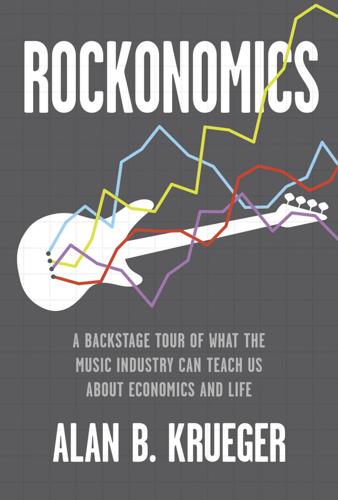
Rockonomics: A Backstage Tour of What the Music Industry Can Teach Us About Economics and Life
by
Alan B. Krueger
Published 3 Jun 2019
Popularity ricochets through networks of friends and acquaintances, creating power law relationships where a small number of performers garner almost all the attention. In the music industry, this can be seen in the extremely skewed distributions of concert income, music downloads, Shazam requests, Facebook and Twitter followers, and artists’ merchandise sales. In his bestselling book The Long Tail, Chris Anderson, then a Wired editor, predicted that the Internet will lead to greater opportunity for those in what he called the long tail of sales, because smaller producers will be able to find niche markets.13 This has yet to materialize in the music business. Instead, the middle has dropped out of music, as more consumers gravitate to a smaller number of superstars.
…
We’re still dancing.”20 Sad to say, his bank was not dancing much longer, and needed to be rescued by the U.S. government. The same type of dynamic that creates fads in music also can inflate and burst financial bubbles. What About the Long Tail Hypothesis? Some have predicted that the decline in the cost of producing music and distributing it over the Internet will lead to greater variety in music consumption, and move music away from a superstar market and toward a niche market. In his blockbuster book The Long Tail, Chris Anderson argued: Our culture and economy is increasingly shifting away from a focus on a relatively small number of “hits” (mainstream products and markets) at the head of the demand curve and toward a huge number of niches in the tail.
…
These features reinforce bandwagon effects and strengthen cumulative advantage benefits for star recording artists. As discussed in Chapter 4, there is little sign so far that streaming has moved music away from a superstar market, where a relatively small number of performers garner the lion’s share of the rewards. The Long Tail Although the long tail of recording artists who soldier on with little recognition or reward is likely to remain long and lonely, the Internet and digital technology are changing the way that new superstars are discovered and how everyday musicians do their work. In the right hands, a laptop computer armed with GarageBand or Logic Pro software could have as much recording capability as the Abbey Road Studios.
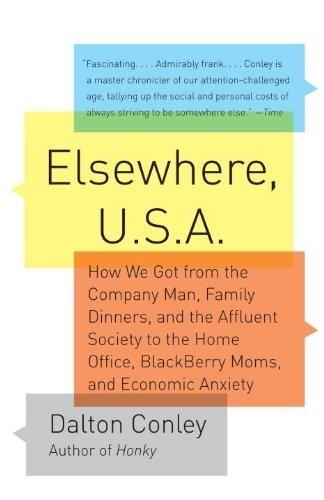
Elsewhere, U.S.A: How We Got From the Company Man, Family Dinners, and the Affluent Society to the Home Office, BlackBerry Moms,and Economic Anxiety
by
Dalton Conley
Published 27 Dec 2008
That’s because the reigning theory back then was that crime results when individuals with differing economic means are socialized into having the same desires. Yet with the arrival of the new economy, we’ve seen the steepest crime drop in recorded history.1 What’s going on here? Perhaps we don’t all want the same things, after all. Did the long tail solve the “equal wants” problem? Well, the long tail means that we might all want to download different songs on our iPods, or that everyone has a unique queue of movies on their Netflix accounts, but it doesn’t get around the problem that we all want to watch movies or listen to music and that these things cost money.
…
So, when people talk about the dematerialization of the economy, what they should be really calling it is a de-necessitation of the economy, as in a deemphasis on basic, physical necessities; or, alternatively, a luxurification or positionification.1∗ This view of the role of goods and services in the new economy stands in sharp contrast to that offered by folks like Chris Anderson, for example, in The Long Tail: Why the Future of Busi- ness Is Selling Less of More. In this book, Anderson argues that the shelfless nature of online, centralized distribution means that niche markets have replaced blockbusters as the most effective way to sustain a profit.4 Specifically, in the old days when the number of books, videos, or records that a given store could carry was limited by physical shelf space, consumer choice was limited.
…
Anderson claims that this tyranny has been lifted in the new economy, where there are no physical constraints to inventory so that everyone can live like an eccentric millionaire, ordering esoteric movies on Netflix, finding out-of-print first-edition books on the Web, and downloading obscure music on iTunes. Perhaps this is true for a certain class of goods—namely, cultural products that we consume privately on our iPods or DVD players. However, the positional aspect of other goods means that the long tail may actually be more like a long ladder that folks climb, each rung occupying a slightly higher status position. Little do we know that the tail—and the ladder—pretty much extend on forever. So, rising incomes won’t help the situation. They just up the ante. I mentioned in the first chapter that a historic shift has occurred with respect to work hours.
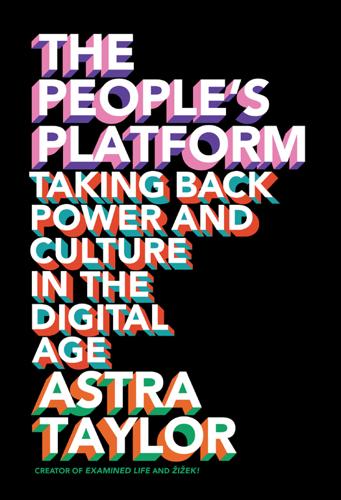
The People's Platform: Taking Back Power and Culture in the Digital Age
by
Astra Taylor
Published 4 Mar 2014
Sadly “winner-take-all” describes more and more areas of our economy. Robert H. Frank and Philip J. Cook, The Winner-Take-All Society: Why the Few at the Top Get So Much More Than the Rest of Us (New York: Penguin Books, 1996). 27. Chris Anderson, The Long Tail: Why the Future of Business Is Selling Less of More (New York: Hyperion, 2006), 8. 28. Anita Elberse, “Should You Invest in the Long Tail?,” Harvard Business Review, vol. 86, nos. 7–8 (July/August 2008). 29. Lee Gomes, “Many Companies Still Cling to Big Hits to Drive Earnings,” Wall Street Journal, August 2, 2006. Also see Hindman, The Myth of Digital Democracy, 93. 30.
…
Ben Sisario, “Digital Notes: ‘Call Me Maybe’ Is an East Coast Hit, Spotify Says, but Gotye Is Tops,” New York Times, June 15, 2012; and “Music’s New Math: Pop’s Old Metrics Don’t Matter,” New York magazine, September 30, 2012. 33. This has been widely noted but one source is the State of the News Media 2010 report. 34. Quoted in Chris Anderson, “Does the Long Tail Create Bigger Hits or Smaller Ones?,” Wired, blog post, November 15, 2008, http://www.longtail.com/the_long_tail/2008/11/does-the-long-t.html. 35. Fang Wu and Bernardo A. Huberman, “The Persistence Paradox,” First Monday 15, nos. 1–4 (January 2010). 36. James Evans, “Electronic Publication and the Narrowing of Science and Scholarship,” Science 321, no. 5887 (July 18, 2008): 395–99. 37.
…
Anita Elberse, a Harvard Business School professor, came to a similar conclusion based on her study of data from music streaming and movie rental services: “Although no one disputes the lengthening of the tail (clearly more obscure products are being made available for purchase every day), the tail is likely to be extremely flat and populated by titles that are mostly a diversion for consumers whose appetite for true blockbusters continues to grow.”28 Closer examination by Elberse and others shows that the leveling power of the long tail has been overstated. Netflix sees eight-tenths of 1 percent of inventory generating 30 percent of all rentals.29 A study of YouTube showed that the top 10 percent of most-played videos made up almost 80 percent of total plays, with the top 20 percent making up almost 90 percent. In music, too, the head still prevails: of the 76,875 new albums released in 2011 that sold at least one copy, the top 1,500 accounted for approximately 90 percent of sales.
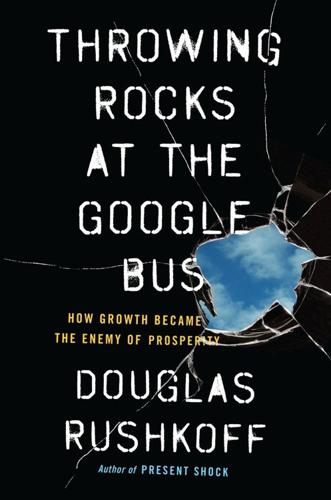
Throwing Rocks at the Google Bus: How Growth Became the Enemy of Prosperity
by
Douglas Rushkoff
Published 1 Mar 2016
Wired editor and economist Chris Anderson called this the “long tail” of widespread digital access, which would support many more times the artists, writers, and innovators than could be supported through traditional distribution channels. His theory was that the low cost of reaching customers online would enable thousands of hitherto unpopular titles to become popular. Since the marginal cost of selling different music files was negligible, Anderson argued, the online merchants would now make a profit by “selling less of more.”7 The marketplace would become more diverse and support more creators as the long tail of former losers fattened.
…
Michael Hauben and Ronda Hauben, “Netizen: On the History and Impact of Usenet and the Internet,” First Monday: Peer-Reviewed Journal on the Internet 3, no. 7 (July 6, 1998). 6. “Organization: Organic,” www.crunchbase.com/organization/organic#/entity. 7. Chris Anderson, The Long Tail: Why the Future of Business Is Selling Less of More (New York: Hyperion, 2006). 8. Anita Elberse, Blockbusters: Hit-Making, Risk-Taking, and the Big Business of Entertainment (New York: Henry Holt and Co., 2013). 9. Will Page and Eric Garland, “The Long Tail of P2P,” Economic Insight, no. 14 (May 9, 2014). 10. Clay Shirky, “Power Laws, Weblogs and Inequality,” shirky.com, February 8, 2003. 11. Elberse, Blockbusters. 12.
…
As an author, my books will be less valuable as objects for sale (people won’t be paying for things like books anymore, anyway) than as the publishing tool through which I accumulate followers on social networks, whom I then sell to brands. So my books had better be brand-friendly and my audiences preselected for their data-richness. And even then I’ll have to make it to the very head of the long tail to be of interest. Even social media deserves a better role in our lives and businesses than this. The unsustainable endgame is an economy based entirely on marketing and advertising. In its currently inflated state, the entirety of advertising, marketing, public relations, and associated research still accounts for less than 5 percent of gross domestic product (GDP), by the very most generous estimates.27 Furthermore, unscrupulous Web site owners have now learned to use robotic ad-viewing programs to juice their revenue from pay-per-click advertising.
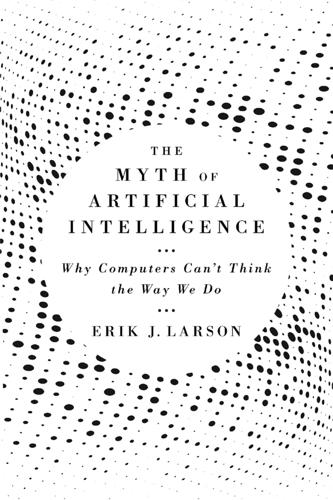
The Myth of Artificial Intelligence: Why Computers Can't Think the Way We Do
by
Erik J. Larson
Published 5 Apr 2021
But then it wouldn’t be a good inductivist turkey; it would have prior knowledge, supplied by humans. Statistical AI ends up with a long-tail problem, where common patterns (in the fat head of a distribution curve) are easy, but rare ones (in the long tail) are hard. Unfortunately, some inferences made by humanly-intelligent AI systems will be in the long tail, not in the sweet spot of induction from discoverable regularities in closed-world systems. In fact, by focusing on “easy” successes exploiting regularities, AI research is in danger of collectively moving away from progress toward general intelligence.
…
Here’s another fact: the limits of a machine learning system’s world are precisely established by the dataset given to it in training. The real world generates datasets all day long, twenty-four hours a day, seven days a week, perpetually. Thus any given dataset is only a very small time slice representing, at best, partial evidence of the behavior of real-world systems. This is one reason why the long tail of unlikely events is so problematic—the system does not have an actual understanding of the real (versus simulated) system. This is enormously important for discussions of deep learning and artificial general intelligence, and it raises a number of troubling considerations about how, when, and to what extent we should trust systems that technically don’t understand the phenomenon they analyze (except as expressed in their datasets used in training).
…
Though named entity recognition is a relatively simple task in natural language processing, even here we see the inherent limitations of purely data-driven approaches. A mention of Blue Box in a post about the product easily becomes a false positive, and gets labeled as about the company. These examples might be out on the long tail of unlikely occurrences, but they’re common enough in ordinary language, and cannot be addressed by machine learning limited by the empirical constraint. All of this is to say that data alone, big data or not, and inductive methods like machine learning have inherent limitations that constitute roadblocks to progress in AI.

The Middleman Economy: How Brokers, Agents, Dealers, and Everyday Matchmakers Create Value and Profit
by
Marina Krakovsky
Published 14 Sep 2015
The answer undoubtedly depends on the costs of those bets. In The Long Tail, Chris Anderson explored the implications of power-law dynamics on the Internet, where the costs of storing and distributing products are low (as they are for digital middlemen like Amazon and Netflix); for such middlemen, Anderson argued, it makes economic sense to carry a wide selection: though each niche product brings in a miniscule amount of revenue, “all those niches add up,” he wrote,51 suggesting that collectively the long tail can rival the hits in the short head, especially if offering a wide variety makes the long tail not only longer but fatter.
…
In The Long Tail, Chris Anderson explored the implications of power-law dynamics on the Internet, where the costs of storing and distributing products are low (as they are for digital middlemen like Amazon and Netflix); for such middlemen, Anderson argued, it makes economic sense to carry a wide selection: though each niche product brings in a miniscule amount of revenue, “all those niches add up,” he wrote,51 suggesting that collectively the long tail can rival the hits in the short head, especially if offering a wide variety makes the long tail not only longer but fatter. Even if the niches don’t add up to much, the digital middleman bears little risk if the marginal cost of each additional item is close to zero. As more data came in after the The Long Tail came out, some scholars have come to disagree with Anderson’s conclusions, most prominently Anita Elberse of Harvard Business School, whose book Blockbusters is a long retort to The Long Tail.52 But there’s no arguing with one of Anderson’s main premises: that the Internet has lowered the costs of distribution. That is why, for example, Jason Horejs can offer so many more pieces for sale on his website than in the Xanadu Gallery in Scottsdale and can charge his artists a lower commission for these online sales.
…
That is not so much an indictment of ordinary performers as it is a direct result of the fact that the most extraordinary people in each field performed so spectacularly well: the superstars pushed the average up significantly despite a large total number of contenders.47 Put another way, the big winners are outliers, just like they would be in a normal distribution—but the losers in the long tail of the distribution are more or less the norm. This is the same pattern we see in start-ups, where the top 15 each year outperform thousands of others. Such stark inequalities are even more prevalent on the Internet, in part because the rapid spread of information creates even greater rich-get-richer effects.
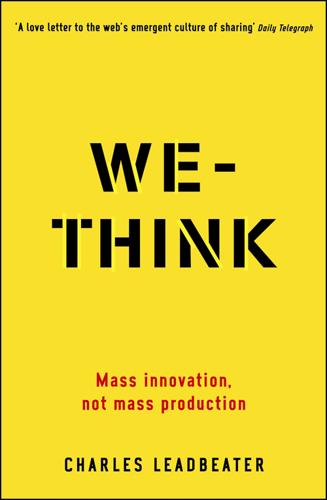
We-Think: Mass Innovation, Not Mass Production
by
Charles Leadbeater
Published 9 Dec 2010
Chris Anderson, the editor of Wired magazine, argues in his book The Long Tail that in more industries a few hit products that reach millions of consumers will trail behind them a very long tail of many products that reach niche markets of a few consumers. Anderson’s long-tail thesis emerged from examining the economics of Netflix, the online movie-rental business, which makes a lot of money from millions of people renting a few blockbusters and almost as much again from a few people each renting hundreds of movies. When this long tail of mini-markets is added together it is as large as the mass market. Serving the long tail can be profitable, Anderson argues, because the web now makes distribution of products to far-flung markets much cheaper.
…
On eBay you can buy everything from a Barbie doll to parts for a Rolls-Royce. Even Wal-Mart’s site cannot match that range. There are limits to how far the long tail can spread. There is no long tail in steel, oil, water, electricity, telephone services, aerospace and defence. Even where there is a long tail, smaller producers making cult products for tiny niche markets struggle to keep their heads above water. There may be little money to be made in the long tail unless, like Netflix, you can aggregate those small pockets of demand. Yet the combination of community and the market pioneered by eBay and Craigslist has created more ways for consumers to find a wider range of products.
…
The members of this group, however, differ over why and how the net will be useful for society. The libertarian, free market wing believe the Internet is creating more diversity and choice, resulting in faster, frictionless markets and an abundance of free culture. In fact, the web is no less than a capitalist cornucopia. Chris Anderson, the editor of Wired and author of The Long Tail is the cheerleader for this camp. The communitarian optimists take a contrary view. They see in the Internet the possibility of community and collaboration, commons-based, peer-to-peer production, which will establish non-market and non-hierarchical organisations. It is not opening a new stage of capitalism and the market but laying the seeds for alternatives to both.
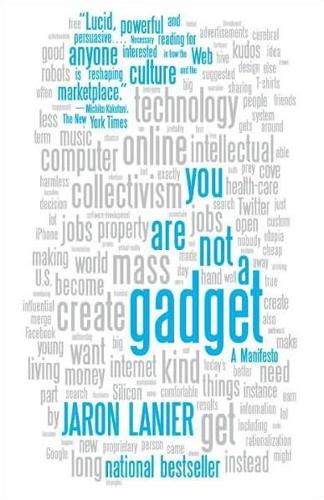
You Are Not a Gadget
by
Jaron Lanier
Published 12 Jan 2010
Kevin Kelly wrote in 2008 that the new utopia is famously good news for two classes of people: a few lucky aggregators, such as Amazon and Netflix, and 6 billion consumers. Of those two, I think consumers earn the greater reward from the wealth hidden in infinite niches. But the long tail is a decidedly mixed blessing for creators. Individual artists, producers, inventors and makers are overlooked in the equation. The long tail does not raise the sales of creators much, but it does add massive competition and endless downward pressure on prices. Unless artists become a large aggregator of other artists’ works, the long tail offers no path out of the quiet doldrums of minuscule sales. The people who devote their lives to making committed cultural expression that can be delivered through the cloud—as opposed to casual contributions that require virtually no commitment—well, those people are, Kevin acknowledges, the losers.
…
This can’t come from encountering just a few heterodox thoughts, but only from a new encompassing architecture of interconnected thoughts that can engulf a person with a different worldview. So, in this book, I have spun a long tale of belief in the opposites of computationalism, the noosphere, the Singularity, web 2.0, the long tail, and all the rest. I hope the volume of my contrarianism will foster an alternative mental environment, where the exciting opportunity to start creating a new digital humanism can begin. An inevitable side effect of this project of deprogramming through immersion is that I will direct a sustained stream of negativity onto the ideas I am criticizing.
…
As a result, anyone might be able to get rich from creative work. The people who make a momentarily popular prank video clip might earn a lot of money in a single day, but an obscure scholar might eventually earn as much over many years as her work is repeatedly referenced. But note that this is a very different idea from the long tail, because it rewards individuals instead of cloud owners. The popularity of amateur content today provides an answer to one of the old objections to Nelson’s ideas. It was once a common concern that most people would not want to be creative or expressive, ensuring that only a few artists would get rich and that everyone else would starve.

What Would Google Do?
by
Jeff Jarvis
Published 15 Feb 2009
But out here in the market, we call it “choice.” Give us more choice and we’ll take it. We’ll gravitate to our own interests, tastes, and communities. The natural state of life, commerce, and media is choice. The impending shift away from the mass-market economy was chronicled famously in Chris Anderson’s era-defining 2006 book, The Long Tail. Anderson said that as the internet creates the means to make, find, and pay attention to an unlimited variety of content about anything, culture and commerce will be less dependent on mass hits. Very few people might watch a single video about how to catch butterflies, but when we can create and watch an unlimited supply of such highly targeted content, the total audience for all these niches together will accumulate to take a sizable share of the audience’s attention.
…
Haque says media 2.0’s three sources of value creation are revelation (finding the good stuff ), aggregation (distribution 2.0), and plasticity (enabling content to be extended through, for example, mashups). This economy, he says, requires openness, decentralization, and connectedness through niches—not blockbusters. The new opportunities lie in the long tail. I know the arguments to the contrary: the Oscars, the Olympics, Harry Potter, The DaVinci Code, American Idol, Wal-Mart. Yes, stipulated, there will still be blockbusters. But let’s also agree to these factors: The tools that enable anyone to create and distribute goods and media will yield almost unlimited choice.
…
And that, in turn, changed the economics of TV content. Networks seeing their shrinking masses could less afford to gamble on expensive dramatic shows, let alone miniseries (remember them?). They were replaced by so-called reality TV, which was not only cheaper but also more sensational. What replaces the mass? The aggregation of the long tail—the mass of niches—does. We each gravitate to our own interests and, thanks to the new and inexpensive tools of content creation online, there’s sure to be something for everyone—and if there isn’t, we can make it ourselves. The 500-channel world never materialized. Instead, the billion-choice universe emerged.

Beautiful security
by
Andy Oram
and
John Viega
Published 15 Dec 2009
Security economics may well provide a platform on which companies can demonstrate the cost-benefit ratios of various kinds of security and derive a competitive advantage implementing them. 164 CHAPTER NINE Platforms of the Long-Tail Variety: Why the Future Will Be Different for Us All A “platform” is a system that can be programmed and therefore customized by outside developers—users—and in that way, adapted to countless needs and niches that the platform’s original developers could not have possibly contemplated, much less had time to accommodate. —Marc Andreessen, founder of Netscape In October 2004, Chris Anderson, the editor in chief of the popular Wired Magazine, wrote an article about technology economics.§ The article spawned a book called The Long Tail (Hyperion) that attempts to explain economic phenomena in the digital age and provide insight into opportunities for future product and service strategies.
…
Summary 64 66 71 72 BEAUTIFUL TRADE: RETHINKING E-COMMERCE SECURITY by Ed Bellis 73 Deconstructing Commerce Weak Amelioration Attempts E-Commerce Redone: A New Security Model The New Model 74 76 83 86 SECURING ONLINE ADVERTISING: RUSTLERS AND SHERIFFS IN THE NEW WILD WEST by Benjamin Edelman 89 Attacks on Users Advertisers As Victims 89 98 vii 7 8 9 10 11 12 viii Creating Accountability in Online Advertising 105 THE EVOLUTION OF PGP’S WEB OF TRUST by Phil Zimmermann and Jon Callas 107 PGP and OpenPGP Trust, Validity, and Authority PGP and Crypto History Enhancements to the Original Web of Trust Model Interesting Areas for Further Research References 108 108 116 120 128 129 OPEN SOURCE HONEYCLIENT: PROACTIVE DETECTION OF CLIENT-SIDE EXPLOITS by Kathy Wang 131 Enter Honeyclients Introducing the World’s First Open Source Honeyclient Second-Generation Honeyclients Honeyclient Operational Results Analysis of Exploits Limitations of the Current Honeyclient Implementation Related Work The Future of Honeyclients 133 133 135 139 141 143 144 146 TOMORROW’S SECURITY COGS AND LEVERS by Mark Curphey 147 Cloud Computing and Web Services: The Single Machine Is Here Connecting People, Process, and Technology: The Potential for Business Process Management Social Networking: When People Start Communicating, Big Things Change Information Security Economics: Supercrunching and the New Rules of the Grid Platforms of the Long-Tail Variety: Why the Future Will Be Different for Us All Conclusion Acknowledgments 150 154 158 162 165 168 169 SECURITY BY DESIGN by John McManus 171 Metrics with No Meaning Time to Market or Time to Quality? How a Disciplined System Development Lifecycle Can Help Conclusion: Beautiful Security Is an Attribute of Beautiful Systems 172 174 178 181 FORCING FIRMS TO FOCUS: IS SECURE SOFTWARE IN YOUR FUTURE?
…
I have arranged this chapter into a few core topics: • “Cloud Computing and Web Services: The Single Machine Is Here” on page 150 • “Connecting People, Process, and Technology: The Potential for Business Process Management” on page 154 • “Social Networking: When People Start Communicating, Big Things Change” on page 158 • “Information Security Economics: Supercrunching and the New Rules of the Grid” on page 162 • “Platforms of the Long-Tail Variety: Why the Future Will Be Different for Us All” on page 165 Before I get into my narrative, let me share a few quick words said by Upton Sinclair and quoted effectively by Al Gore in his awareness campaign for climate change, An Inconvenient Truth, and which I put on a slide to start my public speaking events: It’s difficult to get a man to understand something when his salary depends on him not understanding it.

The Internet Is Not the Answer
by
Andrew Keen
Published 5 Jan 2015
The scarcer the product, the more demand from buyers, the higher the price. And if you didn’t think the price was right, then you could always go next door and buy there. It was a perfect market. It was a perfect cultural experience, too. The former Wired editor in chief Chris Anderson invented the idea of the “long tail” to describe the supposed cornucopia of self-produced cultural goods available on the Web. But Berwick Street, that narrow stump of a Soho street, was the real long tail of musical diversity—existing years before Anderson came out with his theory. If you searched hard enough on the Golden Mile of Vinyl and in Soho’s many other independent record shops, you could dig up the most obscure recordings.
…
“In today’s markets where, thanks to the Internet, buyers have easy access to millions and millions of titles,” she argues, “the principle of the blockbuster strategy may be more applicable than ever before.”7 “Winners take all,” mourns Robert Frank about a world dominated by a tiny aristocracy of creative artists.8 It’s the opposite of Chris Anderson’s profoundly flawed theory of the long tail, with its nostalgic guff of a cottage industry of middle-class cultural producers all making a reasonable living from the digital economy. The more abundant the online content, the more dramatic the contrast between the massive success of a few hits and the utter obscurity of everything else. Elberse notes, for example, that of the 8 million tracks in the iTunes store during 2011, 94%—that’s 7.5 million songs—sold fewer than a hundred units, with 32% selling just a single copy.
…
“The recorded-music tail is getting thinner and thinner over time,” Elberse concludes about a music industry dominated by fewer and fewer artists.9 In 2013, the top 1% of music artists accounted for 77% of all artist-recorded music income while 99% of artists were hidden under what one 2014 industry report, titled “The Death of the Long Tail,” called “a pervasive shroud of obscurity.”10 This has been caused in part by the increasing monopoly of online music retail stores like iTunes and Amazon and partly by consumers being subjected to the tyranny of an overabundance of choice. This income inequality in the industry is reflected in live music, too, where, between 1982 and 2003, the revenue share of the top 1% of touring acts more than doubled, while the revenue share of the bottom 95% of artists fell in the same period by more than half.

Mood Machine: The Rise of Spotify and the Costs of the Perfect Playlist
by
Liz Pelly
Published 7 Jan 2025
He had this problem: Which way are we going to go? And he decided to fund both solutions simultaneously, and see which one won out. Ultimately, especially after going public, the industrial music system won.” The concept of the “long tail creator” harkens back to an idea first put forth by Wired’s Chris Anderson, first in a 2004 article and then in his 2006 book The Long Tail, suggesting that the internet would democratize culture by ushering in an era of niche, small-scale artists, demoting the cultural power of the superstar system. It argued that low-demand products could, in aggregate, amount to a larger market share than the blockbuster hits.
…
And that this mass sea of obscure books, movies, and music would not just make culture more interesting—it would also be great for business. In the mid-2000s, this idea was very convincing to many tech entrepreneurs. Daniel Ek was hooked; before his company had launched in the U.S., a 2010 profile in the Telegraph reported that Ek was “so inspired” by The Long Tail that he gave out copies to the Spotify staff. Indeed, Ek’s professed personal mission of “one million artists making a living off of their music” can feel like a randomly chosen target, but it makes more sense in this context—in fact, it seems like a mission statement that could have been written by Chris Anderson himself.6 Through 2017 and 2018, Ek and his teams invested heavily in “long tail creator”–facing initiatives, with a focus on so-called DIY and independent artists.
…
* * * The staunchly independent art-rock band Deerhoof, formed in 1994, lived through this shift. According to its drummer Greg Saunier, the dawn of social media and the corporatization of online life brought mythologies about “leveling the playing field”—the same ones upheld by Daniel Ek and his fellow champions of the “long tail” model. The false promise was that soon, any “Joe Schmo was going to be able to compete with Beyoncé” if their song was good enough, as Saunier put it to me. “There’s a kind of twisted irony at play,” Saunier said. “Someone like Daniel Ek hopes he can fool us into seeing this as a golden opportunity to compete with major pop stars, with their million-dollar production values and slickness and marketing.

Googled: The End of the World as We Know It
by
Ken Auletta
Published 1 Jan 2009
Bressler, September 26, 2008. 3 Short and pugnacious: Ken Auletta, “The Invisible Manager,” The New Yorker, July 27, 1998. 4 Google’s private books revealed: from August 2004 Google IPO registration with the Securities and Exchange Commission. 4 Karmazin’s destination: description of 2400 Bayshore Parkway offices from visit by author, April 18, 2008; author interviews with David Krane, April 18, 2008, and with Marissa Mayer, September 18, 2008; and from Google video of headquarters, provided by Google. 6 25.2 billion Web pages: WorldWideWebSize.com, February 2, 2009. 7 It was Google’s ambition: Schmidt and Page speech at Stanford on May 1, 2002, as seen on YouTube. 7 several hundred million daily searches: Schmidt and Page speech at Stanford on May 1, 2002, as seen on YouTube. 7 the number of daily searches is now 3 billion: internal Google documents. 7 “our business is highly measurable”: author interview with Eric Schmidt, September 15, 2008. 8 $3 million spent: Advertising Age, September 11, 2008. 8 $172 billion spent in the United States on advertising, and the additional $227 billion spent on marketing: Zenith OptimediaReport, April 2009. 9 Mayer ... remembered the meeting vividly: author interview with Marissa Mayer, September 18, 2008. 9 “If Google makes”: author interview with Eric Schmidt, April 16, 2008. 9 “the long tail”: Chris Anderson, the Long Tail: Why the Future of Business Is Selling Less of More, Hyperion, 2006. 10 “aggregate content”: author interview with Larry Page, March 25, 2008. 10 from a peak daily newspaper circulation: Nicholas Carr, Big Switch: Rewiring the World, From Edison to Google, Norton; and The Project for Excellence in Journalism, “State of the News Media Report,” March 2007. 10 those networks... attract about 46 percent of viewers: Nielsen data on the 2008-9 season, May 2009. 12.
…
Google fervently believes it is shaping a new and better media world by making the process of buying advertising more rational and transparent. In its view, the company serves consumers by offering advertising as information. It invites advertisers to bid for the best price, and invites media companies to slim their sales forces and automate part of their advertising and to reach into what author Chris Anderson dubbed “the long tail,” in this case to those potential clients who rarely advertised but would if it was targeted and cheap to do so. Google also invites users to freely search newspapers, books, and magazines in what it sees as both free promotion and an opportunity for publications to sell advertising off this traffic.
…
He was wary of its deals with EchoStar satellite television and Clear Channel radio and some newspapers, allowing Google to serve as the media-buying middleman for their online ads. He was rightly concerned that Google could be trying to usurp his role. If that was Google’s intention, Gotlieb did not believe they would succeed. He welcomed Google reaching into the long tail to match advertisers with smaller Web sites. But he did not think Google/DoubleClick could make inroads with brand advertisers, in part because these clients want to be serviced, to have relationships with media agencies they can consult. And he also expressed skepticism that Google would loom as large in the future as it now does.
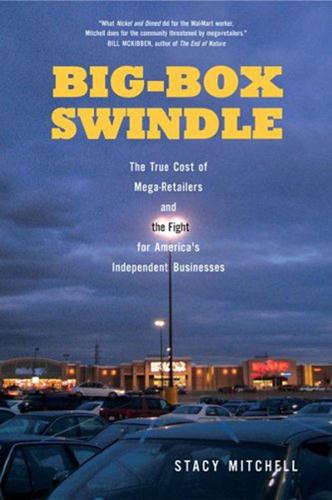
Stacy Mitchell
by
Big-Box Swindle The True Cost of Mega-Retailers
and
the Fight for America's Independent Businesses (2006)
Although they seem grateful to find such films at Box O‰ce Video, many still continue to rent the bulk of their movies from the Blockbuster outlet a mile away, not making the connection between their regular patronage and Herskovitz’s ability to keep his business, with its broad library of films, afloat.28 MONOPOLIZED CONSUMERS 151 THE LONG TAIL? How have online retailers like Amazon.com and Netflix, which stock large numbers of titles, changed these dynamics? An idea that has caught fire in some circles is the notion of the “long tail.” It refers to the basic demand curve governing many products, which starts high and then drops steeply once you move beyond the top sellers, petering out and flatlining across a large number of items (books, albums, or whatever) that sell in relatively small numbers.
…
This passion has a real value in the marketplace—certainly to creators and fans, but also to those who have a casual interest, as well as to the overall vitality of our culture and ultimately our democracy, which, after all, derives its sustenance from the free flow of ideas. MONOPOLIZED CONSUMERS 153 Another problem with the long tail argument is that the challenge for people who produce creative works is less about access to customers than it is about getting their attention. “I remain skeptical [of the long tail theory],” said David Kirkpatrick, who wrote the report on midlist books. “In my experience covering the book industry for the New York Times, the crucial ingredient is not the availability of a book; the crucial ingredient is getting public attention for a book.
…
Tod Herskovitz, interview, Nov. 8, 2005. 27. Herskovitz interview; Blockbuster CFO Larry Zine provided the figure on titles during a conference call with investors on Feb. 17, 2005, as transcribed by Events Transcripts. 28. Herskovitz interview. 29. Chris Anderson, “The Long Tail,” Wired, Oct. 2004, www.wired.com/wired/ archive/12.10/tail.html. 30. Anderson, “The Long Tail”; Blockbuster CFO Larry Zine provided the figure on titles during a conference call with investors on Feb. 17, 2005, as transcribed by Events Transcripts. 31. Sheri LaPres, interview, Nov. 29, 2005; Paul Bond, “Amazon’s New Lease on Shelf Life,” Reuters, July 26, 2005; Chris Anderson, e-mail communication, Nov. 15, 2005. 32.
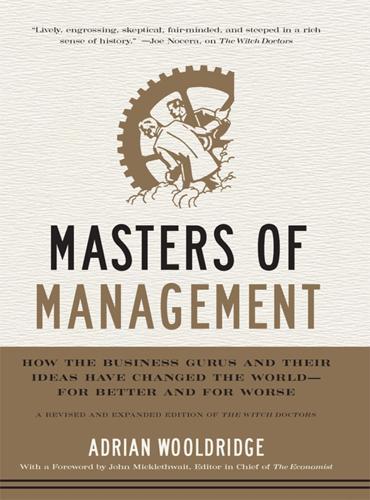
Masters of Management: How the Business Gurus and Their Ideas Have Changed the World—for Better and for Worse
by
Adrian Wooldridge
Published 29 Nov 2011
There is nobody in the tech world who does not know Chris Anderson or respect his opinions. Anderson made his name with The Long Tail: How the Future of Business Lies in Selling More of Less (2006). The Long Tail is the product of a melding of the new business culture and the old one. The book started life as a blog in which Anderson conducted a sort of online seminar with his readers. It ended up as an old-fashioned business best-seller: a carefully packaged “big idea” that was supposed to reveal the secret of prospering in the new economy and that also includes a business tool that managers can apply to their businesses, the “long tail” of the title. This was Silicon Valley repackaged for the business traveler class.
…
The rise of the Internet has shaken the management theory industry equally thoroughly. Most of the leading high-tech gurus made their careers in high-tech companies or technology journalism rather than in business schools. Don Tapscott (Wikinomics and Macrowikinomics) started out in enterprise collaboration. Chris Anderson (The Long Tail) is a long-standing technology journalist, most recently as editor of Wired. Jeff Jarvis (What Would Google Do?) made his reputation blogging about new media at Buzzmachine.com. Clay Shirky (Here Comes Everybody and Cognitive Surplus) is a jack-of-all-trades (including theater director, lecturer, and consultant) who happens to have a lot of clever ideas about the new media.
…
YouTube, which adds twenty hours’ worth of new video every minute, throws up a few unmissable videos every day, funny, tragic, or riveting, among all the dross. “Talent is not universal,” Anderson argued, “but it’s widely spread. Give enough people the capacity to create, and inevitably gems will emerge.”10 Whatever you think of the cultural impact of the long tail, there is no doubt that it is producing a new economy, with new giants emerging to take advantage of the world of micro-markets. eBay, which was born as recently as 1996, is now worth in excess of $35 billion, with more than 200 million registered users shifting more than $40 billion of merchandise every year.
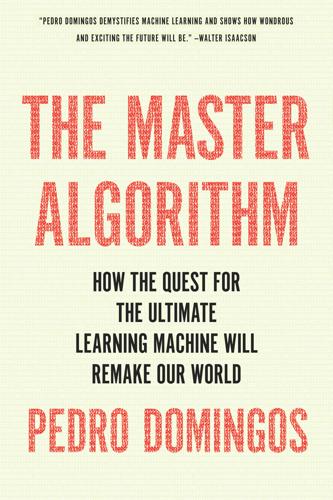
The Master Algorithm: How the Quest for the Ultimate Learning Machine Will Remake Our World
by
Pedro Domingos
Published 21 Sep 2015
Netflix’s algorithm has a deeper (even if still quite limited) understanding of your tastes than Amazon’s, but ironically that doesn’t mean Amazon would be better off using it. Netflix’s business model depends on driving demand into the long tail of obscure movies and TV shows, which cost it little, and away from the blockbusters, which your subscription isn’t enough to pay for. Amazon has no such problem; although it’s well placed to take advantage of the long tail, it’s equally happy to sell you more expensive popular items, which also simplify its logistics. And we, as customers, are more willing to take a chance on an odd item if we have a subscription than if we have to pay for it separately.
…
In retrospect, we can see that the progression from computers to the Internet to machine learning was inevitable: computers enable the Internet, which creates a flood of data and the problem of limitless choice; and machine learning uses the flood of data to help solve the limitless choice problem. The Internet by itself is not enough to move demand from “one size fits all” to the long tail of infinite variety. Netflix may have one hundred thousand DVD titles in stock, but if customers don’t know how to find the ones they like, they will default to choosing the hits. It’s only when Netflix has a learning algorithm to figure out your tastes and recommend DVDs that the long tail really takes off. Once the inevitable happens and learning algorithms become the middlemen, power becomes concentrated in them. Google’s algorithms largely determine what information you find, Amazon’s what products you buy, and Match.com’s who you date.
…
Competing on Analytics, by Tom Davenport and Jeanne Harris (HBS Press, 2007), is an introduction to the use of predictive analytics in business. In the Plex, by Steven Levy (Simon & Schuster, 2011), describes at a high level how Google’s technology works. Carl Shapiro and Hal Varian explain the network effect in Information Rules (HBS Press, 1999). Chris Anderson does the same for the long-tail phenomenon in The Long Tail (Hyperion, 2006). The transformation of science by data-intensive computing is surveyed in The Fourth Paradigm, edited by Tony Hey, Stewart Tansley, and Kristin Tolle (Microsoft Research, 2009). “Machine science,” by James Evans and Andrey Rzhetsky (Science, 2010), discusses some of the different ways computers can make scientific discoveries.
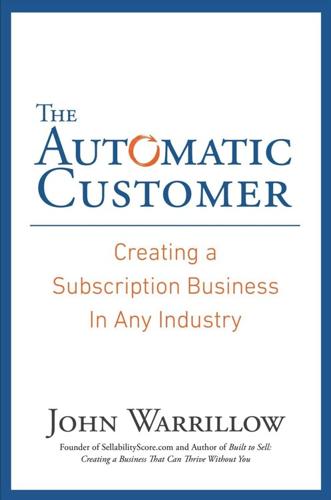
The Automatic Customer: Creating a Subscription Business in Any Industry
by
John Warrillow
Published 5 Feb 2015
The world’s largest retailer wanted to know which snacks resonated enough to make you want to buy the full-size version. Goodies Co. subscribers helped Walmart understand how the consumer’s appetite for snacks had evolved, which helped it buy the right items to sell in its stores. The Long Tail As Chris Anderson argued in The Long Tail, the Internet has lowered the cost of distribution for many products and services, and our appetites have broadened as a result. As Anderson recounts, there was a time when you bought books in a bookstore. The bookstore paid rent and therefore had to stock only the best-selling books to ensure that sales revenue per square foot was high enough to cover its rent and staff.
…
However, the economics of information publishing deteriorated with the rise of the Internet, which eliminated distribution costs and commoditized content to such an extent that consumers began to expect it to be free. Not only did consumers expect content for free; the kind of content they were interested in also became more esoteric. As former Wired magazine editor Chris Anderson revealed in his best seller The Long Tail, now that the entire world’s content is only a Google search away, we are no longer satisfied with the broad general interest information provided by mainstream publishers; our appetite for content has become more specialized. If you love the sport of curling, you can consume as much curling information as you want for free online without ever picking up a newspaper, which might run a curling story a couple of times per winter at best.
…
If you love chocolate, you can buy a Dairy Milk bar at your local Walgreens, but increasingly chocolate lovers are subscribing to New York–based Standard Cocoa for $25 per month and receiving a hand-picked selection of chocolate from around the world each month. Customers want to express their individuality, and increasingly they are using subscriptions to do that. Competing in the New Subscription Economy These four factors—the access generation, light-switch reliability, delicious data, and the long tail—have led some of the world’s most successful companies and promising start-ups to shift their business models to a focus on subscriptions. Take Apple, for example. Apple used to be thought of as a product for consumers, not a product for businesses. Businesses shunned Apple in favor of industry standard Microsoft—but that was before Apple, now the world’s most successful technology company, found a new way to get customers for its products.

People Powered: How Communities Can Supercharge Your Business, Brand, and Teams
by
Jono Bacon
Published 12 Nov 2019
It seems counterintuitive to our one-size-fits-all culture of generic blockbuster movies, derivative pop stars, mass-market fast food, and other things that appeal to the average of all our interests. Surely we should be more homogenized, not less? Back in 2006, my friend Chris Anderson delved into the value of niches in his book, The Long Tail. In it he shared: The theory of the Long Tail is that our culture and economy is increasingly shifting away from a focus on a relatively small number of ‘hits’ (mainstream products and markets) at the head of the demand curve and toward a huge number of niches in the tail. As the costs of production and distribution fall, especially online, there is now less need to lump products and consumers into one-size-fits-all containers.
…
“/r/science metrics (Science),” Reddit Metrics, accessed May 9, 2018, http://redditmetrics.com/r/science. “/r/Sneakers metrics (Sneakerheads Unite!),” Reddit Metrics, accessed May 9, 2018, http://redditmetrics.com/r/Sneakers. 7. Internet Archive, “The Long Tail,” Wired Blogs, September 8, 2005, https://web.archive.org/web/20170310130052/http://www.longtail.com/the_long_tail/2005/09/long_tail_101.html. 8. “PSY–Gangnam Style,” 4:12, YouTube video, July 15, 2012, https://www.youtube.com/watch?v=9bZkp7q19f0. 9. “Study Finds Our Desire for ‘Like-Minded Others’ Is Hard-Wired,” University of Kansas, February 23, 2016, https://news.ku.edu/2016/02/19/new-study-finds-our-desire-minded-others-hard-wired-controls-friend-and-partner. 10.
…
Index Abayomi, 1–3, 7, 9, 19, 35, 278 abuse of system, 158, 217, 233, 234 access, 7–8, 16–17, 54–55, 225, 226 accountability, 139, 146, 148, 149 actions, tracking, 158–59 active participation, 109 adaptability, 176–77, 268–69 Adobe, 244 advertising, 195–96 advocacy, 23–24, 49, 111 Airbnb, 57 ambiguity, 155–56 American Physical Society, 139 Amnesty International, 18 Anderson, Chris, 46, 47 Android platform, 65 Ansari XPRIZE, xviii Apache, 6, 26 Apple, 6, 58, 128 approachability, 69–70 Ardour, 44, 52, 66 Areas of Expertise, 172–75 Ariely, Dan, 17 assets, building, 68–69 assumptions, 137, 271 asynchronous access, 54 attendance, 157 attendees, summit, 247–49 audience personas, 100, 108–19 in Bacon Method, 33 choosing, 109–12 content for, 194–95 creating, 114–16 examples of, 116–19 on Incentives Map, 230–32 On-Ramp Model for, 131, 135–38 Participation Framework for, 130 prioritizing, 112–13 productive participation by, 162–67 and relatedness, 107 audience(s) access to, 7–8 assumptions about, 137 and community strategy, 13 irrational decision making by, 101–8 for local communities, 5 surprising, 73–74 understanding your, 33, 99–100 authenticity, 75, 111, 183, 224 authority, 55–56, 200–201 Author persona, 166–67 automated measuring of condition, 217–18 autonomy, 105–6, 123 awareness, 22–24, 59–61, 192 Axe Change service, 14 Axe-Fx processors, 49–50 backlog, 150–51 Bacon Method, 32–34 Bahns, Angela, 47 Bassett, Angela, 237 Battlefield, 24, 128, 228 behavioral economics, 102–4 Bell, Alexander Graham, 153 belonging, sense of, 15, 18, 20, 143, 187, 215 Bennington, Chester, 183, 184 Big Rocks, 33, 88–96 and cadence-based cycles, 168–70 in community strategy, 94–95 and critical dimensions, 157, 161 defined, 88–89 departmental alignment on, 263 examples of, 91–94 format and key components of, 89–91 and Quarterly Delivery Plan, 34, 145–46, 148, 149 realistic thinking about, 95–96 Black Lives Matter, 18 blocked (status), 147 blogs, 193, 275 Bosch, 13 brand awareness, 24, 59–60 brand recognition, 85 Branson, Richard, 190 Buffer, 214 Build Skills stage, 132, 136, 137 business cards, 241–42 buy-in, 67, 85 cadence, operating on, 34, 264–66 Cadence-Based Community Cycle, 167–70, 264 Canonical, 1, 121, 151, 167, 245 capabilities, persona, 114, 116–18 Capital One, 13 career experience, 83 CasinoCoin, 244 Casual members, 129, 140–42 advancing, 196–97 engagement with, 198–99 incentivizing, 219, 221, 226–27 maturity model for, 166 mentoring, 203 CEOs, reporting to, 260 certainty, 105 Champions model, 49–52, 63–64, 66–67, 113, 260 chat channel, 250 check-ins, 267 civility, 187 clarity, 69–72, 138–39, 234 closing party, 250 coaching, 82–83, 205–6 Coca-Cola, 57 Coffee Bean Rewards app, 145 Colbert, Stephen, 73–74 collaboration, 8–9, 74–75, 185–86 Collaborators model, 52–56, 64–67, 86, 260, see also Inner Collaborator community; Outer Collaborator community commitment, 122 communication, 121 Community Associate, 255 Community Belonging Path, 16–20 community building, 14 additional resources on, 274–76 Bacon Method of, 32–34 as chronological journey, 127–28 consultations on, 276–77 continuing to learn about, 272–74 defining your value for, 77–78 end-to-end experience in, 125–26 fundamentals of, 15–16 getting started with, 37–38, 62 key principles of, 67–74 monitoring activities related to, 206–8 risks associated with, 154–55 tools for, 8 see also successful community building community–community engagement, 157 community culture, 30–31, 70–72, 179–88 Community Director, 254–58, 260 Community Engagement Model(s), 49–67 in Bacon Method, 33–34 Champions model, 49–52 Collaborators model, 52–59 and Community Value Statement, 80 Consumers model, 45–48 importance of selecting, 43–45 and marketing/public awareness, 59–61 scenarios for selecting, 61–67 Community Evangelist, 255 community(-ies) defined, 13–15 digital, 2–3, 5–13, 237 experimenting in, 123 foundational trends in, 7–9 future of, 35, 277–79 local, 3–5 power of, 7 social dynamics of, 15–16 value generated by, 20–29 Community Launch Timeline Template, 191 Community Leadership Summit, 179, 239 community management staff, 254–61 Community Managers, 78, 125, 126, 195, 255–56, 260–61 Community Mission, 40–43, 169 Community Mission Statement, 42, 80, 113 Community On-Ramp Model, 33–34, 130–38 community overview cards, 241–42 Community Participation Framework, 128–45 building community based on, 151–52 and building engagement, 138–44 Community On-Ramp Model in, 130–38 described, 128–30 engagement strategy to move members along, 196–206 focusing on creativity and momentum in, 209 incentives and rewards in, 145 incentives on, 211–13 incentivizing transitions in, 218–22, 226–27 mentoring in, 202–6 Community Personal Scaling Curve, 184 Community Persona Maturity Model, 163–67 Community Promise, 70–71 Community Specialist, 255 community strategy, 30 Big Rocks in, 94–95 changing, 96, 208 control over and collaboration on, 74–75 Core members’ contributions to, 201 execution of, 253–54 importance of, 13 integration of, in organization, 261–68 learning from implementation of, 268–69 planning, 39 Regular members in, 143 risks with, 29–32 and SCARF model, 105–8 variability in, 30 community summits, 245–51 finalizing attendees and content for, 247–49 follow through after, 250–51 running, 249–50 structure for, 246–47 community value, 164–67 Community Value Proposition, 175 Community Value Statement, 80–88 and Big Rocks, 89, 95 in cadence-based cycle, 169 maintaining focus on, 97 and on-ramp design, 135–36 prioritizing audience personas based on, 113 updating, 83–84, 87–88 value for community members in, 80–84 value for organization in, 84–88 company–community engagement, 157 competitions, 194 complete (status), 147 CompuServe, 5 conditions, for incentives, 216–18, 230–32 Conference Checklist, 241 conferences, 194, 195, 239, 240–43 connection(s) desire for, 9 for Regular members, 200 constructive criticism, 122–23 consultations, on community building, 276–77 Consumers model, 45–48, 62–63, 260 content for community summits, 247–49 in Growth Strategy, 192–95 for launch, 189 as source of value, 82 Content Creators (persona), 110–11, 113–15 content development in Champion communities, 49–50 in Collaborator communities, 52–56 by communities, 26–27 as source of value, 82, 86–87 contests, 194 contributions, to communities, 17, 19 control over community strategy, 74–75 over Regular members, 143 co-organizing events, 239 Core members, 129, 140 advancement for, 196–97 characteristics of, 143–44 at community summits, 242 engagement with, 201–2 incentivizing, 215, 219–20, 222, 227 maturity model for, 165, 166–67 mentoring for, 203, 205 percentage of, 141 creativity, 209 critical dimensions, 156–58, 161 criticism, 122–23, 176 cross-functional communities, 88 crowdfunding, 23–24 Cruz, Ted, 73–74 culture, community, see community culture Culture Cores, 181–88 customer engagement, 20–22 customer growth, as source of value, 85 Customer Relationship Management (CRM) system, 21 Cycle Planning, 168 Cycle Reviews, 268 dashboards, 160–61 data analysis, 207, 208 Davis, Miles, 182 Debian, 6, 26 decision making irrationality of, 101–8 pragmatism about, 184 SCARF model of behavior, 104–8 System 1 and 2 thinking, 102–3 unpopular decisions, 186 decision paralysis, 38, 106 dedicated events, organizing, 239–40 delayed (status), 147 delivery commitment to, 263–64 successful, 162, 167–70 delivery, as critical dimension, 157 delivery plans, see Quarterly Delivery Plan demonstrations, 194, 244 departmental alignment, 263–64 developer community, Big Rocks for, 93–94 Developer Relations personnel, 255 Developers (persona), 111, 114, 115 Diamandis, Peter, 40 Dickinson, Emily, 211 difficulty, of condition, 217 diffusion chain, 54 Digg, 12–13 digital communities early, 5–7 evolution of, 9–13 foundational trends in, 7–9 in-person events for, 237 as local and global communities, 2–3 digital interaction, and in-person events, 251 digital training, 243–44 dignity, 17 discipline, for community building, 31 Discourse, 66, 228, 233, 267 discovery, in gamification, 233 discussion forums, 49 Disney, 128 Docker, 12, 56 documentation, 274 domain expertise, 256, 257 Dreamforce conference, 22 Drupal, 204 Early Adopter program, 189–90 Editorial Calendar, 192–95 education (about product or service) in communities, 24–25 as source of value, 82 efficiency, as critical dimension, 157 ego calibration, 234–35 empathy, 186–87 employees openness for, 182–83 training and mentoring for, 266–68 empowerment, 55–56, 222 end-to-end experience, 59, 125–26 engagement as Area of Expertise, 174 Big Rocks related to, 93–94 with community, 72 in Community On-Ramp Model, 133–34, 136, 137 and Community Participation Framework, 138–44 in Community Participation Framework, 129 at conferences, 242 critical dimensions related to, 157 customer and user, 20–22 and Growth Strategy, 192 positivity and, 185 quality of, 159 rules for engaging with community members, 119–22 and submarine incentives, 226 and understanding audience, 99–100 Engagement Strategy, 181, 196–206 engineering department, community leadership staff reporting to, 260 equal opportunity, in Collaborator communities, 55, 58–59 estimated units, on Incentives Map, 231, 232 Event Evolution Path, 238–40 Event Organizers (persona), 111, 114–15, 117–18 events in-person, see in-person events online, 193 Everett, Noah, 224 execution of community strategy, 253–54, 268 successful, 162, 167–70 expectations clear, 70–72 in gamification, 234 in great experience, 127 related to Big Rocks, 95–96 experience, of audience persona, 114, 116, 118 experimentation, 123, 171 to build organizational capabilities, 206–8 with events, 251 expertise of community leadership staff, 256, 257 of community members, 28 in digital communities, 8 as source of value, 83 Exploding Kittens game, 24 extrinsic rewards, 214, 215, 216 on Incentives Map, 231 submarine incentives for, 224–25 Facebook, 13, 24 failure, as opportunity for improvement, 151 fairness in SCARF model, 107–8 of submarine incentives, 225 Fans as audience persona, 110, 113 community model for, 44, 62–63 fears, of audience persona, 114–15, 117, 118 Fedora, 66, 264 feedback about audience personas, 116 on Big Rocks, 94–95 from communities, 72–73 and community culture, 186 from Core members, 202 on mission statement, 41 on Organizational Capabilities Maturity Model, 176 in peer-based review, 204 from Regular members, 143, 200 Figment community, 10 Final Fantasy, 128 financial commitment, and creating value, 96 Firefox, 23, 209 Fitbit, 139, 145 focus for community building, 31 on Community Value Statement, 97 follow through after community summits, 250–51 after conferences, 242–43 formal experience, 114 forums, 91–92, 158 founders, community leadership staff reporting to, 260 Four Rules for Measuring Effectively, 156–61 Fractal Audio Systems, 14–15, 49–50 freeloaders, 54 fun, in community experience, 84 gamification, 232–35 Garmin, 190 GitHub, 24 global communities, digital communities as local and, 2–3 Global Learning XPRIZE Community, 189 GNOME, 26 GNU community, 6 goals for community summit sessions, 249 of Core members, serving, 202 for employee participation with community, 267 in incentives, 214 on Incentives Map, 230–32 for new hires, 259 Google, 13, 57, 58, 65, 128 Gordon-Levitt, Dan, 11–12 Gordon-Levitt, Joseph, 11–12, 219 governance, in Inner Collaborator communities, 66 gratification, 120, 127 group dynamics, 100, 119–22 group experiences, referral halo for, 61 grow, willingness to, 257 Growth (Area of Expertise), 174 growth, as critical dimension, 157 Growth Strategy, 181, 188–96 growth plan, 192–96 launch plan, 189–91 guest speakers, 238–39 habits, building, 142, 267 HackerOne, 69–70, 194, 214 Harley Owners Group, 132 help asking community members for, 120, 144 as source of value, 82 high-level objectives, see Big Rocks hiring, 27–29, 256 hiring away approach, 258–59 HITRECORD, 11–12, 219 Hoffman, Reid, 152 HomeRecording.com community, 81 humility, 187, 257 hypothesis testing, 207–8, 271–72 IBM, 6 idealism, 153–54 IGN (Imagine Games Network), 47–48 Ikea Effect, 101–2 impact in Community Belonging Path, 18 and Engagement Strategy, 199 multiplying, with communities, 2, 3, 9 imperfections, 188 imposter syndrome, 142 inauthentic participation, 233 incentives, xvii–xviii, 197 in Community Participation Framework, 145 on Community Participation Framework, 211–13 components of, 213–18 in Growth Strategy, 196 maintaining personal touch with, 235 in Outer Collaborator communities, 65 power of offering, 213–18 stated vs. submarine, 218–27 Incentives Map, 34, 229–32 Incentive Transition Points, 218–19 stated incentives for, 221–22 submarine incentives for, 226–27 incentivization building engagement with, 140 in Community Participation Framework, 130 Incubation stage, 171, 172 independent authenticity, 111 Indiegogo, 23 individual value, 164–67 influence, psychological importance of, 71 Influencing phase (Product Success Model), 52 information in community, 121 in digital communities, 8 infrastructure, for launch, 189 Inner Collaborator community, 56–58, 65–67, 86, 229 Inner Developers (persona), 111 in-person events community summits, 245–51 conferences, 240–43 and digital training vs. training workshops, 243–45 Event Evolution Path and strategy for, 238–40 fusion of digital interactions and, 251 in Growth Strategy, 195 launch, 190–91 in local communities, 4–5 managing, 237–38 value of, 77–78 in progress (status), 147 insight, from communities, 28, 72–73 intangible value, 78–79, 83 Integration stage, 171–72 Intel, 57 intentionality, 39, 69–70, 187 Intention stage, 171, 172 internal communities, 13 Community Engagement Model for, 66–67 importance of culture for, 180 personal interaction in, 185 value of, for community members, 83 Internet, 5–7, see also digital communities Internet Explorer, 23 intrinsic rewards, 215, 224–25 involved teams, on Quarterly Delivery Plan, 147, 148 Iron Maiden, 39 Jeep, 139 Jenkins, 26 job candidates, community members as, 27–29 job descriptions, community leadership staff, 258 Jokosher, 199 jQuery, 204 Kahneman, Daniel, 102 karma (Reddit), 228 Key Initiatives, for Big Rocks, 90, 91–93 keynote addresses, 245–47 Key Performance Indicators (KPIs), 90–94 cadence-based cycles for delivery of work on, 169, 170 on Quarterly Delivery Plan, 146, 148–50 tracking progress on, 159–60, 160–61 Kickstarter, 12, 23 Kubernetes, 26, 53, 66, 134, 204 labor, community members as source of, 120 The Late Show with Stephen Colbert (television series), 73–74 launch event, 190–91 launch plan, 189–91 leaders, community, 3, 4 leadership as Area of Expertise, 174 and autonomy in organizations, 123 clear and objective, 69–70 in community culture, 186 community involvement by, 262 by Core members, 144 in Inner Collaborator communities, 66 leadership value, 165, 167 lead generation, 28–29 A League of Their Own (film), 39 learning about community building, 272–74 from community strategy implementation, 268–69 Learning phase (Product Success Model), 51 Lego, 9, 10 Lego Ideas, 10 Lenovo, 57 Leonardo da Vinci, 37 Lindbergh, Charles, xvii Linkin Park, 183 Linux, 6, 26, 273–74 Linux Foundation, 26, 74 live stream, 250 local communities decline of, 3–5 digital communities as global and, 2–3 The Long Tail (Anderson), 46 Ma, Jack, 77 Ma Jian, 125 Make:, 195 Management (Area of Expertise), 173–74 marketing, 22–24 audience personas in, 108–9 and Community Engagement Model, 59–61 as source of value, 85 marketing department, community leadership staff reporting to, 260 Mastering phase (Product Success Model), 51–52 Mattermost, 214 maturity models, 34 Community Persona Maturity Model, 163–67 Organizational Capabilities Maturity Model, 171–76 meaningful work, 9, 17–18, 27, 41 measurable condition, 217 measurable goals, 160 measurable value, in Community Persona Maturity Model, 164–65 measuring effectively, rules for, 156–61 meeting people, as source of value, 82 meetings after conferences, 242–43 with conference attendees, 241 in local communities, 4–5 Meetup.com, 133 meetups, organizing, 239 mentoring for Casual members, 142 for community-building employees, 267–68 for community leadership staff, 256 by community members, 29 in Community Participation Framework, 202–6 of new hires, 259 as source of value, 82–83 meritocracy, 55 message boards, 5–6 Metal Gear Solid, 128 Metrics (Area of Expertise), 175 Mickos, Mårten, 69–70, 74, 262 Microsoft, 6, 13, 23 Minecraft, 25 Minecraft Forum, 25 Minecraft Wiki, 25 Minimum Viable Product, 68–69 mission statements, 32, 42, 80, 113 momentum, in Engagement Strategy, 198 momentum effect, 209 in Growth Strategy, 188, 195 in marketing and brand/product awareness, 60–61 motivations for audience persona, 114, 117, 118 for community members, 119–20 Mozilla, 23 MySpace, 12–13 NAMM music show, 239 need, for community, 30 networking, 28–29, 242 New York Times, 23 Nextcloud, 134 niche interests, 45–47 Nintendo, 9, 228 norms, cultural, 70, 130, 180, 182 notification, 147, 148 not started (status), 147 objectives, see also Big Rocks objectivity, of leadership, 69–70 onboarding, 107 in Community Participation Framework, 129 Community Persona Maturity Model for members in, 164, 165–66 gamification for, 233 importance of, 130–31 in Outer Collaborator communities, 65 online events, 193 On-Ramp members, incentivizing, 218–19, 221, 226–27 openness, 182–84 open-source code, 26, 53 open-source communities, 57–58, 261 Open Source community, 10 OpenStack, 26 optimization, in Engagement Strategy, 199–200 Optimizing phase (Product Success Model), 51 organizational capabilities building, with communities, 27–29 cadence-based cycles for building, 265–66 executing strategy to build, 253–54 experimentation to build, 206–8 success in terms of building, 162, 171–76 organizational experience, of community members, 122 organizational values, and community culture, 182–88 organizations community members as labor for, 120 identifying value for, 84–88 integration of community strategy in, 261–68 internal communities at, 13 leadership and autonomy in, 123 Orteig Prize, xvii Outer Collaborator community, 56–59, 64–65, 86 Outer Developers (persona), 111–12, 136–37 Owner of Big Rocks, 90, 91 in cadence-based cycles, 168–69 on Incentives Map, 231, 232 on Quarterly Delivery Plan, 147, 148 Participant Rewards Peak, 215–16 participation active, 109 audience personas and types of, 109 by Casual members, 142 in Consumer communities, 48 inauthentic, 233 productive, 162–67 PayPal, 13, 57 Pebble Smartwatch, 23 peer-based review, 203–5 peer-review process, 55 peer support, 139–40 peer value, 164–67 Peloton, 133, 233 Penney, James Cash, 253 people person, 256–57 perfection, 268–69 performance review, community engagement in, 262 permanence, of communities, 14 personal interaction, 184–85, 199 personal touch with incentives, 235 and submarine awards, 222–26 personal validation, 120, 224–25 personas, audience, see audience personas Photoshop “Magic Minute” videos, 244 PlayStation, 233 podcasts, 194 Pop!
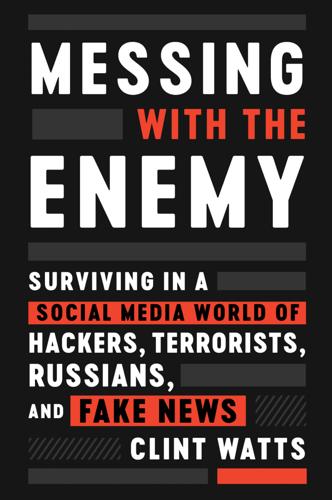
Messing With the Enemy: Surviving in a Social Media World of Hackers, Terrorists, Russians, and Fake News
by
Clint Watts
Published 28 May 2018
Chris Anderson of Wired magazine famously detailed this phenomenon from a business perspective in his book The Long Tail: Why the Future of Business Is Selling Less of More. Building from the research of Erik Brynjolfsson, Yu (Jeffrey) Hu, and Michael D. Smith, Anderson explained how online access creates not just lower prices but increased product variety. In the pre-internet era, where traditional local markets offered only a small range of high-selling goods, the World Wide Web offered an opportunity for things like books, music, and homemade goods to be sold at lower volumes over an extended period. The “long tail” referred to a high-frequency power distribution.
…
The “long tail” referred to a high-frequency power distribution. Quite simply, the internet made it possible for those on the fringe to sell their products to larger audiences over longer time periods, because there were no costs to keeping products on the market. The audience would eventually find what they wanted somewhere on the internet. The long tail didn’t just apply to products, but also to ideas. Remote-controlled airplanes, cross-stitch, fantasy football, brewing beer at home—somewhere in the world, someone was interested in the same topics, concepts, or even hatreds as someone else in the world. The internet removed the barriers between these people and dramatically lowered the costs of communication and, later, of the production of content.
…
They worked alone in the beginning, but over time they came together in their illicit pursuits. Beyond the technical trickery of hacking, hate groups and terrorists found the internet an anonymous playground for connecting with like-minded people. There were only a handful of extremists, or possibly only one, in any given town, but with the long tail of the internet, there were now hundreds and even thousands of extremists who used online congregations to facilitate the physical massing of terrorists in global safe havens or remote compounds. Think back to jihadi militancy before al-Qaeda. It took the mujahideen a decade to raise awareness, radicalize, and recruit merely a few thousand international volunteers to fight in Afghanistan against the Soviet Union.
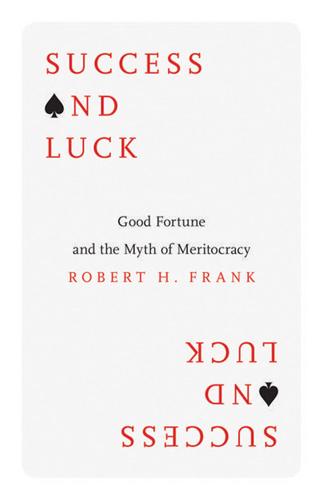
Success and Luck: Good Fortune and the Myth of Meritocracy
by
Robert H. Frank
Published 31 Mar 2016
That’s also why a small handful of artists land seven-figure recording contracts, even as thousands of others—many of them nearly as talented—struggle to get by as elementary school music teachers. Some of the same technological forces that have tended to concentrate rewards also exert countervailing effects. As Chris Anderson explained in his 2006 book The Long Tail, digital technology has been making music, books, movies, and many other goods economically viable on a much smaller scale than ever before.3 In past decades, for example, a film could generate revenue only by mustering audiences of sufficient size to justify screenings in movie theaters. Most niche markets—think Hindi-language movies in medium-size American cities—were simply not viable.
…
But as the Harvard Business School professor Anita Elberse recounts in her carefully researched 2013 book, the numbers suggest otherwise.4 The top one-thousandth of 1 percent of song titles now account for a much larger proportion of sales (15 percent in 2011, up from only 7 percent in 2007). Trends for weak-selling titles have also been running counter to the long-tail prediction. The proportion of titles selling fewer than one hundred copies annually, for example, was 94 percent in 2011, up from 91 percent in 2007. (This was a period during which overall sales nearly doubled, so sales of these slow-moving titles were growing substantially in absolute terms.)
…
And as the Swarth-more psychologist Barry Schwartz argued in his 2004 book, The Paradox of Choice, most people find it unpleasant to sift through a plethora of options.5 Many people sidestep that problem by focusing on only the most popular entries in each category. But the mere fact that top sellers are becoming even more popular doesn’t mean that the long tail’s promise of a golden age of small-scale creative energy has been empty. It has indeed become less costly for producers to target buyers with highly idiosyncratic tastes, and sophisticated search algorithms increasingly enable such buyers to find just the quirky offerings they’re looking for. Creative people have never faced better opportunities to display their talent.

#Republic: Divided Democracy in the Age of Social Media
by
Cass R. Sunstein
Published 7 Mar 2017
OF NICHES AND LONG TAILS In an illuminating and instructive book, Chris Anderson celebrates niches and niche marketing, seeing them as an extraordinary development made possible by the Internet.10 To simplify his story, Anderson argues that companies can and do make increasing amounts of money by catering to niche markets through a large volume of products (books a la Amazon.com or movies a la Netflix). Few people buy many of these products. At a bookstore, little money can be made by the poor sellers, which are at the end of the long tail of the distribution system. At Amazon.com, by contrast, the immense stock of books and the large customer base can ensure that significant aggregate sales come from the long tail. Anderson sees this as an important and wonderful trend. With the aid of the Internet and other modern technologies, it is often nearly costless to sell not just the blockbusters but also goods that cater to small markets.
…
He is right to emphasize that the Internet can greatly increase niche marketing in a way that offers extraordinary economic opportunities from the long tail. He is also right to suggest that communities can form around highly specialized tastes. But it is also important to see what might be wrong with a world of niches. The power to choose the particular good that each particular person particularly wants is not an unambiguous good; there is more to do than to notice and celebrate this process. Anderson’s analysis appears implicitly premised on the idea that freedom and the good life are promoted by, and maybe even captured in, the opportunity to choose what is specifically sought on either the large head or the long tail. Of course it is appropriate to celebrate the increase in available options, but from the standpoint of democracy, the assessment is not so simple.
…
If you’d like a Toyota Camry, a Honda Accord, or an SUV, many sites are available for the purpose; wallets, watches, and wristbands are easily found online; and shirts, sweaters, and cell phones can be purchased in seconds. Nor is convenience the only point. As a result of the Internet, ordinary people have a much greater range of choices, and competitive pressures are, in a sense, far more intense for producers. Recall Anderson’s celebration of “the long tail”; people with unusual tastes are now able to find what they want, overcoming the barriers of space that limit the options in bookstores, movie theaters, and much more. To be sure, the growth of options for consumers has been a prime engine behind the growth of the Internet. Consider a little history.

Networks, Crowds, and Markets: Reasoning About a Highly Connected World
by
David Easley
and
Jon Kleinberg
Published 15 Nov 2010
It also accords with the fundamental models of companies like Amazon or Netflix, where the ability to carry huge inventories — without the restrictions imposed by physical stores —makes it feasible to carry an astronomical diversity of products even when very few of them generate much volume on their own. And ultimately, quantifying the importance of the Long Tail comes down to an analysis of power laws. 562 CHAPTER 18. POWER LAWS AND RICH-GET-RICHER PHENOMENA number of books There are j books that have sold at least k copies. j sales volume k Figure 18.3: The distribution of popularity. Visualizing the Long Tail. The first thing to notice, when we compare this discussion of the Long Tail to our earlier analysis of power laws, is that in some sense we’re now viewing things out the opposite end of the telescope.
…
In the latter case, the company is basing its success on a multitude of “niche products,” each of which appeals to a small segment of the audience. In a widely-read 2004 article entitled “The Long Tail,” Chris Anderson argued that Internet-based distribution and other factors were driving the media and entertainment industries toward a world in which the latter alternative would be dominant, with a “long tail” of obscure products driving the bulk of audience interest [14]. As he wrote, “You can find everything out there on the Long Tail. There’s the back catalog, older albums still fondly remembered by longtime fans or rediscovered by new ones. There are live tracks, B-sides, remixes, even (gasp) covers.
…
We show a schematic plot of this new function in Figure 18.3; if we’re talking about the popularity of some item like books, 18.5. THE LONG TAIL 563 sales volume The j-th most popular book has sold k copies. k number of books j Figure 18.4: The distribution of popularity. then a point (k, j) on this curve means, by definition, “There are j books that have sold at least k copies.” So far, this is still the conceptual view from the previous section: as we follow the x-axis of the curve to the right, we’re essentially asking, “As you look at larger and larger sales volumes, how few books do you find?” To capture the discussions of the Long Tail more directly, we want to be asking the following question as we follow the x-axis to the right: “As you look at less and less popular items, what sales volumes do you see?”
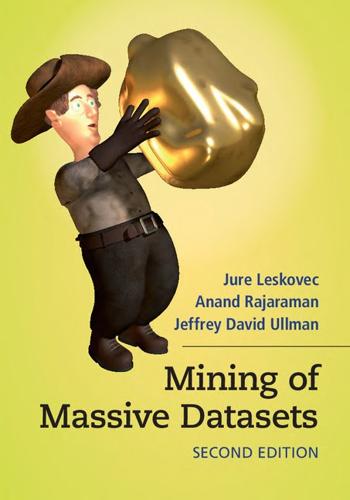
Mining of Massive Datasets
by
Jure Leskovec
,
Anand Rajaraman
and
Jeffrey David Ullman
Published 13 Nov 2014
In the first case, sales figures govern the choices, in the second case, editorial judgement serves. The distinction between the physical and on-line worlds has been called the long tail phenomenon, and it is suggested in Fig. 9.2. The vertical axis represents popularity (the number of times an item is chosen). The items are ordered on the horizontal axis according to their popularity. Physical institutions provide only the most popular items to the left of the vertical line, while the corresponding online institutions provide the entire range of items: the tail as well as the popular items. Figure 9.2 The long tail: physical institutions can only provide what is popular, while on-line institutions can make everything available Into Thin Air and Touching the Void An extreme example of how the long tail, together with a well designed recommendation system can influence events is the story told by Chris Anderson about a book called Touching the Void.
…
(2)Sales of Products: Order products, say books at Amazon.com, by their sales over the past year. Let y be the number of sales of the xth most popular book. Again, the function y(x) will look something like Fig. 1.3. we shall discuss the consequences of this distribution of sales in Section 9.1.2, where we take up the matter of the “long tail.” (3)Sizes of Web Sites: Count the number of pages at Web sites, and order sites by the number of their pages. Let y be the number of pages at the xth site. Again, the function y(x) follows a power law. (4)Zipf’s Law: This power law originally referred to the frequency of words in a collection of documents.
…
Thus, the techniques of Chapter 3 are not often useful for brick-and-mortar retailers. Conversely, the on-line retailer has little need for the analysis we discuss in this chapter, since it is designed to search for itemsets that appear frequently. If the on-line retailer was limited to frequent itemsets, they would miss all the opportunities that are present in the “long tail” to select advertisements for each customer individually. We shall discuss this aspect of the problem in Section 6.1.3, but for the moment let us simply consider the search for frequent itemsets. We will discover by this analysis that many people buy bread and milk together, but that is of little interest, since we already knew that these were popular items individually.
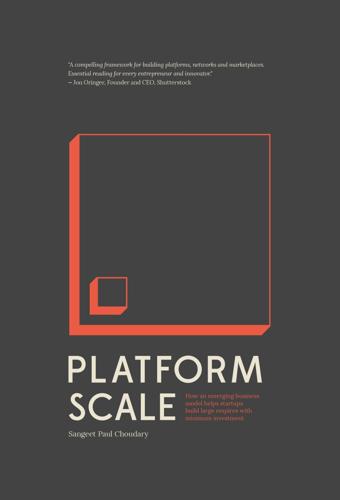
Platform Scale: How an Emerging Business Model Helps Startups Build Large Empires With Minimum Investment
by
Sangeet Paul Choudary
Published 14 Sep 2015
A portfolio-hosting platform for highly proficient photographers, 500px, differentiates Top creations from Upcoming creations, to expose recent activity (often from undiscovered users) to the community. #7: THE LONG TAIL ABUSE For all its efforts at curation, Wikipedia successfully controls the quality of only the top 20% of articles that account for 80% of the views. As any platform scales, curation methods tend to work very effectively for the ‘Head’ but not for the long tail of user contributions. This runs the risk of long tail abuse. While it may be argued that most consumers do not get affected by abuse resulting from the actions of a few producers, the minority that are affected grows as the network scales and as the curation problem itself gets exacerbated.
…
Most media businesses (publishing, performing arts) are industries with gatekeepers that determine which producers get market access. Platforms like Amazon Kindle Publishing, YouTube, and CDBaby reintermediated these industries to varying degrees by giving producers direct access to a market of consumers. The long tail of sellers on online marketplaces wouldn’t exist if not for the targeted access that online marketplaces provide. eBay created a large segment of sellers that never existed previously by lowering the access barrier, much like Airbnb unlocked apartments that would never have welcomed guests before.
…
#6: THE RICH BECOME RICHER Consider an online platform that enables sharing of knowledge globally and helps those looking for an answer to connect with those who have the answer. The best contributions do not always come from existing experts, neither do the existing experts understand the context of needs in specific niches. Hence, micro-experts are needed to deal with the long tail of problems. The creation of new niche experts requires a curation model that, effectively, separates the best from the rest. Traditionally, the creation of experts relied on certifications or affiliations with trusted bodies. Creating a similar model of accreditation on an online platform is extremely important if one is to create new experts.
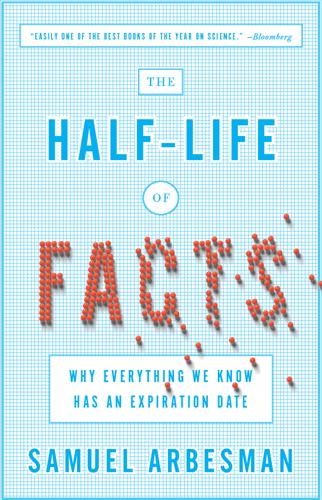
The Half-Life of Facts: Why Everything We Know Has an Expiration Date
by
Samuel Arbesman
Published 31 Aug 2012
Cosmic Variance, 2010; http://blogs.discover magazine.com/cosmicvariance/2011/05/23/physics-and-the-immortality-of-the-soul/. 37 A quote from Science Daily: Census of Marine Life. “Giant Undersea Microbial Mat Among Discoveries Revealed by Marine Life Census.” Science Daily, April 18, 2010. 38 Kevin Kelly refers to this sort of distribution: Kelly, Kevin. “The Long Tail of Life.” The Technium, 2010; http://www.kk.org/thetechnium/archives/2010/04/the_long_tail_o.php. CHAPTER 4: MOORE’S LAW OF EVERYTHING 41 The @ symbol has been on keyboards: Rawsthorn, Alice. “Why @ Is Held in Such High Design Esteem.” International Herald Tribune, March 22, 2010. 42 Moore wrote a short paper in the journal Electronics: Moore, Gordon E.
…
A quote from Science Daily gives a sense of how unbelievable this is: On just two stops in the southeast Atlantic Angola Basin, they found almost 700 different copepod species (99 percent of them unfamiliar) in just 5.4 square meters (6.5 square yards), nearly twice the number of species described to date in the entire southern hemisphere. Kevin Kelly refers to this sort of distribution as the “long tail of life.” In the media world, a small fraction of movies accounts for the vast amount of success and box office take—these are the blockbusters. The same thing happens on the Internet: a tiny group of Web sites commands most of the world’s attention. In the world of urban development, a handful of cities holds a vast portion of the world’s population.
…
But there are uncountably more discoveries, although far rarer, in the tail of this distribution of discovery. As we delve deeper, whether it’s into discovering the diversity of life in the oceans or the shape of the Earth, we begin to truly understand the world around us. So what we’re really dealing with is the long tail of discovery. Our search for what’s way out at the end of that tail, while it might not be as important or as Earth-shattering as the blockbuster discoveries, can be just as exciting and surprising. Each new little piece can teach us something about what we thought was possible in the world and help us to asymptotically approach a more complete understanding of our surroundings.
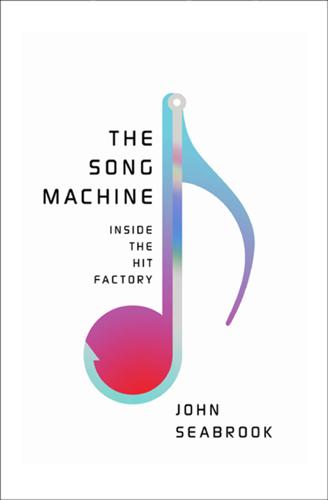
The Song Machine: Inside the Hit Factory
by
John Seabrook
Published 4 Oct 2015
For both the pirates and the paying subscribers, buying records is rapidly becoming a thing of the past. And yet the hits go on and on. In The Long Tail, the 2005 techno-utopian argument for the coming triumph of niches in popular culture, author Chris Anderson posits that hits are a scarcity-based phenomenon. Record stores have limited shelf space, he explains, and records that move 10,000 units are more profitable to stock than records that move 10. But on the Internet, shelf space is infinite, and therefore record companies don’t need to focus so much of their business on making hits. They can make money from the long tail of the artistic middle class—artists with small but loyal followings who will never be heard on CHR.
…
Why bother to take on the risk of making hits, and endure the far more numerous failures, when the labels can make as much money licensing their back catalogue of hits, which are already paid for, so that the money goes straight to the company’s bottom line? The record label of the future will be like a 1-800 number, Flom says sarcastically. “Dial one for pop, dial two for the blues.” But that’s not what happened. Not even close. Nine years after The Long Tail, the hits are bigger than ever. Of the 13 million songs available for purchase in 2008, 52,000 made up 80 percent of the industry’s revenue. Ten million of those tracks failed to sell a single copy. Today, 77 percent of the profits in the music business are accumulated by 1 percent of the artists.
…
“In fact, it’s probable that the Internet will lead to larger blockbusters, more concentration of brands.” In her 2014 book Blockbusters, Harvard Business School professor Anita Elberse showed how mega hits have become more important across the whole entertainment industry. “Smart executives bet heavily on a few likely winners. That’s where the big payoffs come from,” she writes. The long tail is a lovely concept—more prosperity for a larger number of artists—and it makes sense in the tech world, where it is an article of faith that the fundamental logic of networks will foster a meritocracy. But the music business doesn’t work logically, and merit doesn’t always matter. Power, fear, and greed are the laws of the land.
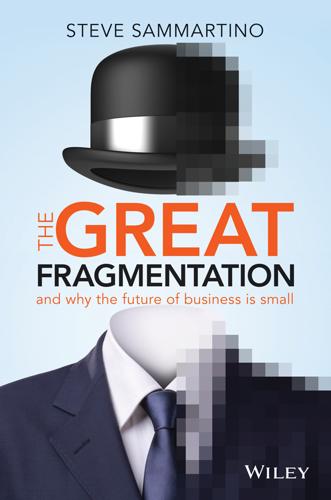
The Great Fragmentation: And Why the Future of All Business Is Small
by
Steve Sammartino
Published 25 Jun 2014
In times of significant change, what's really needed is a thorough analysis of the landscape and a topographical assessment of the new world. Even the big players — the new ‘big' — became big by creating highly distributed networks of small pieces that are more loosely tied together with many more fragmented products and services. The new digital dominators all live deep inside the long tail. * * * There's no shortage of books available with tactical tips on how to use the latest tech tool. If that's what you're looking for, this isn't the book for you. If you're lucky enough to be reading this preface in a bookstore prior to purchasing the book and you want a tactical ‘how-to' summary, please buy another book.
…
Again, the first rule in economics is that increased supply results in reduced prices. It’s the most basic economic fact that everyone seems to forget. In a world where choice is increasing exponentially, it presents two simple options for retailers: be the cheapest and quickest, or live deep inside the long tail. The physical and virtual challenges Initial thinking as retail moved online was that online retailers were eating store operators for lunch, and this was sometimes the case. Excluding the online megabrands (Amazon comes to mind), it’s much harder for everyone than it was before the web, even those who are solely online retailers.
…
Being the importer is no longer enough because we can now get what they can provide from anywhere in the world at the world’s cheapest price, delivered to our door. In order to maintain relevance, small retailers will have to sell something the others don’t; otherwise they’ll be forever competing on price and struggling to carry a wide enough range. They need to be as far down the long tail as possible, providing a specific offer for a small and passionate audience that’s far more likely to be appreciative of what they create or curate and far less price sensitive because it’s being delivered by you for them and their tribe. Border hopping and digital reinvention One of the terrific things the web enables is the re-birth of businesses that couldn’t survive in the mass-market era, couldn’t compete on price and didn’t have enough appeal to remain viable.
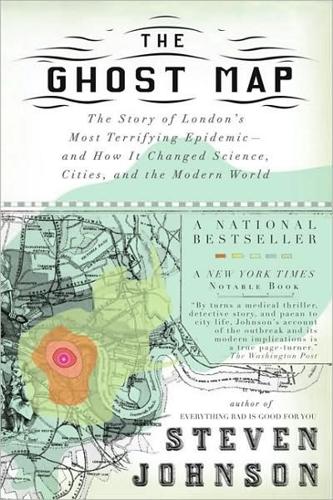
The Ghost Map: A Street, an Epidemic and the Hidden Power of Urban Networks.
by
Steven Johnson
Published 18 Oct 2006
The current buzzword for this trend is “long tail” economics; instead of concentrating exclusively on big mass hits, online businesses can target the “long tail” of quirkier fare. In the old model, the economics dictated that it was always better to sell a million copies of one album. But in the digital age, it can be just as profitable to sell a hundred copies each of a thousand different albums. Urban information mapping systems offer an intriguing corollary to the long-tail theory. As technology increasingly allows us to satisfy more eclectic needs, anytime those needs require physical presence, the logic of the long tail will favor urban environments over less densely populated ones.
…
If you’re downloading the latest album from an obscure Scandinavian doo-wop group, geography doesn’t matter: it’s just as easy to get the bits delivered to you in the middle of Wyoming as it is in the middle of Manhattan. But if you’re trying to meet up with other fans of Scandinavian doo-wop, you’ll have more luck in Manhattan or London. The long tail may well lead us away from the dominance of mass hits and pop superstars toward quirkier tastes and smaller artists. But it may also lead us to bigger cities. page 225 The public spaces and coffeehouses “‘The coffee-house was the Londoner’s home, and those who wished to find a gentleman commonly asked, not whether he lived in Fleet Street or Chancery Lane, but whether he frequented the Grecian or the Rainbow.’
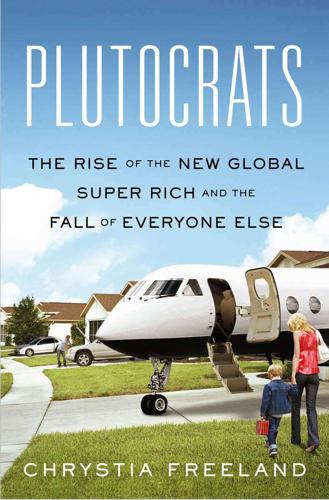
Plutocrats: The Rise of the New Global Super-Rich and the Fall of Everyone Else
by
Chrystia Freeland
Published 11 Oct 2012
The Internet wasn’t featured on Rosen’s list—its commercial introduction was still a few years away—but once it began to make itself felt as a mass phenomenon, there were a lot of good reasons to think this new technology would be the one that would bring an end to superstar economics. This, in the term popularized by its most visible advocate, Chris Anderson, is the theory of the long tail. As Anderson argued in his 2004 essay of that name, the long tail is “an entirely new economic model for the media and entertainment industries, one that is just beginning to show its power. . . . If the 20th century entertainment industry was about hits, the 21st will be equally about misses.” Anderson’s point was that technology meant the end of the era of the blockbuster and the superstar; instead the new century would be the golden age of the niche artist and small audience.
…
Anderson’s point was that technology meant the end of the era of the blockbuster and the superstar; instead the new century would be the golden age of the niche artist and small audience. It hasn’t quite worked out that way. While a great business can be built by bringing together millions of sales along the long tail—think Google—for individuals, the income gap between the superstars and everyone else is greater than ever. We see that in the overall income distribution, with the top 1 percent earning around 17 percent of the national income, and we see it within specific professions—in banking, in law, in sports, in entertainment, even in a quotidian profession like dentistry—those at the top are pulling ahead of everyone else.
…
So, unless you believe that the random order of participating in the competition is linked to talent, the more obvious conclusion is that the music world celebrity brought by winning the Queen Elisabeth Competition, independent of how good you are, has a powerful effect on your professional success as a musician. But what about the long tail? One of the promises of the Internet has been that it can weaken the Matthew effect: the Web has low barriers to entry, and we all start out equal online. Matthew Salganik and Duncan Watts tested that premise in 2005 on 12,207 Web-based participants. The research subjects were offered a menu of forty-eight songs.

Artificial Intelligence: A Guide for Thinking Humans
by
Melanie Mitchell
Published 14 Oct 2019
The workers do this by manually marking up or ‘labeling’ thousands of hours of video footage, often frame by frame.”10 New companies have sprung up to offer labeling data as a service; Mighty AI, for example, offers “the labeled data you need to train your computer vision models” and promises “known, verified, and trusted annotators who specialize in autonomous driving data.”11 The Long Tail The supervised-learning approach, using large data sets and armies of human annotators, works well for at least some of the visual abilities needed for self-driving cars (many companies are also exploring the use of video-game-like driving-simulation programs to augment supervised training).
…
As the renowned AI researcher Andrew Ng has warned, “Requiring so much data is a major limitation of [deep learning] today.”12 Yoshua Bengio, another high-profile AI researcher, agrees: “We can’t realistically label everything in the world and meticulously explain every last detail to the computer.”13 FIGURE 13: Possible situations a self-driving car might encounter, ranked by likelihood, illustrating the “long tail” of unlikely scenarios This issue is compounded by the so-called long-tail problem: the vast range of possible unexpected situations an AI system could be faced with. Figure 13 illustrates this phenomenon by giving the likelihood of various hypothetical situations that a self-driving car might encounter during, say, a day’s worth of driving.
…
In February 2016, one of Google’s prototype self-driving cars, while making a right turn, had to veer to the left to avoid sandbags on the right side of a California road, and the car’s left front struck a public bus driving in the left lane. Each vehicle had expected the other to yield (perhaps the bus driver expected a human driver who would be more intimidated by the much larger bus). Companies working on autonomous-vehicle technology are acutely aware of the long-tail problem: their teams brainstorm possible long-tail scenarios and actively create extra training examples as well as specially coded strategies for all the unlikely scenarios they can come up with. But of course it is impossible to train or code a system for all the possible situations it might encounter.

Competing on Analytics: The New Science of Winning
by
Thomas H. Davenport
and
Jeanne G. Harris
Published 6 Mar 2007
Mullaney, “Netflix: The Mail-Order Movie House That Clobbered Blockbuster,” BusinessWeek Online, May 25, 2006, http://www.businessweek.com/smallbiz/content/may2006/sb20060525_268860.htm?campaign_id=search; and a telephone interview with chief product officer Neil Hunt on July 7, 2006. 2. The “long tail” concept has been popularized by Chris Anderson in The Long Tail: Why the Future of Business Is Selling Less of More (New York: Hyperion, 2006). 3. We define distinctive capabilities as the integrated business processes and capabilities that together serve customers in ways that are differentiated from competitors and that create an organization’s formula for business success. 4.
…
Netflix CEO Reed Hastings notes, “If the Starbucks secret is a smile when you get your latte, ours is that the Web site adapts to the individual’s taste.”1 Netflix analyzes customers’ choices and customer feedback on the movies they have rented—over 1 billion reviews of movies they liked, loved, hated, and so forth—and recommends movies in a way that optimizes both the customer’s taste and inventory conditions. Netflix will often recommend movies that fit the customer’s preference profile but that aren’t in high demand. In other words, its primary territory is in “the long tail—the outer limits of the normal curve where the most popular products and offerings don’t reside.”2 Netflix also engages in a somewhat controversial, analytically driven practice called throttling. Throttling refers to how the company balances the distribution of shipping requests across frequent-use and infrequent-use customers.
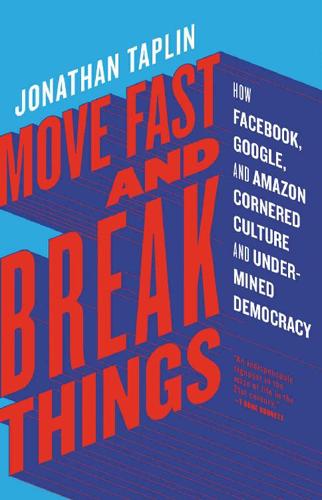
Move Fast and Break Things: How Facebook, Google, and Amazon Cornered Culture and Undermined Democracy
by
Jonathan Taplin
Published 17 Apr 2017
By 2020 there will be six billion Internet-enabled smartphones in the world, and how can it be that the arrival of digital networks composed of billions of music fans has not been a boon to musicians? 3. Even though we were assured by pundits such as Wired magazine’s Chris Anderson, who wrote his seminal article “The Long Tail” in 2004, that digital abundance would mean a much more democratic distribution of the spoils of the digital age, that notion has turned out to be willful self-deception. The long tail is a myth, a fact evidenced by the current music business, in which 80 percent of the revenue is generated by 1 percent of the content. Even at the height of the early blockbuster era, spawned by Michael Jackson’s Thriller, 80 percent of the revenue was spread among the top 20 percent of the content.
…
Chapter Two: Levon’s Story Though most of the story of Levon Helm and The Band comes from my own experience with them, there are two good books on that period in Woodstock by British journalist Barney Hoskins: Across the Great Divide: The Band & America (New York: Hal Leonard, 2006) covers most of their career. Small Town Talk: Bob Dylan, The Band, Van Morrison, Janis Joplin, Jimi Hendrix and Friends in the Wild Years of Woodstock (New York: Da Capo Press, 2016) has a much wider view of the whole scene in late 1960s Woodstock. Chris Anderson’s book from 2008, The Long Tail: Why the Future of Business Is Selling Less of More (New York: Hachette, 2008) is still fairly controversial. I believe he underestimated the power of search engines to push only the most popular content to the top. The best recording ever of Ray Charles is Ray Charles Live from a 1959 Atlanta stadium show with a big band.
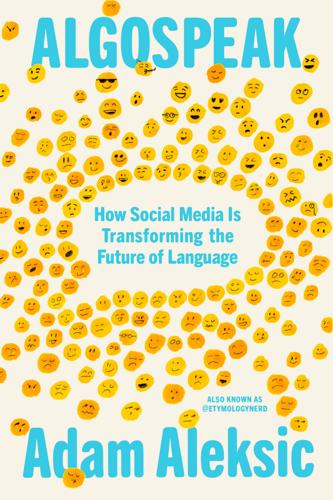
Algospeak: How Social Media Is Transforming the Future of Language
by
Adam Aleksic
Published 15 Jul 2025
If the algorithm spreads new words and identities that build communities, that’s because the platform believes those communities will earn it more money in the end. Beyond creating algorithmic identity, the hyper-compartmentalization of cultural labels is part of a retail strategy known as the long-tail model, wherein small quantities of unique items are sold to niche audiences. While most retailers are forced to market more general products that will appeal to larger demographics (the “head” of demand distribution), larger companies are able to utilize their economies of scale to sell increasingly niche products (the “tail” of demand), which expands their consumer base while outpacing smaller competitors.
…
In the same way, a cottagecore influencer may make cottagecore content simply because they feel confined to that category, rather than making more general rural-themed content as they might have done before the label existed. The other option is to jump on trends. Instead of just cottagecore content, an “aesthetic” creator can straddle the line between the head and the long tail by playing into whatever niche “-core” is trending in a particular moment (and there’s always one trending). These influencers may make a goblincore video one day, then an angelcore video the next; in fact, they’re often incentivized to. This is where fast fashion comes in. Starting with brands like Zara in the late twentieth century, retailers began shifting away from durable, high-quality clothing and toward a higher output of cheaper, trend-based, replaceable apparel.
…
“Core Suffix,” Aesthetics Wiki, aesthetics.fandom.com/wiki/Category:Core_Suffix. Accessed October 21, 2024. BACK TO NOTE REFERENCE 1 “Subcultures Are the New Demographics,” TikTok for Business (blog), July 29, 2021, ads.tiktok.com. BACK TO NOTE REFERENCE 2 Chris Anderson, “The Long Tail,” Wired, Oct. 1, 2004. BACK TO NOTE REFERENCE 3 Medline Shulz, “Did Micro-trends Kill the Trend Cycle?,” Vogue Business, June 12, 2024. BACK TO NOTE REFERENCE 4 Rebecca Jennings, “Against Trendbait,” Vox, Feb. 7, 2024. BACK TO NOTE REFERENCE 5 Callie Holtermann, “Why Do We Brand the Summer?

Seeking SRE: Conversations About Running Production Systems at Scale
by
David N. Blank-Edelman
Published 16 Sep 2018
The area of each bar represents a set of samples that fall into the latency range depicted by boundaries of the bar on x-axis. Just underneath the x-axis, we can see markers indicating “quantile boxing” showing the q(0) (the minimum), q(0.25) (the 25th percentile), q(0.5) (the median), and q(0.75) (the 75th percentile). The q(1) (the maximum) isn’t visible on the graph, as much of the long tail of the distribution is outside the right side of the viewport of the graph. The vertical line (m) indicates the arithmetic average (mean) of the distribution. The graph in Figure 21-3 packs a punch! There’s a wealth of information in there. Figure 21-3. An example latency histogram for data service requests On the left side of the histogram, we see a spike (A), called a mode, that represents services that were served fast (likely entirely from cache) and the distribution between (A) and 1.0 ms looks composed of several different behaviors (B), (C), and (D).
…
There are no perfect systems, and empathy is the best way to build interconnected systems. #hugops is a common refrain between customers and suppliers, and between competitors, precisely because it emphasizes our own humanity and that any day it could be one of us in the hot seat solving an outage. The Long Tail: Turning Action into Change Activism can be the journey rather than the arrival. Grace Lee Boggs In the technology industry, we work toward building better products and services as our sustained, long-term goal; toil, on-call shifts, and release days are necessary steps along the way, but it would be disingenuous to treat release days as the raison d’être of the average engineer’s career.
…
In these times, we learn hard lessons about who we are and whom we are among. In the period of time after a major incident, we are often beset by doubts, feelings of guilt, and an urge to assign blame. Relationships, particularly those that were tenuous before the incident, can be strained or broken. In the long tail after an incident, it is worthwhile to reflect on which of those relationships we wish to maintain, which we wish to repair, which we wish to strengthen, and which we wish to sever. But broken trust is not an indication of a lack of worth or ability. The reality is that sometimes trust is broken beyond the point of repair.

Rise of the Robots: Technology and the Threat of a Jobless Future
by
Martin Ford
Published 4 May 2015
Sales of books and music, classified advertising, and movie rentals, for example, are increasingly dominated by a tiny number of online distribution hubs, and one obvious result has been the elimination of vast numbers of jobs for people like journalists and retail store clerks. The long tail is great if you own it. When, however, you occupy only a single point on the distribution, the story is quite different. Out on the long tail, incomes from most online activities rapidly drop to the pocket-change level. That can work out fine if you have an alternate source of income, or if you happen to be living in your parents’ basement. The problem is that as digital technology continues to transform industries, more and more of the jobs that provide that primary-income source are likely to disappear.
…
From the perspective of a great many workers, computers will cease to be tools that enhance their productivity and instead become viable substitutes. This outcome will, of course, dramatically increase the productivity of many businesses and industries—but it will also make them far less labor-intensive. The Tyranny of the Long Tail The influence of this distributed machine intelligence is most evident in the information technology industry itself. The Internet has spawned enormously profitable and influential corporations with startlingly diminutive workforces. In 2012, Google, for example, generated a profit of nearly $14 billion while employing fewer than 38,000 people.9 Contrast that with the automotive industry.
…
Most techno-optimists would likely object to this characterization. They tend to view information technology as universally empowering. It is perhaps not coincidental that they also tend to have been very successful in the new economy. The most prominent digital optimists typically live at the extreme left of the long tail—or, even better, they’ve perhaps founded a company that owns the entire distribution. In a PBS television special that aired in 2012, inventor and futurist Ray Kurzweil was asked about the possibility of a “digital divide”—meaning that only a small percentage of the population will be able to thrive in the new information economy.
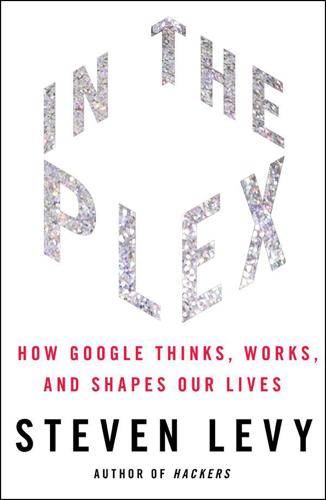
In the Plex: How Google Thinks, Works, and Shapes Our Lives
by
Steven Levy
Published 12 Apr 2011
But Google wanted something that would work on Internet scale. Since Google searches were often unique, with esoteric keywords, there was a possibility to sell ads for categories that otherwise never would have justified placement. On the Internet it was possible to make serious money by catering to the “long tail” of businesses that could not buy their way into mass media. (The long tail is the term used to refer to smaller, geographically disparate businesses and interests. The Internet—particularly with the help of a search engine like Google—made long-tail enterprises easy to reach.) If you made the system self-service, you could handle thousands of small advertisers, and the overhead would be so low that customers could buy ads very cheaply.
…
After Malone went through three start-ups—and two unpublished novels, because she believed that her true calling was fiction—Sandberg urged her to apply to Google. Twenty-five interviews later, she arrived in Mountain View to help sell AdSense to more small publishers. Malone dubbed herself “the high priestess of the long tail” and came to view her job—the dubiously virtuous task of sticking ads on pages that otherwise would have been ad-free—as a mission to empower small publishers in the age of search. She considered the AdSense arrangement the best sales pitch in advertising history. “Here’s the deal,” she’d say.
…
“It was very important to find a way to monetize content for the entertainment industry,” Feikin says. “Putting stuff on the Internet was very new, and there were lots of clips and promos and stuff like that, but putting the full shows online was a very interesting thing to our partners.” Not as crucial to the Google Video approach was the long tail of Internet video. The web, along with new and powerful digital tools for making and distributing videos, offered an opportunity for the most obscure video auteur—meaning anyone with a cheap camera and a modem—to reach an audience of billions. It was a perfect opportunity for Google. But someone else was seizing it.
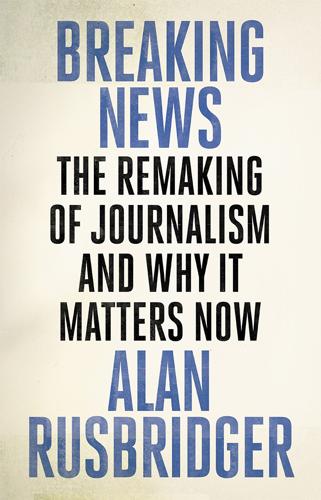
Breaking News: The Remaking of Journalism and Why It Matters Now
by
Alan Rusbridger
Published 14 Oct 2018
The last thing you wanted was to be pooled with everyone else. So no one thought this was a good idea. But not integrating was a really bad idea, too. Just a year or so after all the debates we’d had internally about ‘Berliner’ journalism we regrouped to start new discussions about web journalism. The ‘long tail’ for instance. The phrase had been popularised by Chris Anderson, editor-in-chief of Wired, in a book of that name published in July 2006.5 Print journalism had a very short tail: the effective life of a newspaper was 24 hours. Sure, you could go down to the library and seek out old copies. But, for most readers, the editorial value lasted no longer than a day.
…
In the new world you would still usually attract most attention for a story on day one. But it would live for ever and would (if properly tagged) remain findable and (if appropriately written or edited) relevant. Commercially, its audience (and therefore value) over time could be greater than its value on day one. That was the theory of the long tail. What did an editorial long tail look like? We came to shorthand this as the ‘Nick Clegg’ problem. Nick Clegg was the rising star of the (centre-left) UK Liberal Democrat party. An MP in 2005, leader of his party by 2007 and (centre-right) deputy prime minister by 2010. Suppose you wanted to know all about Clegg and came to the Guardian (via Google) to find out.
…
Interesting for a few hours, but of very little substance in the longer term. Go to the Nick Clegg Wikipedia page – edited by amateurs – and, by contrast, you found something which made more structural sense, even if you couldn’t vouch for the accuracy of the information. This was information that had been edited for the long tail. Was there a way of ‘long-tailing’ newspaper journalism so that it remained useful, well-organised and relevant for the future? Was it best done by humans? Too resource intensive and expensive. Could it be done by algorithms? The tech devs were gagging to have a go, but there was never enough time or money.
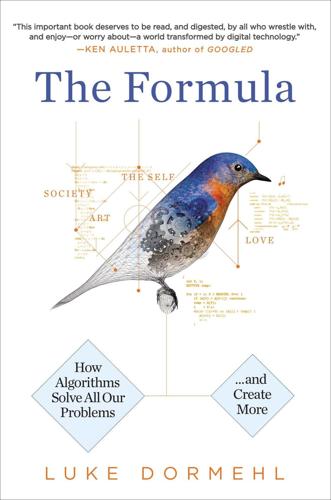
The Formula: How Algorithms Solve All Our Problems-And Create More
by
Luke Dormehl
Published 4 Nov 2014
Circular in design and with a large watchtower in the center, the theory behind the panopticon was that prisoners would behave as if they were being watched at all times—with the mere presence of the watchtower being as effective as iron bars in regulating behavior and ensuring that everyone acted the same way. (A similar idea is behind today’s open-plan offices.) As former Wired editor Chris Anderson argues in The Long Tail, modern commerce depends upon market segmentation.47 Unless you’re selling soap, aiming a product at a homogeneous mass audience is a waste of time. Instead, vendors and marketers increasingly focus on niche audiences. For niches to work, it is important to companies that they know our eccentricities, so that they can figure out which tiny interest group we belong to.
…
A Thousand Plateaus: Capitalism and Schizophrenia (Minneapolis: University of Minnesota Press, 1987). 45 Deleuze, Gilles. “Postscript on the Societies of Control.” October, vol. 59, Winter 1992. 46 Poole, Steven. “The Digital Panopticon.” New Statesman, May 29, 2013. newstatesman.com/sci-tech/sci-tech/2013/05/are-you-ready-era-big-data. 47 Anderson, Chris. The Long Tail (London: Random House Business, 2006). 48 Ellul, Jacques. The Technological Society (New York: Knopf, 1964). 49 Turner, Fred. From Counterculture to Cyberculture: Stewart Brand, the Whole Earth Network, and the Rise of Digital Utopianism (Chicago: University of Chicago Press, 2006). 50 Turkle, Sherry.
…
“Can Alternate Endings Save the Hollywood Blockbuster?” Fast Company, July 30, 2013. fastcolabs.com/3015037/open-company/can-alternate-endings-save-the-hollywood-blockbuster. 32 This idea is backed up by Wired editor Chris Anderson’s concept of the “98 Percent Rule,” described in his 2006 book The Long Tail. In his discussion of how technology is turning mass markets into millions of niches, Anderson argues that niche products are now within reach economically thanks to digital distribution, and when aggregated can still make up a significant market—as Amazon’s business model has shown. 33 Warman, Matt.
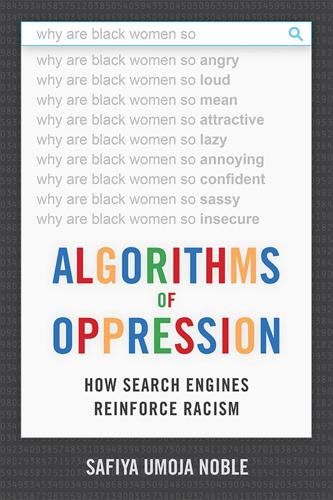
Algorithms of Oppression: How Search Engines Reinforce Racism
by
Safiya Umoja Noble
Published 8 Jan 2018
We feed keywords into Google, Yahoo!, MSN, eBay, and Amazon. We search for news, products, people, used furniture, and music. And words are the key to our success.23 Morville also draws attention to what cannot be found, by stressing the long tail phenomenon on the web. This is the place where all forms of content that do not surface to the top of a web search are located. Many sites languish, undiscovered, in the long tail because they lack the proper website architecture, or they do not have proper metadata for web-indexing algorithms to find them—for search engines and thus for searchers, they do not exist. Such search results are deeply problematic and are often presented without any alternatives to change them except through search refinement or changes to Google’s default filtering settings, which currently are “moderate” for users who do not specifically put more filters on their results.
…
She confirms this this confluence of media production on the web is part of the exclusionary terrain for Black women, who are underrepresented in many aspects of the information industry.46 I would add to her argument that while it is true that the web can serve as an alternative space for conceiving of and sharing empowered conceptions of Black people, this happens in a highly commercially mediated environment. It is simply not enough to be “present” on the web; we must consider the implications of what it means to be on the web in the “long tail” or mediated out of discovery and meaningful participation, which can have a transformative impact on the enduring and brutal economic and social disenfranchisement of African Americans, especially among Black women. Social Inequality Will Not Be Solved by an App An app will not save us.

Open for Business Harnessing the Power of Platform Ecosystems
by
Lauren Turner Claire
,
Laure Claire Reillier
and
Benoit Reillier
Published 14 Oct 2017
Being able to personalize a search result allows platforms to leverage their wide selection without confusing buyers with too much choice. This has allowed Alibaba to push the concept of the long tail to the limit with in excess of a billion products listed. To make the most of this unique inventory, the same search engine powers a number of consumer marketplaces owned by the group, such as Tmall and Taobao. This means that a search on one consumer site can also return search results across all other Alibaba consumer sites. This guarantees customers complete inventory discovery and access to the long tail across all marketplaces. For example, a search on Taobao for the latest Burberry tote bag may come back with few results on Taobao, but with a relevant selection on Tmall.
…
The flywheel of traffic is at play again: FBA leads to more sales for sellers,10 more FBA sellers lead to more value for Prime customers, who then spend more, to the benefit of both Marketplace sellers and Amazon. 62 Platform-powered ecosystems Amazon is getting the best of both worlds by combining the reach of platforms with the control of simple distribution models in order to be a ‘one-stop shop’. The combination of the long tail marketplace with the highly efficient high-volume reseller model attracts one of the biggest audiences across the world and makes it one of the most successful e-commerce sites. Amazon’s ecosystem When more control over the product proposition is required, Amazon uses more traditional business models.

The History and Uncertain Future of Handwriting
by
Anne Trubek
Published 5 Sep 2016
THE HISTORY AND UNCERTAIN FUTURE OF HANDWRITING BY THE SAME AUTHOR A Skeptic’s Guide to Writers’ Houses “I never saw a hotter argument on so unexciting a subject.” —Erasmus, 1528, “On Handwriting” CONTENTS Introduction: Handwriting Is History Chapter 1 The Strangely Familiar Very Far Past Chapter 2 The Problem with Very Beautiful Writing Chapter 3 The Long Tail of Greece and Rome Chapter 4 Human Xerox Machines Chapter 5 The Politics of Script Chapter 6 Handwriting as Distinction Chapter 7 Righteous, Manly Hands Chapter 8 A Devilish Contrivance Chapter 9 Long Descenders Chapter 10 Questioned Documents Chapter 11 Digital Handwriting Chapter 12 The Continual Revival of Fancy Letters Chapter 13 The Science of Handwriting Conclusion: Our John Hancocks Acknowledgments Notes Index Plates Introduction HANDWRITING IS HISTORY Ellie was sitting at her desk, across from Max and next to Isabel, writing in a small stapled book with a green cover.
…
* As Wolf writes in Proust and the Squid, “By the first millennium B.C.E., the brain of an Egyptian scribe may well have required far more cortical activation and cognitive resources to handle the encrypted meanings than was required for most other writing systems in all of history.” * Of course, there are an enormous number of remaining hieroglyphics that were chiseled on walls, tombs, and buildings. Chapter 3 THE LONG TAIL OF GREECE AND ROME Most of us take it as a truism that writing is good, ennobling, and central to being an educated citizen. Socrates, ancient Greece’s greatest thinker, believed the opposite. He argued vehemently, through speeches Plato later wrote down, that writing caused humans to become less intelligent, less civilized, and less creative.
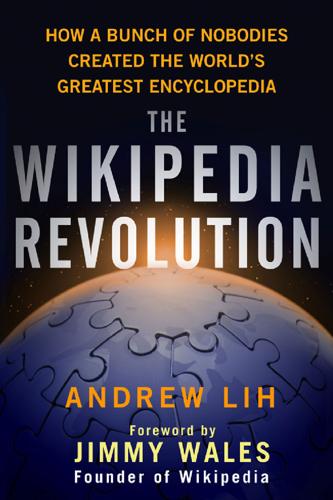
The Wikipedia Revolution: How a Bunch of Nobodies Created the World's Greatest Encyclopedia
by
Andrew Lih
Published 5 Jul 2010
In Germany and the Netherlands, the native-language versions of Wikipedia are ranked higher than any domestic news organization’s Web site.3 For many other cultures, in which there are no strong commercial incentives to create an encyclopedia, Wikipedia is the only comprehensive encyclopedia available at all. Therefore, the impact of Wikipedia has been more revolutionary and crucial for those cultures in the “long tail” of the language list. Wikipedia has likely been introduced to millions simply because they use Google and other search engines. Do a random Internet search, and it’s hard not to find a Wikipedia entry in the top five results. The clear, clinical style of its articles on matters whimsical or serious makes it an instant favorite for many Internet users.
…
What was once only done top-down is now being viewed bottom-up. Books and essays have addressed the impact of projects freely driven by communities of scattered individuals: The Cathedral and the Bazaar by Eric S. Raymond, The Wisdom of Crowds by James Surowiecki, The Wealth of Networks by Yochai Benkler, The Long Tail by Chris Anderson, Infotopia by Cass R. Sun-stein, and Everything Is Miscellaneous by David Weinberger. This book, however, goes in with a deeper focus on Wikipedia, explaining how it evolved to become the phenomenon it is today, and showing the fascinating community behind the articles and the unique online culture the site has fostered.
…
The euphoria of exponential growth is just now wearing off. Both English and German Wikipedia, the two bellwethers of influence, have entered into a period of slowing growth. It’s only natural—the low-hanging fruit has been picked and both encyclopedias are entering into a maintenance mode, where current events and the long tail of minor topics will be the main areas for new content. The basic human knowledge articles about things like [[Earth]], [[Space]], [[Philosophy]] have all been written, and done quite well. This is perhaps the biggest challenge for the project overall. One cannot have blind faith that Wikipedia will be ever increasing in size, quality, and community.
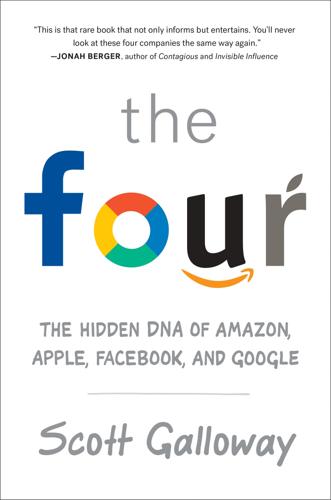
The Four: How Amazon, Apple, Facebook, and Google Divided and Conquered the World
by
Scott Galloway
Published 2 Oct 2017
Bezos knew he could migrate to things people weren’t used to buying online yet, like CDs and DVDs. Foreshadowing Amazon’s threat to all things good in our society, Susan Boyle’s CD I Dreamed a Dream set sales records on the platform. To outrun competitors and reinforce the core value of selection, Amazon introduced Amazon Marketplace, letting third parties fill in the long tail. Sellers got access to the world’s largest e-commerce platform and customer base, and Amazon was able to balloon its offerings without the expense of additional inventory. Amazon Marketplace now accounts for $40 billion, or 40 percent, of Amazon’s sales.31 Sellers, content with the massive customer flow, feel no compulsion to invest in retail channels of their own.
…
Facebook and Google accounted for 90 percent of U.S. digital advertising revenue growth in 2016. You are better off picking (if possible) one of a handful of winners (Google/FB/MSFT) or firms in their ecosystem. Disruptors that break open new markets are rare—lottery winners. In some traditional consumer goods industries, however, the long tail is growing. Thus, it’s better to work for Google than a niche search player; but conversely, it’s better to work for a craft brewery than Miller. The very concentration of tech space into dominant information platforms (Amazon reviews, Google, Trip Advisor) has facilitated the identification of breakout nontech products from unknown makers, and the niche-ification of traditional categories.
…
The very concentration of tech space into dominant information platforms (Amazon reviews, Google, Trip Advisor) has facilitated the identification of breakout nontech products from unknown makers, and the niche-ification of traditional categories. Small players can get global reach and instant credibility without the massive ad budgets and distribution networks that their larger competitors once used to limit the market. The long tail has new life in consumer, as discretionary income wants special, not big. Kint, Jason. “Google and Facebook Devour the Ad and Data Pie. Scraps for Everyone Else.” Digital Content Next. We are seeing this across categories. In cosmetics, for example, brands including NYX and Anastasia Beverly Hills are challenging the traditional giants by going straight to influencers on Instagram and other social platforms, and responding to trends, registered on Google, with a supply chain that gets products to market in a fraction of the time of traditional players.

Fabricated: The New World of 3D Printing
by
Hod Lipson
and
Melba Kurman
Published 20 Nov 2012
Cloud manufacturing will be a decentralized system, built on a foundation of ultra-large networks of small manufacturing companies. Wikipedia defines cloud manufacturing as systems “where various manufacturing resources and abilities can be intelligently sensed and connected into wider internet, and automatically managed and controlled.” In his landmark book, The Long Tail: Why the Future of Business is Selling Less of More, author Chris Anderson described the collective power of bloggers as that of “ants with megaphones.”1 Until the Internet gave them a worldwide platform, individual writers struggled to make their voices heard. Now, the collective communicative capacity of bloggers exceeds that of journalists working for large media companies. 3D printing technologies will make Makers, consumers, and small companies into ants with factories.
…
Mass manufacturing is becoming mass customization. In the future, as 3D printing technologies improve, everyone will gain the ability to design and make complex products. Barriers of resources and skill that are associated with traditional manufacturing will ease, democratizing innovation and unleashing the long tail of human creativity. The second episode of the journey is just beginning: control over the composition of matter—going beyond shaping just external geometry to shaping the internal structure of new meta-materials with unprecedented fidelity. Someday we will be able to make materials within materials.
…
Chapter 3 1 Quote from a press conference covered by VentureBeat in May 2012. http://venturebeat.com/2012/05/10/3d-systems-ceo-we-want-3d-printing-to-be-as-big-as-the-ipad/ 2 Quote from Terry’s blog, July 2012. http://wohlersassociates.com/blog/2012/07/why-most-adults-will-never-use-a-3d-printer/ Chapter 4 1 Chris Anderson, The Long Tail: Why the Future of Business is Selling Less of More (New York, NY: Hyperion Press, 2008). 2 Joseph Pine and James Gilmore, The Experience Economy (Boston, MA: Harvard Business School Press, 1999). 3 Eric Reis, The Lean Startup: How Today's Entrepreneurs Use Continuous Innovation to Create Radically Successful Businesses.

Here Comes Everybody: The Power of Organizing Without Organizations
by
Clay Shirky
Published 28 Feb 2008
This is the shape behind the so-called 80/20 rule, where, for example, 20 percent of a store’s inventory accounts for 80 percent of its revenues, and it has been part of social science literature since Vilfredo Pareto, an Italian economist working in the early 1900s, found a power law distribution of wealth in every country he studied; the pattern was so common that he called it “a predictable imbalance.” This is also the shape behind Chris Anderson’s discussion in The Long Tail; most items offered at online retailers like iTunes and Amazon don’t sell well, but in aggregate they generate considerable income. The pattern doesn’t apply just to goods, though, but to social interactions as well. Real-world distributions are only an approximation of this formula, but the imbalance it creates appears in an astonishing number of places in large social systems.
…
The curved line represents the power-law distribution of weblogs ranked by audience size. Weblogs at the left-hand side of the graph have so many readers that they are limited to the broadcast pattern, because you can’t interact with millions of readers. As size of readership falls, loose conversation becomes possible, because the audiences are smaller. The long tail of weblogs, with just a few readers each, can support tight conversation, where every reader is also a writer and vice versa. As is normal in a power law distribution, most writers have few readers. Such readers and writers can all pay similar amounts of attention to one another, forming relatively tight conversational clusters.
…
Though I first did the research on Mermaid Parade photos, the subject doesn’t matter very much; there is some variation in the steepness of the falloff from the most popular items and the length of the tail of one-off contributors, but the basic power law distribution is stable over most of Flickr (and indeed, over most large social systems.) Page 124: power law distribution A good guide to the ubiquity and interpretive importance of power law distributions in social systems is Linked: The New Science of Networks, by Albert-Laszlo Barabasi, Perseus (2002). Page 126: The Long Tail: Why the Future of Business Is Selling Less of More, by Chris Anderson, Hyperion (2006). Anderson, the editor-in-chief of Wired magazine, also has a weblog on the subject at thelongtail.com. Page 129: fame I made earlier drafts of these arguments in the essays, “Communities, Audiences, and Scale”, www.shirky.com/writings/community_scale.html, and “Why Oprah Won’t Talk To You.
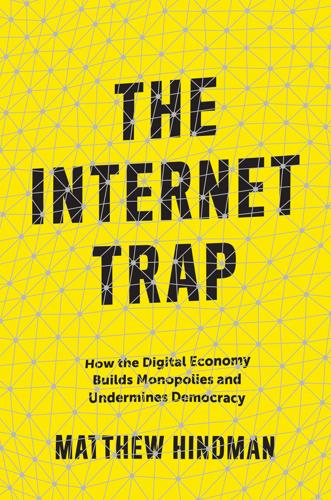
The Internet Trap: How the Digital Economy Builds Monopolies and Undermines Democracy
by
Matthew Hindman
Published 24 Sep 2018
Assumptions about diverse preferences lead to the “Waiting for Godot” belief that audiences will eventually democratize (see chapter 1), or to Negroponte’s assertion that the internet would dissolve the mass 70 • Chapter 4 media (see chapter 2), or to Andrew Sullivan’s claim that the internet allows for “the universe of permissible opinions to expand, unconstrained by the prejudices, tastes or interests of the old-media elite.”24 If the economics of broadcasting produced bland, homogenized content,25 the internet is supposed to produce the opposite. Chris Anderson’s writings on the “long tail” similarly assume that consumers have strong, diverse content preferences that will finally be satisfied in the digital era.26 Yet the empirical case for diverse media preferences is surprisingly modest. Early work on the economics of media often assumed that people had strong genre preferences for radio or television shows.27 Yet empirical work soon found that genre preferences were rather weak.28 As one influential British study concluded, it is not true that “programs with similar content appeal to some particular subgroup of viewers.”29 Viewers’ likes are not strongly influenced by genre—though their dislikes are often grouped.30 Some might see the lack of strong genre preferences as an artifact of the broadcast era.
…
Even progressive-leaning net neutrality advocates have made similar claims, suggesting that if the internet’s architecture can be kept open, the “natural” tendency toward decentralized audiences will reassert itself. This chapter challenges these claims. Most work to date has focused on either the concentrated head of the audience distribution, or the long tail of small outlets—alternately treating one or the other of these categories as exceptions. In contrast, this chapter builds new models that scale seamlessly from the largest websites down to hundreds of smaller ones. This approach does a better job of capturing the whole elephant, rather than just the tusks or the tail.
…
Managing brands and customer engagement in online brand communities. Journal of Service Management, 24(3), 223–44. Amatriain, X., and Basilico, J. (2012, April). Netflix recommendations: beyond the 5 stars. Blog post. Retrieved from http://techblog.netflix.com/2012/04/netflix-recommenda tions-beyond-5-stars.html. Anderson, C. (2004, December). The long tail. Wired. Retrieved from http://www.wired .com/wired/archive/12.10/tail.html. Anderson, D., and Mattingly, J. C. (2007). Propagation of fluctuations in biochemical systems, II: nonlinear chains. IET Systems Biology, 1(6), 313–25. Ariely, D., and Norton, M. I. (2008). How actions create—not just reveal—preferences.

Aerotropolis
by
John D. Kasarda
and
Greg Lindsay
Published 2 Jan 2009
Theirs is an intramural rivalry—Amazon bought Zappos in July 2009 for $850 million, its largest purchase ever. Curious to see what it could learn from its younger, more nimble counterpart, Amazon has kept the company separate thus far. Zappos has also been described as the “long tail” of footwear, borrowing a term typically applied to purely digital retailers like eBay or Apple’s iTunes Store, which offers a potentially infinite selection of music and sells more obscurities than hits. When Zappos opened in 1999, it relied on the long tail to find its customers—women wearing a size thirteen, for instance—who were frustrated by the selection at shoe stores. Zappos made its mark early by always being in stock.
…
What’s driving the growth of Amazon Prime, founder and CEO Jeff Bezos has told analysts, is the company’s third-party fulfillment service, which offers the same shipping options to its online partners and their customers. Or as one of his investors put it, “Amazon’s logistics is its secret sauce.” Prime’s higher sales velocity represents a significant shift in how Amazon does business. What drew Bezos to books was the long tail. Selection was his original selling proposition, not selection and speed, as with Zappos. Amazon was the poster child of a Net Age company— Bezos was Time’s Man of the Year in 1999—but with Prime, it has evolved into a retailer tailor-made for the Instant Age. Like Zappos, its velocity of shipping blurs the line between online and offline, erasing the last advantage of retail stores—that you can walk out with the merchandise.
…
Amazon Prime numbers are hard to come by; many thanks to ChannelAdvisor CEO Scot Wingo for publishing some on his blog Amazonstrategies.com. E-commerce statistics are from Forrester Research. The impact on booksellers is taken from the paper “E-commerce and the Market Structure of Retail Industries.” And all the talk about long tails comes, of course, from Chris Anderson’s The Long Tail. Dexter Muller and Commercial Advisors CEO Larry Jensen gave me a crash course in distribution and the effect that the proliferation of warehouses has had on Memphis in particular. The plight of Whitehaven residents was detailed by The New York Times in “Blacks in Memphis Lose Decades of Economic Gains” (May 30, 2010).

The People vs Tech: How the Internet Is Killing Democracy (And How We Save It)
by
Jamie Bartlett
Published 4 Apr 2018
The popular thinking of the time – repeated over and over by the era’s digital gurus and futurists – was that the net was decentralised and connected, and so would automatically lead to a competitive and distributed marketplace.1 No one knew exactly how, but influential figures like Chris Anderson called this ‘the long tail’ and were extremely excited about it. It seems obvious now that the nature of digital technology makes monopolies more rather than less likely. The most important reason for this is the effect of networks. If you join Facebook, your friends will be more likely to join too, which in turn makes their friends more likely to join.
…
The most famous application of this is the cryptocurrency bitcoin. These are certainly very interesting, and we’ll examine them in detail in the next chapter. However, advocates of this new technology sound a lot like the techno-optimists of the nineties, again promising with huge conviction a world of peer-to-peer, distributed exchanges and the long tail. But similar patterns as happened then seem to be emerging already. A small number of people own a disproportionately large amount of the bitcoins. And because bitcoin ‘mining’ is reliant on having the best technology and most powerful computing rigs, the mining function of many crypto-coins are concentrated in the hands of a small number of already wealthy people and venture capitalists

Groundswell: Winning in a World Transformed by Social Technologies
by
Charlene Li
and
Josh Bernoff
Published 23 May 2011
Seven weeks, for a total investment of $12,107.09: See Guy Kawasaki’s June 3, 2007, blog post “By the Numbers: How I built a Web 2.0, User-Generated Content, Citizen Journalism, Long-Tail, Social Media Site for $12,107.09” on the blog How to Change the World at http://forr.com/gsw1-25. 26. As Chris Anderson, author of The Long Tail: See The Long Tail: Why the Future of Business Is Selling Less of More by Chris Anderson (New York: Hyperion, 2006). The author’s blog is at www.thelongtail.com or http://forr.com/gsw1-26. 27. Here’s what one FastLane reader, for example, said about one the new Pontiac GTO: See Bob Lutz’s January 25, 2005, blog post “Sharpening the Arrowhead” on the blog GM FastLane at http://forr.com/gsw1-27. 28.
…
If you are a retailer, your lock on distribution is over. People are not just buying online; they are buying from each other. They are comparing your prices with prices all over the Internet and telling each other where to get the best deal on sites like redflagdeals.com. As Chris Anderson, author of The Long Tail,26 has pointed out, shelf space creates far less power when there’s nearly infinite selection online. If you are a financial services company, you no longer dominate flows of capital. Trading happens online, and consumers get financial advice from message boards on Yahoo! Finance and the Motley Fool.
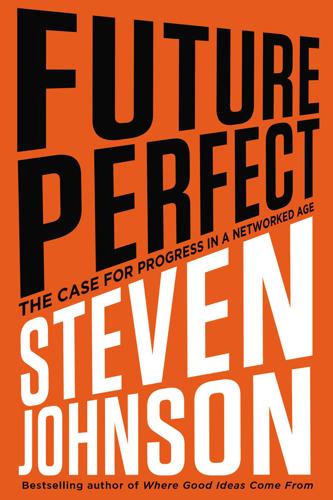
Future Perfect: The Case for Progress in a Networked Age
by
Steven Johnson
Published 14 Jul 2012
It was news that had significant financial and safety implications for their entire family. Yet despite its urgency, the news had arrived on their doorstep via the word-of-mouth network of two neighbors gossiping together. All of this would seem to reinforce an observation Chris Anderson (of Wired and The Long Tail fame) made several years ago, part of what he called the “Vanishing Point theory of news”: Our interest in a subject is in inverse proportion to its distance (geographic, emotional or otherwise) from us. For instance, the news that my daughter got a scraped knee on the playground today means more to me than a car bombing in Kandahar.
…
(http://www.archdaily.com/233194/can-you-crowdsource-a-city/). A number of sites and mobile apps are innovating in the area of peer-network urbanism; an overview of many of them is available at the DIY City website, http://diycity.org/. Chris Anderson’s “Vanishing Point theory of news” was originally published at http://www.longtail.com/the_long_tail/2007/01/the_vanishing_p.html. Journalism. The Pothole Paradox For more on the debate over the future of journalism, see my discussion with Paul Starr published in Prospect, “Are We on Track for a Golden Age of Serious Journalism?” For another, more skeptical, overview of journalism’s future in the age of peer networks, see “Confidence Game,” by Dean Starkman, published in the Columbia Journalism Review.

The Future of the Internet: And How to Stop It
by
Jonathan Zittrain
Published 27 May 2009
Craigslist, initiated as a “.org” by a single person, dominates the market for classified advertising online.33 Ideas like free Web-based e-mail, hosting services for personal Web pages, instant messenger software, social networking sites, and well-designed search engines emerged more from individuals or small groups of people wanting to solve their own problems or try something neat than from firms realizing there were profits to be gleaned. This is a sampling of major Internet applications founded and groomed by outsiders; start sliding down what Wired editor Chris Anderson calls the Long Tail—niche applications for obscure interests– and we see a dominance of user-written software.34 Venture capital money and the other artifacts of the firm-based industrial information economy can kick in after an idea has been proven, and user innovation plays a crucial role as an initial spark. GENERATIVITY AND A BLENDING OF MODELS FOR INNOVATION Eric von Hippel has written extensively about how rarely firms welcome improvements to their products by outsiders, including their customers, even when they could stand to benefit from them.35 His work tries to persuade otherwise rational firms that the users of their products often can and do create new adaptations and uses for them—and that these users are commonly delighted to see their improvements shared.
…
Cybervisionary David Weinberger’s twist on Andy Warhol’s famous quotation is the central issue for the rest of us: “On the Web, everyone will be famous to fifteen people.”70 Although Weinberger made his observation in the context of online expression, explaining that microaudiences are worthy audiences, it has further application. Just as cheap networks made it possible for businesses to satisfy the “long tail,” serving the needs of obscure interests every bit as much as popular ones71 (Amazon is able to stock a selection of books virtually far beyond the best sellers found in a physical bookstore), peer-produced databases can be configured to track the people who are of interest only to a few others.
…
According to Alexa.com, which monitors Internet traffic, as of March 2, 2007, Ebay.com was the seventh-most-visited Web site in the United States, and Craigslist.org was the tenth. See Aexa.com, http://wwwalexa.com/site/ds/top_sites?cc=US&ts_mode=country&lang=none (last visited Sep. 29, 2007). 34. See CHRIS ANDERSON, THE LONG TAIL: WHY THE FUTURE OF BUSINESS IS SELLING LESS OF MORE 50—51 (2006). 35. See, e.g., ERIC VON HIPPEL, DEMOCRATIZING INNOVATION 19 (2005); ERIC VON HIPPEL, THE SOURCES OF INNOVATION 25 (1988); Eric Von Hippel, Christoph Hienerth, & Peter Kragh, Slides: Users as Innovators: Implications for Denmark’s User-Centered Innovation Initiative Address at Copenhagen Business School (on file with author). 36.
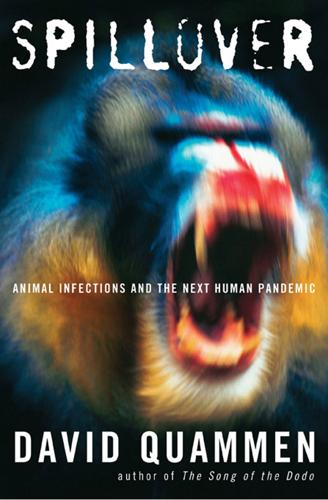
Spillover: Animal Infections and the Next Human Pandemic
by
David Quammen
Published 30 Sep 2012
I’m not going to summarize this body of work, because we’re in deep enough already; but I want to alert you to one small aspect that leads off irresistibly on a peculiar tangent. Escalante’s team reported in 2005 that P. vivax shares a recent ancestry with three kinds of macaque malaria. One of those is Plasmodium knowlesi, a parasite known from Borneo and Peninsular Malaysia, where it sometimes infects at least two native primates, the long-tailed macaque and the pig-tailed macaque. P. knowlesi occupies a strange place in medical annals, involving the treatment of neurosyphilis (syphilis of the central nervous system), which for a time in the early twentieth century was done using induced malarial fevers. The story goes like this. Dr.
…
Expanding their search between 2001 and 2006, the team identified hundreds more cases of P. knowlesi, including 266 from Sarawak, 41 from Sabah (the other Malaysian state on the island of Borneo), and 5 from an area of Peninsular Malaysia just northeast of Kuala Lumpur—not far, probably, from where BW caught his case in 1965. They also found P. knowlesi in most of the long-tailed macaques from which they were able to take blood, confirming that those monkeys are a reservoir. More dramatically, the team detected four human fatalities—four malaria patients, each of whom had gone to a hospital, been misdiagnosed with P. malariae (based on microscopy, the old way), developed severe symptoms, and died.
…
The piece appeared in print not long before I met them, and I was carrying a copy. Plasmodium knowlesi malaria, they wrote, is not a new emergent infection of humans. It has been getting into people for some while but it was overlooked. Three kinds of Asian primate serve as its reservoir hosts: the long-tailed macaque, the pig-tailed macaque, and the banded leaf monkey. Other monkeys, still unidentified, might be harboring the parasite too. Transmission from monkey to monkey (and from monkey to human) occurs by way of mosquitoes belonging to one group of closely related species, Anopheles leucosphyrus and its cousins, including Anopheles latens in Borneo.
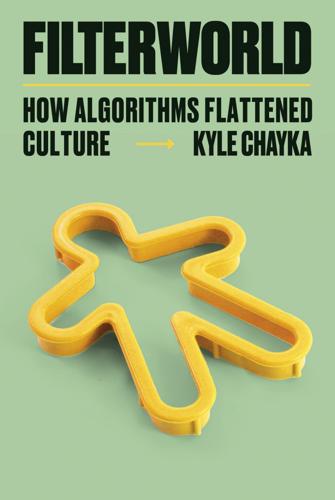
Filterworld: How Algorithms Flattened Culture
by
Kyle Chayka
Published 15 Jan 2024
Such feeds of suggested information are superficial and inspire quick, passive decision-making; as Internet users, we have been taught that the top results are the best ones. But we are missing the depth, the lesser-known spots. In 2006, the Wired editor-in-chief Chris Anderson published his hit book The Long Tail, arguing that the breadth of the Internet made it possible for niche businesses, products, and content to thrive. Popularity was a curve rising exponentially toward the left side of a graph; Anderson predicted that the long, flat part of the curve, with diverse but relatively unpopular things, would be able to sustain itself in a new way, because consumers would always be able to find the specific thing that they were seeking online.
…
In the Filterworld era, this effect has proven true in some ways. TikTok certainly enables a career in niche content production; one creator I enjoy following sustains herself by making videos about daily life on an Arctic island. But now-ubiquitous algorithmic recommendations have also made the left side of the long-tail graph that much larger, as they route even uninterested consumers toward the standardized set of content that has already proven popular. Leaked data from the video-game streaming platform Twitch suggested that only the top .01 percent of Twitch creators were able to earn the median U.S. income.
…
Anderson may not have considered that attention would equate so closely with profit, driven by advertising rather than, say, book or DVD sales. “Mass culture will not fall, it will simply get less mass,” Anderson predicted. We know now this is not the case. If anything, mass culture lately appears more aesthetically homogenous than ever. Steinarsson mourned for the long tail of Icelandic tourism against the tide of OTA recommendations. “There are so many places that are not on those lists and never will be on those lists,” he said. “How deep do you have to dig before you start seeing places that would really be something special?” The tourists’ experiences are flattened, not because they have no other option but because the digital platform has made it incredibly convenient to simply follow in the steps of everyone else, a turbocharged, more coercive version of the old-school tourist guidebook.

Insight Guides Iceland
by
Insight Guides
Published 6 Dec 2024
Rodent residents Iceland has several naturalised mammals introduced, deliberately or not, over the years. Four rodent species have settled here, arriving as stowaways on ships. These are the long-tailed field mouse or wood mouse (Apodemus sylvaticus), the house mouse (Mus musculus), the brown rat (Rattus norvegicus) and the black rat (Rattus rattus). The house mouse, brown rat and black rat are only found in and around urban areas; of them only the brown rat is common. Harbour seals. iStock The long-tailed field mouse (a uniquely Icelandic sub-species, Apodemus sylvaticus grandiculus) certainly merits its name, with a tail as long as its body (8–10cm/3–4ins).
…
It is found both near human habitation and in remote areas; eats mostly plants, berries and fungi, as well as small insects; does not hibernate; and sometimes takes shelter in houses and outbuildings in cold weather. Both the house mouse and long-tailed mouse are long-established residents in Iceland, probably dating back to the original settlement. Some zoologists believe that the long-tailed mouse must, like the fox, pre-date human habitation, as 1,000 years would not account for the development of this sub-species’ differences from its mainland cousins. The brown rat is believed to have arrived in 1840, and spread rapidly to every region. The black rat has been sighted from time to time since 1919, but is not firmly established.
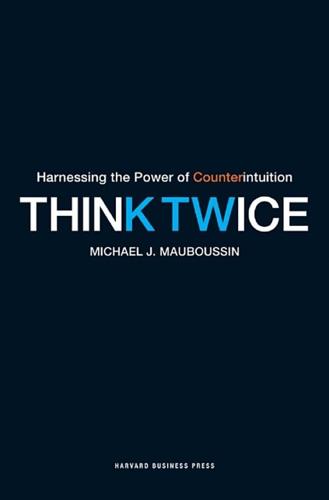
Think Twice: Harnessing the Power of Counterintuition
by
Michael J. Mauboussin
Published 6 Nov 2012
Abrams, Allan McRobie, Bruno Eckhardt, and Edward Ott, “Crowd Synchrony on the Millennium Bridge,” Nature 483 (November 3, 2005): 43–44. 7. Neal J. Roese and James M. Olsen, eds., What Might Have Been: The Social Psychology of Counterfactual Thinking (Mahwah, NJ: Lawrence Erlbaum Associates, 1994). 8. M. E. J. Newman, “Power Laws, Pareto Distributions and Zipf’s Law,” arXiv:condmat, May 29, 2006; Chris Anderson, The Long Tail: Why the Future of Business is Selling Less of More (New York: Hyperion, 2006); and Arthur DeVany, Hollywood Economics: How Extreme Uncertainty Shapes the Film Industry (New York: Routledge, 2004). 9. Nassim Nicholas Taleb, The Black Swan: The Impact of the Highly Improbable (New York: Random House, 2007), xvii–xviii. 10.
…
“The Better-Than-Average Effect.” In The Self in Social Judgment, edited by Mark D. Alicke, David A. Dunning, and Joachim I. Krueger, 85–106. New York: Psychology Press, 2005. Anderson, Camilla. “Iceland Gets Help to Recover from Historic Crisis.” IMF Survey Online, December 2, 2008. Anderson, Chris. The Long Tail: Why the Future of Business Is Selling Less of More. New York: Hyperion, 2006. Anderson, P. W. “More is Different.” Science 177, no. 4047 (1972): 393–396. Ariely, Dan. Predictably Irrational: The Hidden Forces That Shape Our Decisions. New York: Harper, 2008. Armstrong, J. Scott. “Combining Forecasts.”

Digital Wars: Apple, Google, Microsoft and the Battle for the Internet
by
Charles Arthur
Published 3 Mar 2012
The MSN search engine that was being replaced had worked on an 80:20 principle: 80 per cent of searches would be for 20 per cent of terms (in other words, most people would look for the same things), so if you optimized for the 80 per cent you’d do all right. The 80:20 principle was right, but the second assumption wasn’t. The ‘long tail’ of queries is enormous, in both volume and unpredictability. It turns out that people judge a search engine on the results not of common searches, but of uncommon ones: not ‘White House website’, but an explanation for the strange symptoms being exhibited by your cat, or putting in the name of a prospective date to see whether he goes rock climbing in tight shorts. If people don’t find what they want in the long tail, they will often try another search engine – if they’ve heard of it. People had heard of Google, and when MSN failed to provide what they wanted they headed over there instead.
…
If there is a single threat to the future of the smartphone, it is patents – and particularly software patents, which allow the patenting of an outcome rather than a process. If developers get too scared to develop, the apps market will become the province only of the well-funded and legally protected; the long tail of tiny developers with great ideas will be stunted. The outcome of the patent wars won’t be decided within a year or even two years. Yet, for Apple and Google and Microsoft, anything that dissuades developers from writing software for their platform (and so reduces the number of apps, which reduces the reliance on a particular OS) is bad.

Making Ideas Happen: Overcoming the Obstacles Between Vision and Reality
by
Scott Belsky
Published 31 Mar 2010
During the journey, communal forces are instrumental in refining the very substance of the idea, holding us accountable for making it happen, building a network that will push us to go above and beyond, providing us with valuable material and emotional support, and spreading the word to attract resources and publicity. By sharing your idea, you take the first step in creating the community that will act as a catalyst to making it happen. Take Wired magazine’s editor in chief, Chris Anderson, as an example. Anderson wrote the best-selling book The Long Tail, which argues in favor of a business model that capitalizes on underserved niches (à la Amazon or Netflix), selling a large amount of rare (or low-demand) items in small quantities to a widely scattered cross-section of consumers. In many ways Anderson’s theories relate to how new technologies allow us to harness the power of the masses—and it’s a philosophy that he himself embraces.
…
Anderson uses his blog to share and “beta test” the ideas that go into his books. “My philosophy is to give all of my ideas away for free,” he explains, knowing that those ideas “will be improved by a community that collectively knows more than I do.” A case in point is his latest book Free: The Future of a Radical Price, which, like The Long Tail, evolved out of a feature article originally published in Wired. Using his blog, Anderson refined the concepts presented in the book based on feedback provided to him via comments and e-mails. In a sense anticipating his critics, an entire chapter of Free is “constructed around complaints or concerns or push-back,” wherein Anderson directly quotes issues raised by his readers and then responds to them.
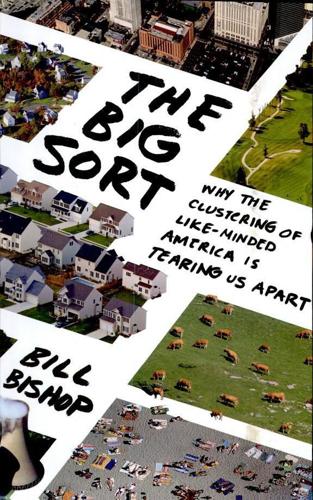
The Big Sort: Why the Clustering of Like-Minded America Is Tearing Us Apart
by
Bill Bishop
and
Robert G. Cushing
Published 6 May 2008
[back] *** †journalist Chris Anderson described this phenomenon, which he called "the long tail," from the producer's point of view in an article he wrote for Wired magazine in 2004. Anderson's metaphor was based on the statistical bell curve. His point was that digital technology, cheap transportation, and the Internet have made it possible and profitable to sell to the smaller markets found on the long tails of the bell curve. Anderson contended that there are huge volumes of sales within these smaller markets. From a consumer's point of view, however, it still makes sense to live around those with similar tastes. See Chris Anderson, "The Long Tail," Wired, October 2004, http://www.wired.com/wired/archive/12.10/tail.html.
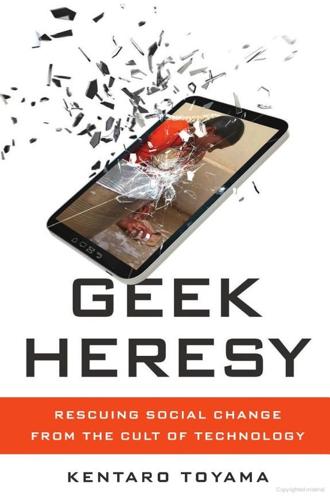
Geek Heresy: Rescuing Social Change From the Cult of Technology
by
Kentaro Toyama
Published 25 May 2015
On the one hand, more books of greater variety are being published. There is a growing population of writers, and publishing is being commoditized.5 On the other hand, the books that receive widespread attention and land on best seller lists are a dwindling proportion of the total. The first trend is sometimes called “the long tail”; the second represents a “winner-take-all” economy.6 Commentators tend to highlight one or the other of these phenomena, but both are happening at once. Together they cause the shrinking middle that is the hallmark of any industry – music, movies, manufacturing – whose product can be replicated and distributed cheaply.
…
The quotation is from Orwell (1936). 3.Barnes & Noble Booksellers (n.d.). 4.Thompson (2010) offers a rich history and analysis of the book industry in the four decades since about 1970. 5.Thompson (2010), pp. 389–392, describes this trend in detail and calls it a “winner-takes-more market.” 6.In respective, eponymous books, Chris Anderson (2008) describes the long tail, and Robert Frank and Philip Cook (1996), the winner-take-all society. 7.Duflo et al. (2012). 8.In another paper with different colleagues, Duflo herself writes, “[The] recent evidence suggests that many interventions which increase school participation do not improve test scores for the average student.
…
Measles & Rubella Initiative, www.redcross.org/what-we-do/international-services/measles-initiative. American Sociological Association. (2006). Peter H. Rossi (1921–2006). Footnotes: Newsletter of the American Sociological Association, Dec. 2006, 34(9), www.asanet.org/footnotes/dec06/indextwo.html. Anderson, Chris. (2008). The Long Tail: Why the Future of Business Is Selling Less of More. Hyperion. ———. (2009). Q&A with Clay Shirky on Twitter and Iran. TED Blog, June 16, 2009, http://blog.ted.com/2009/06/16/qa_with_clay_sh/. Angelucci, Manuela, Dean Karlan, and Jonathan Zinman. (2013). Win some lose some? Evidence from a randomized microcredit program placement experiment by Compartamos Banco.

Bank 3.0: Why Banking Is No Longer Somewhere You Go but Something You Do
by
Brett King
Published 26 Dec 2012
The first was that the asset-backed securities underlying the subprime bubble had become “toxic” and only by purchasing these toxic assets could the market come to terms with the ongoing factoring in of these assets. The second was that the crisis had created a liquidity and capital adequacy crisis for banks and that they could only free up funds for the general public if their liquidity was improved. The first goal may have been accomplished although the long tail may yet still appear. The second goal was a failure with respect to customer expectations, however. While banks achieved a welcome top-up that reduced their cash-flow problems, internal risk strategy dictated that in an economy in trouble, all but the very best customers represented too great a credit risk to chance lending them money.
…
Figuring out the right mix between personalisation, responsiveness to individual needs, privacy rules and security will be an important distinction in creating a positive self-service experience. Initially, providing customisation around age- and gender-related services will be enough of a differentiation from a user-experience perspective. This is all part of a push to make our digital experience more personalised and human. The long tail of ATM networks In Australia, cash usage for retail payments has fallen more than 25 per cent in the last five years. In both the UK and US markets, cash usage as a payment method will decline between 17–20 per cent over the next five years. Now this is not the death of cash. In fact, it is likely that cash will be with us into the next decade.
…
“For a generation of customers used to do their buying research via search engine, a company’s brand is not what the company says it is, but what Google says it is. The new tastemakers are us. Word of mouth is now a public conversation, carried in blog comments and customer reviews, exhaustively collated and measured . . . the ants have megaphones.” —Chris Anderson, The Long Tail: Why the Future of Business is Selling Less of More (2006) Social media is also surprisingly effective in creating long-lasting ties. Business consulting firm, Bain & Company, released a report19 in September 2011 that concluded brands that were early adopters of social media (Dell, Wal-Mart, Starbucks, JetBlue, and American Express) have captured real economic value from their budget investments.

The Geek Feminist Revolution
by
Kameron Hurley
Published 1 Jan 2016
He makes writing books sound like a get-rich-quick scheme. I take my drink. I don’t pour it on his head. I remember this is a long game. I remember that both self-published authors and trad-published authors have the same small handful of breakouts and the same massive, slushy mire of “everyone else” clamoring for signal on the long tail. I think I’ve been on the long tail a long time, but the more I talk to other writers the more I realize that that whole slog—the shitty apartment with the shitty boyfriend, the frigid outhouses in Alaska, the cockroach wrangling in South Africa—wasn’t actually the start of it. That wasn’t the part where things got really interesting.
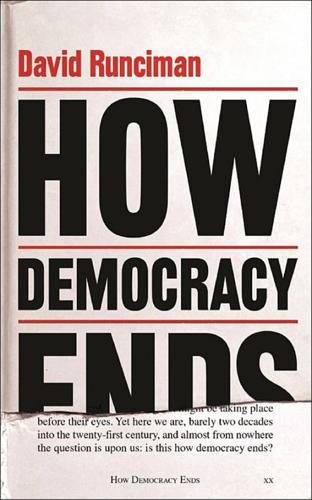
How Democracy Ends
by
David Runciman
Published 9 May 2018
Road deaths are also on the rise. As a result, the US is the first country in the developed world that has seen a decline in life expectancy. More than 100,000 Americans died last year either from an overdose or in a road accident. This is the true American carnage. What the US is currently experiencing could be called the long tail of violence: there is plenty of it, but most of it is tailored to particular groups. It is rarely a collective experience. Violence has not disappeared. Instead, it has spread out and thinned out, touching individual lives in myriad ways that barely register with those not directly affected. Much of this violence is privatised, domesticated or institutionalised in places designed to keep it off the minds of the majority.
…
In every long tail distribution, along with the proliferation of tiny events, there is a small number of overwhelming ones. Trump seems able to do almost nothing to reach out to the millions of Americans who are at risk from everyday violence. Yet he is quite capable of destroying millions himself. The long tail of violence is emblematic of the bind democracy is in: the threats it faces are either too big or too small. What the opioid epidemic and the risk of nuclear war with North Korea have in common is the difficulty democratic politics finds in getting a grip on them. The space between the personal and the apocalyptic, which is where democratic politics traditionally plays out, has become a battleground for rival world views which are informed by personal or apocalyptic expectations of the worst that could happen.
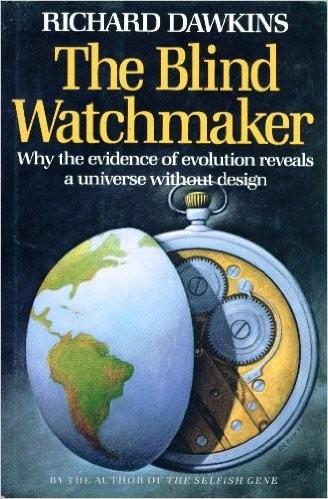
The Blind Watchmaker; Why the Evidence of Evolution Reveals a Universe Without Design
by
Richard Dawkins
Published 1 Jan 1986
It is often to be seen performing its spectacular display flight over the grasslands of Africa, wheeling and looping the loop, like an aeroplane with a long advertising streamer. Not surprisingly it can be grounded in wet weather. Even a dry tail that long must be a burdensome load to carry around. We are interested in explaining the evolution of the long tail, which we conjecture has been an explosive evolutionary process. Our starting point, therefore, is an ancestral bird without a long tail. Think of the ancestral tail as about 3 inches long, about a sixth the length of the modern breeding male’s tail. The evolutionary change that we are trying to explain is a sixfold increase in tail length.
…
When the females of a population have strong preferences for male characteristics, it follows, by the reasoning we have been through, that each male body will tend to contain copies of genes that make females prefer his own characteristics. If a male has inherited a long tail from his father, the chances are that he has also inherited from his mother the genes that made her choose the long tail of his father. If he has a short tail, the chances are that he contains genes for making females prefer short tails. So, when a female exercises her choice of male, whichever way her preference lies, the chances are that the genes that bias her choice are choosing copies of themselves in the males.
…
Returning to the Fisher/Lande runaway theory, what is needed now is evidence from real animals. How should we go about looking for such evidence? What methods might be used? A promising approach was made by Malte Andersson, from Sweden. As it happens, he worked on the very bird that I am using here to discuss the theoretical ideas, the long-tailed widow bird, and he studied it in its natural surroundings in Kenya. Andersson’s experiments were made possible by a recent advance in technology: superglue. He reasoned as follows. If it is true that the actual tail length of males is a compromise between a utilitarian optimum on the one hand, and what females really want on the other, it should be possible to make a male super-attractive by giving him an extra long tail.
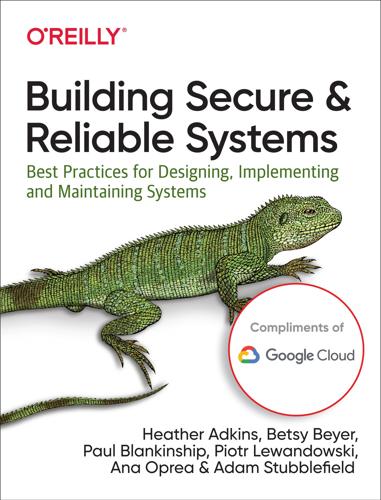
Building Secure and Reliable Systems: Best Practices for Designing, Implementing, and Maintaining Systems
by
Heather Adkins
,
Betsy Beyer
,
Paul Blankinship
,
Ana Oprea
,
Piotr Lewandowski
and
Adam Stubblefield
Published 29 Mar 2020
Where security keys were not supported (for example, in the case of some hardware device certificate management and third-party web applications), Google worked directly with the vendor to request and add support. We then had to deal with the long tail of applications. Since all OTPs were centrally generated, we could figure out which application to target next by tracking the clients making OTP requests. In 2015, the team focused on completing the rollout and deprecating the OTP service. We sent users reminders when they used an OTP instead of a security key, and eventually blocked access via OTP. Though we had dealt with most of the long tail of OTP application needs, there were still a few exceptions, such as mobile device setup. For these cases, we created a web-based OTP generator for exceptional circumstances.
…
Letting the user know that their action was not in line with the desired policy within minutes or hours allows them to take action to fix the issue. Track progress and determine how to address the long tail. By examining user requests for OTPs by application, we could identify which applications to focus on next. Use dashboards to track progress and identify whether alternative solutions with similar security properties can work for the long tail of use cases. Long-Term Change: External Demand In some situations, you either have or need much more time to roll out a change—for example, an internally driven change that requires significant architectural or system changes, or a broader industry-wide regulatory change.

Race Against the Machine: How the Digital Revolution Is Accelerating Innovation, Driving Productivity, and Irreversibly Transforming Employment and the Economy
by
Erik Brynjolfsson
Published 23 Jan 2012
New platforms leverage technology to create marketplaces that address the employment crisis by bringing together machines and human skills in new and unexpected ways: eBay and Amazon Marketplace spurred over 600,000 people to earn their livings by dreaming up new, improved, or simply different or cheaper products for a worldwide customer base. The Long Tail of new products offered enormous consumer value and is a rapidly growing segment of the economy. Apple’s App Store and Google’s Android Marketplace make it easy for people with ideas for mobile applications to create and distribute them. Threadless lets people create and sell designs for t-shirts.

What's Mine Is Yours: How Collaborative Consumption Is Changing the Way We Live
by
Rachel Botsman
and
Roo Rogers
Published 2 Jan 2010
With thanks, Rachel and Roo Selected Bibliography Akerlof, George A., and Robert J. Shiller. Animal Spirits: How Human Psychology Drives the Economy and Why It Matters for Global Capitalism (Princeton University Press, 2009). Andersen, Kurt, and Tom Brokaw. Reset: How This Crisis Can Restore Our Values and Renew America (Random House, 2009). Anderson, Chris. The Long Tail: Why the Future of Business Is Selling Less of More (Hyperion, 2006). Atwood, Margaret. Payback: Debt and the Shadow Side of Wealth (Bloomsbury, 2008). Axelrod, Robert. The Evolution of Cooperation (Basic Books, 1984). Barabási, Albert-László. Linked: How Everything Is Connected to Everything Else and What It Means (Plume, 2003).
…
Andy Hobsbawn, “Small Is the Next Big Thing,” http://smallbig.typepad.com/files/pdf/small-is-the-next-big-thing.pdf. 33. eBay 2009 Analyst Day slide presentation. Retrieved October 2009, www.slideshare.net/evanwolf/ebay-2009-analyst-day. 34. Magaret Atwood, Payback: Debt and the Shadow Side of Wealth (Bloomsbury, 2009), 162. 35. Chris Anderson, The Long Tail: Why the Future of Business Is Selling Less of More (Hyperion, 2006). 36. “SwapTree Launches Free Swapping Service,” press release (June 28, 2007), www.redorbit.com/news/technology/983395/swaptree_launches_free_swapping_service__trade_books_cds_dvds/index.html. 37. Daniel Nissanoff, FutureShop: How the New Auction Culture Will Revolutionize the Way We Buy, Sell, and Get Things We Really Want (Penguin, 2006). 1.

Being Mortal: Medicine and What Matters in the End
by
Atul Gawande
Published 6 Oct 2014
And it all happened because of an assuredly normal circumstance: a patient and family unready to confront the reality of her disease. I asked Marcoux what he hopes to accomplish for terminal lung cancer patients when they first come to see him. “I’m thinking, can I get them a pretty good year or two out of this?” he said. “Those are my expectations. For me, the long tail for a patient like her is three to four years.” But this is not what people want to hear. “They’re thinking ten to twenty years. You hear that time and time again. And I’d be the same way if I were in their shoes.” You’d think doctors would be well equipped to navigate the shoals here, but at least two things get in the way.
…
I think of Gould and his essay every time I have a patient with a terminal illness. There is almost always a long tail of possibility, however thin. What’s wrong with looking for it? Nothing, it seems to me, unless it means we have failed to prepare for the outcome that’s vastly more probable. The trouble is that we’ve built our medical system and culture around the long tail. We’ve created a multitrillion-dollar edifice for dispensing the medical equivalent of lottery tickets—and have only the rudiments of a system to prepare patients for the near certainty that those tickets will not win. Hope is not a plan, but hope is our plan. * * * FOR SARA, THERE would be no miraculous recovery, and when the end approached, neither she nor her family was prepared.

The Digital Party: Political Organisation and Online Democracy
by
Paolo Gerbaudo
Published 19 Jul 2018
This term designates a person who is not very active, a mostly passive agent who is involved only occasionally in the life of the party, despite often being a fully registered member. It is a person who may occasionally participate in an online consultation or contribute to party communication by sharing a post or tweet, but only with great irregularity and often relapsing into latency. This is, to use the term of Chris Anderson, the ‘long tail’ of the party, which encompasses the great majority of supporters, and also of registered members.287 To refer back to Jacob Nielsen’s discussion of participation, this is the 90 per cent of party supporters, whose participation levels are mostly very low and mainly of a purely reactive type.
…
Nicola Biondo and Marco Canestrari, Supernova: i segreti, le bugie e i tradimenti del Movimento 5 stelle: storia vera di una nuova casta che si pretendeva anticasta (Milano: Ponte alle Grazie, 2018). 284. John D. May, ‘Opinion structure of political parties: the special law of curvilinear disparity’, Political Studies 21, no.2 (1973): 135–151. 285. Bond and Exley, Rules for revolutionaries, p.134. 286. Bond and Exley, Rules for revolutionaries, p.2. 287. Chris Anderson, The long tail: how endless choice is creating unlimited demand (New York: Random House, 2007). 288. Michels, Political parties. 289. Sigmund Neumann and Frederick C. Barghoorn, Modern political parties: approaches to comparative politics (Chicago, IL: University of Chicago Press, 1956.). 290. Immanuel Kant, Toward perpetual peace and other writings on politics, peace, and history (New Haven: Yale University Press, 2006), pp.74–75. 291.

The Rational Optimist: How Prosperity Evolves
by
Matt Ridley
Published 17 May 2010
p. 106 ‘when per capita income reaches about $4,000, people demand a clean-up of their local streams and air’. Goklany, I. 2008. The Improving State of the World. Cato Institute. p. 107 ‘because people were enriching themselves and demanding higher standards’. Moore, S. and Simon, J. 2000. It’s Getting Better All the Time. Cato Institute. p. 107 ‘The “long tail” of the distribution’. Anderson, C. 2006. The Long Tail: Why the Future of Business Is Selling Less of More. Hyperion. p. 108 ‘now-unfashionable philosopher Herbert Spencer who insisted that freedom would increase along with commerce’. Quotes are from 1842 essay for The Nonconformist and 1853 essay for The Westminster Review.
…
The market found it. Moreover, thanks to the internet, the economy is getting better and better at meeting the desires of minorities. Because the very few people in the world who need fishing rod attachments or books on fourteenth-century suicide can now find suppliers on the web, niches are thriving. The ‘long tail’ of the distribution – the very many products that are each wanted by very few, rather than vice versa – can be serviced more and more easily. Freedom itself owes much to commerce. The great drive to universal suffrage, religious tolerance and female emancipation began with pragmatic enthusiasts for free enterprise, like Ben Franklin, and was pressed forward by the urban bourgeoisie as a response to economic growth.

The Zero Marginal Cost Society: The Internet of Things, the Collaborative Commons, and the Eclipse of Capitalism
by
Jeremy Rifkin
Published 31 Mar 2014
There is even discussion about “charging corporate recruiters for access to the best students.”21 World-class universities are taking a gamble that the global reach and visibility that MOOCs give their “rock-star” faculties will draw the best and brightest students to their admissions offices. Like their counterparts in the commercial arena, they are hoping to grab hold of the long tail and profit by offering the courses free online to millions of students and corralling in a tiny percentage of those students to their campuses. Their rationale is that by giving their intellectual gifts away for free, they will be helping millions of online students who ordinarily couldn’t afford such an education, while capturing a sufficient number of the best students to maintain their own brick-and-mortar operations.
…
The cost of serving the 100,000th student who enrolls in a MOOC is essentially zero, which is why the price is zero, too. Open-source textbooks and other free online resources will drive the prices of supporting materials toward the zero line as well.22 What Carey is talking about is patently obvious. Whatever “marginal value” elite universities might exact on the long tail by providing free education to hundreds of millions of students is paltry compared to the loss of revenue to the brick-and-mortar system of higher education as a whole, when the marginal cost of teaching online is nearly zero and the courses are nearly free. Does any academic or social entrepreneur really believe that the traditional, centralized, brick-and-mortar education will survive as we know it in a world where the best education money can buy is made free online?
…
In a sober editorial on “The End of the Free Lunch,” it takes umbrage at what it regards as a faulty assumption that if social media sites can aggregate millions of users by providing them with free content, advertisers will be anxious to target ads on the medium, in the hope of capturing a percentage of the “long tail.” But what if the users aren’t listening, aren’t watching, and are looking to their peers for product recommendations and validation? The Economist concludes that “the number of companies that can be sustained by revenues from internet advertising turns out to be much smaller than many people thought, and Silicon Valley seems to be entering another ‘nuclear winter.’”89 Advertising revenues are beginning to reflect the pessimism.
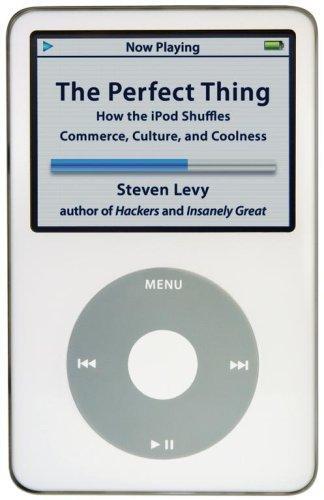
The Perfect Thing: How the iPod Shuffles Commerce, Culture, and Coolness
by
Steven Levy
Published 23 Oct 2006
But when you typed in the name of even the most obscure song you could think of, it would grind away until it found the song on the computer hard drive of some stranger you would never meet. Someone always had your song; the system could not be stumped. (The ability of the Internet to expeditiously deliver items that appealed to only a tiny slice of the buying population, to the very few who wanted such goods, would later be dubbed the Long Tail effect.) Then you would begin the process—not always successful—of handshaking with that stranger's computer and downloading a song. Sometimes it took a while, but it was always amazing when the download was finished and you'd play the song. So amazing that the fact that you had gotten the song for free was almost a secondary consideration.
…
Notes 139 MP3.com, Napster, WinAmp: In addition to my own reporting, I consulted Coleman John Alderman, Sonic Boom: Napster, MPS, and the New Pioneers of Music (Cambridge, Mass.: Perseus, 2001). My researcher Jodi Mardesch also supplied me with earlier interviews of MP3.coms Michael Robertson. 142 Long Tail: The best explanation of this by far comes in Chris Andersons The Long Tail: Why the Future of Business Is Selling Less or More (New York: Hyperion, 2006). 146 "the false lesson of Napster": Walt Mossberg, "Personal Technology," The Wall Street Journal, February 7,2002. 148 a major military campaign: Besides my interviews with people inside Apple and at the record labels, I drew on Peter Burrows, "Show Time!"
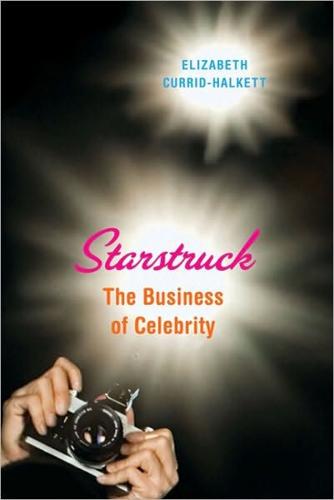
Starstruck: The Business of Celebrity
by
Currid
Published 9 Nov 2010
American Sociological Review 52 (1987): 440–55. DiSalvo, David. “Are Social Networks Messing with Your Head?” Scientific American Mind, January 2010, p. 48. Elberse, Anita. “The Power of Stars: Do Star Actors Drive the Success of Movies?” Journal of Marketing 71, no. 4 (2007). ———. “Should You Invest in the Long Tail?” Harvard Business Review (2008). Erdogan, Zafer B., Michael Baker, and Stephen Tagg. “Selecting Celebrity Endorsers: The Practitioner’s Perspective.” Journal of Advertising Research 41, no. 3 (2001): 39–48. Facebook.com. “Press Room: Statistics.” www.facebook.com/facebook?ref=pf#!/press/info.php?
…
Krueger, “The Economics of Real Superstars.” The effects have also been found in empirical studies of sports. See Lucifora and Simmons, “Superstar Effects in Sports,” and Nüesch, “The Economics of Superstars and Celebrities,” chapter 2. 23. DiMaggio, “Classification in Art.” 24. Elberse, “Should You Invest in the Long Tail?” 25. See Adler, “Stardom and Talent.” Adler argues that increasing numbers of people consuming the same product generates greater consumption capital, which makes the product more valuable. A rock concert, after all, is more powerful when the stadium is full and people are engaging in a shared experience. 26.
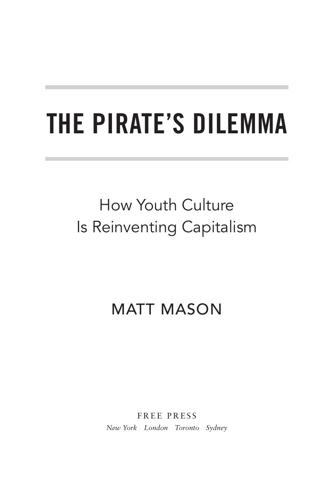
The Pirate's Dilemma: How Youth Culture Is Reinventing Capitalism
by
Matt Mason
In 2007 both the U.S. government and Microsoft were caught by Wikipedia editors tampering with their own entries (editing your own page is a practice frowned on by Wikipedia users). A 2005 study by the science journal Nature compared forty-two science entries in Wikipedia and the Encyclopaedia Britannica. They found an average of four errors per entry in Wikipedia, three errors per entry in Britannica. But as Chris Anderson noted in The Long Tail, “shortly after the report came out, the Wikipedia entries were corrected, while Britannica will have to wait for its next reprinting.” Wikipedia is usually pretty reliable, and covers much more ground than a traditional encyclopedia ever has. It may not be perfect, but if you want detailed information on the history of the Jedi, the Pamela Anderson sex tape, or the Homebrew Computer Club, Wikipedia rules Britannica every time.
…
Brian Bergstein, “Microsoft Offers Cash for Wikipedia Edit,” Newsvine.com, January 23, 2007. http://www.newsvine.com/_news/2007/01/23/534218-microsoft-offers-cash-for-wikipedia-edit. Stacy Schiff, “Know It All: Can Wikipedia conquer expertise?” The New Yorker, July 31, 2006. http://www.newyorker.com/archive/2006/07/31/060731fa_fact. Chris Anderson, The Long Tail (New York: Hyperion, 2006), p. 69. Jimmy Wales, interview by author, November 14, 2006 (other quotes from Wales that appear throughout this chapter are taken from the same interview). Gregg Keizer, “Linux To Ring Up $35 Billion By 2008,” TechWeb, December 16, 2004. http://www.techweb.com/wire/showArticle.jhtml?
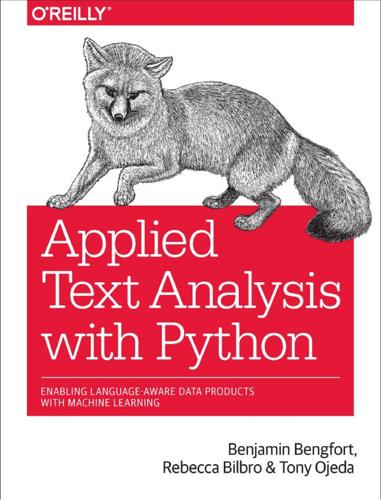
Applied Text Analysis With Python: Enabling Language-Aware Data Products With Machine Learning
by
Benjamin Bengfort
,
Rebecca Bilbro
and
Tony Ojeda
Published 10 Jun 2018
Bag-of-words models and the frequency representation in particular rely on the assumption that word count is a close enough approximation of the document contents, encoding enough information to differentiate it from other documents. However, this comes at the cost of highly frequent terms being represented by orders of magnitude over other terms. In the next section we will explore one-hot encoding, which eliminates this problem. One-Hot Encoding Frequency based encoding methods suffer from the long tail, or Zipfian distribution, that characterizes natural language. Because of this distribution, some features (tokens) are orders of magnitude more “significant” than other less frequent tokens and hapax legomena. This can have a significant impact on some models, particularly models which expect normally distributed features, generalized linear models for example.
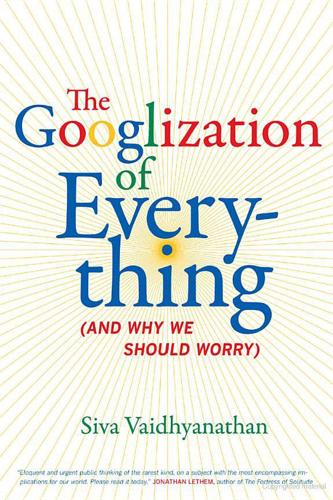
The Googlization of Everything:
by
Siva Vaidhyanathan
Published 1 Jan 2010
For example, almost everybody kind of likes Fleetwood Mac’s 1977 album Rumours, so the fact that I bought it long ago says nothing special about me. But I am one of the few people who really digs their earlier, bluesy Then Play On. That says something about me that might be useful to marketers. As Joseph Turow explained in Niche Envy, and Wired editor Chris Anderson describes in The Long Tail, market segmentation is vital to today’s commerce. In order for marketers and vendors to target messages and products to us, they must know our eccentricities—what makes us distinctive, or, at least, to which small interest groups we belong. Forging a mass audience or market is a waste of time and money unless you are selling soap.67 Even the modern liberal state, like those of North America and Western Europe, wants us to be ourselves.
…
Brower, review of Sonia Combe, Une société sous surveillance: Les intellectuels et la Stasi, in Totalitarian Movements and Political Religions 2 (2001): 88–92; Gary Bruce, “The Prelude to Nationwide Surveillance in East Germany: Stasi Operations and Threat Perceptions, 1945–1953,” Journal of Cold War Studies 5, no. 2 (May 1, 2003): 3–31; Sonia Combe, Une société sous surveillance: Les intellectuels et la Stasi (Paris: Albin Michel, 1999). 67. Chris Anderson, The Long Tail: Why the Future of Business Is Selling Less of More (New York: Hyperion, 2006). 68. Eric Lichtblau, Bush’s Law: The Remaking of American Justice (New York: Pantheon Books, 2008). 240 NOTES TO PAGES 1 1 5–22 CH APTER 4. THE GO O GLI ZAT I O N O F T H E WO R L D 1. Amit Agarwal, “French Town Changing Name to Improve Ranks in Google,” Digital Inspiration, February 25, 2009, www.labnol.org; Mark Milian, “French Town Eu Considers Changing Name for Web Search Visibility,” Los Angeles Times, February 25, 2009. 2.
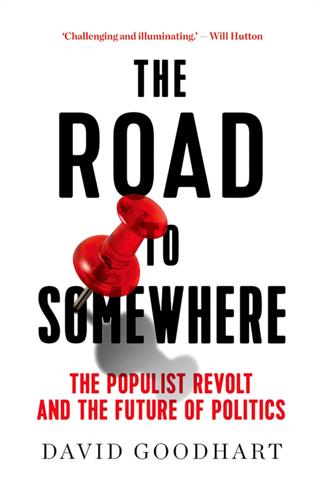
The Road to Somewhere: The Populist Revolt and the Future of Politics
by
David Goodhart
Published 7 Jan 2017
Until Labour Prime Minister Jim Callaghan made his famous Ruskin College speech about educational standards in 1976 it had barely featured as a political issue. For the past forty years it has moved much closer to the centre of national life—yet many established Anywhere biases have remained in place: the dominance of elite universities, the lowly status of much technical and vocational education, the negligence towards the ‘long tail’ bottom 20 or 30 per cent of school leavers still in often chaotic schools. Real spending on education has doubled in that thirty year period with a big increase under New Labour (though as a share of national income it has remained relatively constant). There has also been a big change in expectations towards the mass of pupils who, for the first time in British history, have been expected to take exams and acquire qualifications (including, for almost half the age cohort, higher educational ones).
…
(Similarly, for the growing ethnic minority middle class there is evidence of clustering at the bottom of the top, see the Policy Exchange report ‘Bittersweet Success’ on glass ceilings for ethnic minorities.)11 It may indeed be the case that the longer-term trend is for high levels of social mobility—both absolute and relative—to become ever harder to achieve, particularly at the very top and in the long tail at the bottom. Social mobility has always been ‘sticky’ downwards—once people reach a certain level of wealth, or position, their children tend not to fall back too far; this was true even in the Soviet bloc. When, for example, the big bang swept out some of the old school tie brokers from the City they were more likely to become estate agents than binmen.
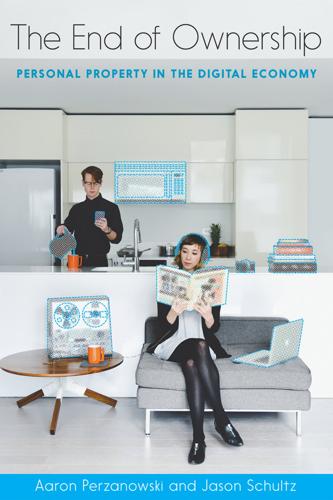
The End of Ownership: Personal Property in the Digital Economy
by
Aaron Perzanowski
and
Jason Schultz
Published 4 Nov 2016
As a matter of disclosure, one of the authors of this book was a paid consultant for the plaintiffs in the antitrust case against Apple. 19. Doctorow, Information Doesn’t Want To Be Free, 593. 20. This results in what Chris Anderson called “the long tail,” where the low costs of distribution allow for works to remain in circulation, even if their audience is small in absolute terms. See Chris Anderson, The Long Tail (New York: Hatchette Books, 2006). 21. Eric von Hippel, Democratizing Innovation (Cambridge, MA: MIT Press, 2005), http://web.mit.edu/evhippel/www/democ1.htm, accessed September 5, 2015. 22. Ibid. 23. Kevin Poulsen, “Hackers Sued for Tinkering with Xbox Games,” SecurityFocus, February 9, 2005, http://www.securityfocus.com/news/10466, accessed September 5, 2015. 24.

The Digital Divide: Arguments for and Against Facebook, Google, Texting, and the Age of Social Netwo Rking
by
Mark Bauerlein
Published 7 Sep 2011
As a result, DoubleClick proudly cites on its website “over 2,000 successful implementations” of its software. Yahoo! Search Marketing (formerly Overture) and Google AdSense, by contrast, already serve hundreds of thousands of advertisers apiece. Overture and Google’s success came from an understanding of what Chris Anderson refers to as “the long tail,” the collective power of the small sites that make up the bulk of the Web’s content. DoubleClick’s offerings require a formal sales contract, limiting their market to the few thousand largest websites. Overture and Google figured out how to enable ad placement on virtually any Web page. What’s more, they eschewed publisher/ad-agency-friendly advertising formats such as banner ads and pop-ups in favor of minimally intrusive, context-sensitive, consumer-friendly text advertising.
…
What’s more, they eschewed publisher/ad-agency-friendly advertising formats such as banner ads and pop-ups in favor of minimally intrusive, context-sensitive, consumer-friendly text advertising. The Web 2.0 lesson: leverage customer-self service and algorithmic data management to reach out to the entire Web, to the edges and not just the center, to the long tail and not just the head. Not surprisingly, other Web 2.0 success stories demonstrate this same behavior. eBay enables occasional transactions of only a few dollars between single individuals, acting as an automated intermediary. Napster (though shut down for legal reasons) built its network not by building a centralized song database, but by architecting a system in such a way that every downloader also became a server, and thus grew the network.
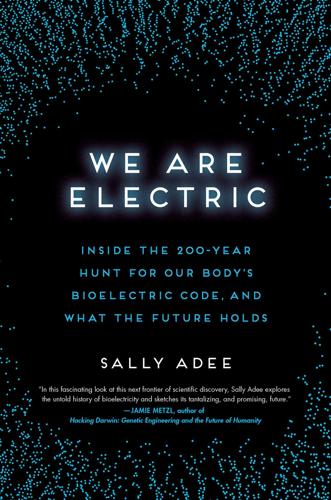
We Are Electric: Inside the 200-Year Hunt for Our Body's Bioelectric Code, and What the Future Holds
by
Sally Adee
Published 27 Feb 2023
So while Volta’s invention of the battery did not itself invalidate any of Galvani’s theories about animal electricity, it effectively shut down all further challenge. Volta had changed the terms of the debate, leaving his contemporaries so dazzled by the device and its potential that they forgot what the original fight was about. Galvani’s ideas weren’t so much disproved as abandoned. The long tail In the wake of Volta’s perceived victory, Galvani’s theories were shunned by science for nearly half a century. Galvanism was quickly overrun by quacks and their most gruesome pseudo-medical treatments. At the same time, the battery—and the “artificial” electricity it was able to make flow continuously for the first time—quickly went on to underpin many of the century’s most important advances in the physical sciences.
…
Now, part of this is just the inevitable rollercoaster of the hype cycle. First, you get a big splashy announcement of a new possibility and everyone is very excited. Then the grind of basic research sets in, and there’s a long trough of disillusionment because the new hot devices aren’t ready immediately. Eventually, positive results start to emerge from the long tail of clinical research, and slowly the once-hyped revolution is integrated into routine care at your doctor’s office, and fades into the background of everyday life. And in fact there are signs that this is starting to happen—in 2022 Galvani put the first autoimmune disorder device into a clinical trial.7 So maybe electroceuticals are tracing this classic innovation curve.

A Short, Sharp Shock
by
Kim Stanley Robinson
Published 6 Jul 1990
Inside the building rugs and tapestries warmed one central room, which was lit by a score of small torches. A big square bed against one wall was piled high with quilted blankets, and the queen pulled Thel onto them, kissing him passionately. As they kissed the cat purred and licked at him, its little tongue rough against his skin. Thel thrust with his cock at the cat's head, and the long tail pulled back up into the queen until cat and cock disappeared in her, in one fluid purring motion. Then they were joined and the queen was laughing at his expression, rolling over onto him and riding his thrusts. She rolled sideways and Thel buried his face in her tangled hair and plunged away, and they rocked in rhythm to the hand drums for as long as he could hold on, until his spine shot great bolts of electric pleasure down and around and up, the pleasure radiating sideways in him until he felt it tingling in his arms, his hands, his face, all his skin.
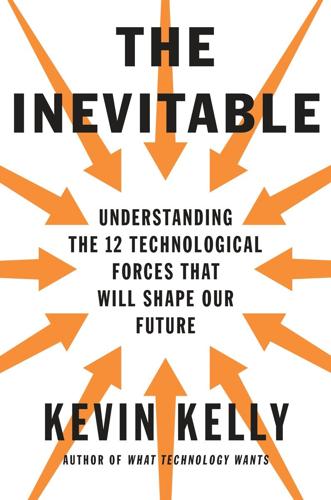
The Inevitable: Understanding the 12 Technological Forces That Will Shape Our Future
by
Kevin Kelly
Published 6 Jun 2016
So what happens when all the books in the world become a single liquid fabric of interconnected words and ideas? Four things: First, works on the margins of popularity will find a small audience larger than the near zero audience they usually have now. It becomes easier to discover that labor-of-love masterpiece on the vegan diets of southern Indian priests. Far out in the long tail of the distribution curve—that extended place of low to no sales where most of the books in the world live—digital interlinking will lift the readership of almost any title, no matter how esoteric. Second, the universal library will deepen our grasp of history, as every original document in the course of civilization is scanned and cross-linked.
…
Would you rather employ the expensive studio pros who come up with a single campaign using their best guess, or a thousand creative kids endlessly tweaking and testing their ads of your product? As always, it will be a dilemma for the crowd: Should they work on an ad for a reliable bestseller—and try to better a thousand others with the same idea—or go for the long tail, where you might have an unknown product all to yourself if you get it right? Fans of products would love to create ads for it. Naturally they believe no one else knows it as well as they do, and that the current ads (if any) are lame, so they will be confident and willing to do a better job. How realistic is it to expect big companies to let go of their advertising?

Platform Revolution: How Networked Markets Are Transforming the Economy--And How to Make Them Work for You
by
Sangeet Paul Choudary
,
Marshall W. van Alstyne
and
Geoffrey G. Parker
Published 27 Mar 2016
Less valuable, or more niche, resources can be ceded to ecosystem partners without significantly weakening the competitive position of the platform itself. This principle explains why platform managers need to keep a careful watch on new features or apps that appear on the platform. These will usually make their first appearance far down the “long tail” of adoption, with relatively few platform participants using them to co-create value. Most will stay there, but a few will show the ability to jump rank, climbing rapidly toward the head of the distribution curve. A few will even show signs of attracting their own interactive communities, which means they have the potential to become platforms themselves.
…
In addition, we noted the need for tools that help clients benchmark their capabilities against other, similar companies on the platform, as well as tools to help developers benchmark their capabilities against other developers on the platform. Such tools can help SAP users compete more effectively with rivals who are not on the platform. A final set recommendation that we developed with SAP is to look for new business service capabilities that cut across industry verticals and new features that are rapidly climbing the long tail, meaning that they are growing in popularity among business users. These represent new sources of value that platforms like SAP can absorb into its platform for the benefit of ecosystem partners who have yet to discover them. Data analytics can thus significantly augment the capabilities of both the platform company and its ecosystem partners, making the platform more successful and greatly increasing its ability to generate value for users.

Future Crimes: Everything Is Connected, Everyone Is Vulnerable and What We Can Do About It
by
Marc Goodman
Published 24 Feb 2015
Unencumbered by moral considerations, it is free to profit without limit and use the very latest business practices to do so. Crime, Inc. uses freemium pricing, gamification, crowdsourcing, crowdfunding, reputation engines, just-in-time manufacturing, online training, swarms for distributed project management in pursuit of the long tail of crime victims around the world. Global criminal syndicates such as Innovative Marketing in Kiev have earned upward of half a billion dollars (tax-free of course) in just three years. These outlaws, Moore’s outlaws, are fully networked and capable of leveraging and subverting any technology at will.
…
That is why today it’s possible for hackers to rob not just one person at a time but 100 million or more, as we saw with the Sony PlayStation and Target data breaches. Exploit tool kits like Blackhole and SpyEye commit crime “automagically” by minimizing the need for human labor, thereby dramatically reducing costs to Crime, Inc. They also allow hackers to pursue the “long tail” of opportunity, committing millions of thefts in small amounts so that victims don’t report them and law enforcement has no way to track them. While particular high-value targets (companies, nations, celebrities, high-net-worth individuals, or objects of affection or scorn) are specifically and individually targeted, the way the majority of the public is hacked is by automated scripted computer malware—one large digital fishing net that scoops up anything and everything online with a vulnerability that can be exploited.
…
(New York: Cambridge University Press, 2010). 26 Modern criminals are innovating: John Leyden, “Malware Devs Embrace Open-Source,” Register, Feb. 10, 2012 . 27 To drive sales: Ablon, Libicki, and Golay, “Markets for Cybercrime Tools and Stolen Data,” 11. 28 Organized cyber criminals: Chris Anderson, The Long Tail: Why the Future of Business Is Selling Less of More, rev. ed. (New York: Hyperion, 2008); Goodman, “What Business Can Learn from Organized Crime.” 29 RankMyHack.com awards points: Riva Richmond, “Web Site Ranks Hacks and Bestows Bragging Rights,” New York Times, Aug. 21, 2011. 30 In Montenegro: Jim Finkle, “Inside a Global Cybercrime Ring,” Reuters, March 24, 2010. 31 In early 2014: Paul Peachey, “Cybercrime Boss Offers a Ferrari for Hacker Who Dreams Up the Biggest Scam,” Independent, May 11, 2014. 32 The concept of crowdsourcing: Jeff Howe, “The Rise of Crowdsourcing,” Wired, June 2006. 33 While hundreds of examples: Marc Goodman, “The Rise of Crime-Sourcing,” Forbes, Oct. 3, 2011. 34 YouTube is replete: Ibid. 35 In Washington, D.C.: Elizabeth Fiedler, “Retailers Fight ‘Flash Robs,’ ” NPR.org, Nov. 25, 2011; Annie Vaughan, “Teenage Flash Mob Robberies on the Rise,” FoxNews.com, June 18, 2011. 36 In the United States: Chris Foresman, “Senator to Apple, Google: Why Are DUI Checkpoint Apps Still Available?
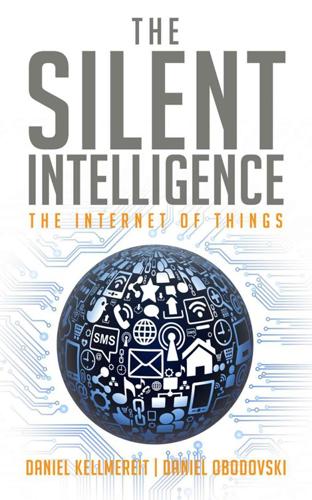
The Silent Intelligence: The Internet of Things
by
Daniel Kellmereit
and
Daniel Obodovski
Published 19 Sep 2013
If you can find a macro-trend that is going to drive behavior, it makes it a lot easier. Ride that wave, rather than try to make that wave happen yourself. What you do is simplify, figure out a way that companies can do small volumes at a lower cost, or just use similar platforms, because the M2M space is the long tail of most of the economy. But if I was going to invest in Machine-to-Machine, I would probably be investing somewhere in the analytics space. Glenn Lurie sees the largest potential in the connected home and the connected car: I do believe we’ll see breakthroughs in automotive; I do believe we’ll see breakthroughs in health care.

Relevant Search: With Examples Using Elasticsearch and Solr
by
Doug Turnbull
and
John Berryman
Published 30 Apr 2016
These searches form the long tail of search. Figure 10.4. For long-tailed search, a majority of traffic is associated with rare search items. Search’s long tail can make purely data-driven relevance feedback challenging. If your application has a long tail, you may need to rely on more indirect qualitative measures for relevance feedback. In our gardening example, user data for popular searches such as “Hoses,” “Flowers,” and “Pots” could be useful. But for most other searches (“Rosa rubiginosa”, “Rosa rubiginosa Fertilizer”), user data may be a vague rubric. The long-tail data might tell you what use cases are important to users (such as searching on scientific names), but not much else.
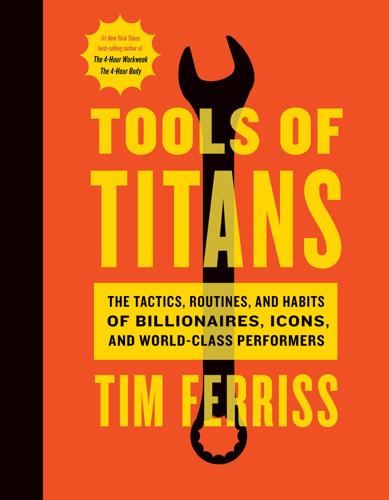
Tools of Titans: The Tactics, Routines, and Habits of Billionaires, Icons, and World-Class Performers
by
Timothy Ferriss
Published 6 Dec 2016
Chris Anderson (my successor at Wired) named this effect “the Long Tail,” for the visually graphed shape of the sales distribution curve: a low, nearly interminable line of items selling only a few copies per year that form a long “tail” for the abrupt vertical beast of a few bestsellers. But the area of the tail was as big as the head. With that insight, the aggregators had great incentive to encourage audiences to click on the obscure items. They invented recommendation engines and other algorithms to channel attention to the rare creations in the long tail. Even web search companies like Google, Bing, and Baidu found it in their interests to reward searchers with the obscure because they could sell ads in the long tail as well.
…
Even web search companies like Google, Bing, and Baidu found it in their interests to reward searchers with the obscure because they could sell ads in the long tail as well. The result was that the most obscure became less obscure. If you live in any of the 2 million small towns on Earth, you might be the only one in your town to crave death metal music, or get turned on by whispering, or want a left-handed fishing reel. Before the web, you’d never have a way to satisfy that desire. You’d be alone in your fascination. But now, satisfaction is only one click away. Whatever your interests as a creator are, your 1,000 true fans are one click from you.

The Red Queen: Sex and the Evolution of Human Nature
by
Matt Ridley
Published 14 Aug 1993
Field biologists and naturalists – bearded, besweatered and booted – gradually found themselves Good-geners.25 Is Choosing Cheap? The first round went to the Fisherians. Fisher’s intuition was fed into mathematical models and emerged intact. In the early 1980s three scientists all programmed their computers to play an imaginary game of females choosing long-tailed males and bearing both sons that had the long tails and daughters that shared the preference of their mothers. The longer the male’s tail, the greater his mating success, but the smaller his chances of surviving to mate at all. Their key discovery was that there exists a ‘line of equilibrium’ at any point on which the game can stop. On that line the handicap to a female’s sons of having a long tail is balanced exactly by the advantage those sons have in attracting a mate.26 In other words, the choosier the females, the brighter and more elaborate will be male ornaments, which is exactly what you find in nature.
…
It is a good question with a paradoxical answer, for which we owe a debt of thanks to Amotz Zahavi, a mercurial Israeli scientist. In 1975 he saw that the more a peacock’s tail or a bird of paradise’s plumes handicapped the male, the more honest was the signal they sent to the female. She could be assured by the very fact of his survival that the long-tailed male in front of her had been through a trial and passed. He had survived despite being handicapped. The more costly the handicap, the better it would be as a signal of his genetic quality; therefore peacocks’ tails would evolve faster if they were handicaps than if they were not. This is the reverse of Fisher’s prediction that peacocks’ tails should gradually cease evolving once they become severe handicaps.37 It is an appealing – and familiar – thought.

Lean Analytics: Use Data to Build a Better Startup Faster
by
Alistair Croll
and
Benjamin Yoskovitz
Published 1 Mar 2013
Proponents of a free model point out that adoption and attention are the most precious of currencies. Twitter waited until it had millions of active users before introducing advertising, and despite the outcry over promoted tweets, growth has continued. Chris Anderson, former editor-in-chief of Wired and author of The Long Tail (Hyperion), observes that King Gillette pioneered the idea of giving something away (handles) to make money on something else (razor blades).[103] But in many ways, online users have strong expectations that the Internet should be free, which means it’s hard to charge even for valuable things.
…
Li, Charlene, Engagement Funnel Changes Libin, Phil, Backupify’s Customer Lifecycle Learning, Freemium Versus Paid Liew, Roger, Data-Driven Versus Data-Informed LikeBright case study, Getting Answers at Scale LinkedIn site, Finding People to Talk To, LikeBright “Mechanical Turks” Its Way into TechStars local maximum value, Data-Driven Versus Data-Informed Localmind case study, Build It Before You Build It (or, How to Validate the Solution) Lockheed Martin, Lean from Within: Intrapreneurs Long Funnel, The Long Funnel, What Mode of E-commerce Are You? The Long Tail (Anderson), Freemium Versus Paid longitudinal studies, Cohort Analysis Lord, Joanna, The Discipline of One Metric That Matters Lovell, Nicholas, Monthly Average Revenue Per Mobile User loyalty mode (e-commerce model), What Mode of E-commerce Are You?, What Makes a Good Leading Indicator?
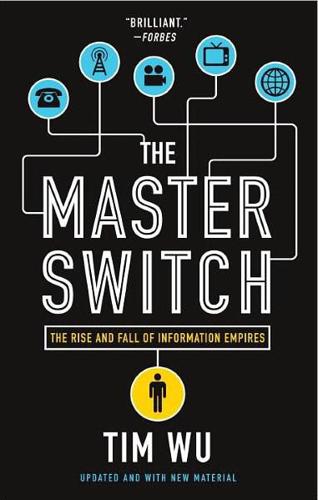
The Master Switch: The Rise and Fall of Information Empires
by
Tim Wu
Published 2 Nov 2010
Another way of saying this is that the entertainment industry is the classic, indeed definitive, example of what economists call a “hit-driven” industry.6 In such a context, a few hits will outperform the rest, sometimes by several orders of magnitude. The difference between number one and number twenty on any entertainment media chart is well captured by Wired magazine editor Chris Anderson in his book The Long Tail (itself a hit). While the book is famous for celebrating Internet business models, what Anderson also shows, using actual industry data, is that a relatively small number of hits account for the bulk of the revenue in those businesses. Hence the peculiar distribution of demand, as pictured below, which typically confounds and frustrates management consultants.
…
Economic perspectives on the film industry include John Sedgwick and Michael Pokorny, An Economic History of Film (New York: Routledge, 2005), and the interesting discussion of uncertainty and the film industry in Arthur S. De Vany, Hollywood Economics: How Extreme Uncertainty Shapes the Film Industry (London: Routledge, 2004). 7. Anderson’s theory, and his discussion of the interplay of “head” and “tail” consumer demand, may be found in Chris Anderson, The Long Tail: Why the Future of Business Is Selling Less of More (New York: Hyperion, 2006). 8. De Vany, Hollywood Economics, 4. 9. Steven Ross’s biography is gripping reading, and also provides a history of the creation of Time Warner. See Connie Bruck, Master of the Game: Steve Ross and the Creation of Time Warner (New York: Simon and Schuster, 1994). 10.

Like, Comment, Subscribe: Inside YouTube's Chaotic Rise to World Domination
by
Mark Bergen
Published 5 Sep 2022
There was the Head, consisting of top-shelf, quality stuff—footage from TV networks, studios, and musicians signed to labels. Then the Torso, amateur YouTubers like Fred and Smosh with prospects of going pro or at least having commercial appeal. The Long Tail was the bottomless heaps of clips where Google, for now, saw little economic value. (Google ranked these, as it did with everything. Videos categorized as nine and ten went to the Head, six through eight the Torso, the rest to the Long Tail.) George Strompolos, the Google Video transplant, sat at YouTube’s Torso unit. As a lanky teenager in Denver, he would set a camera on the pavement with his friends, hit record, and attempt skateboarding feats, gathering around TVs to watch the results.
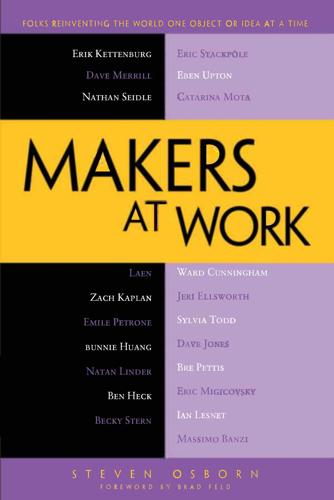
Makers at Work: Folks Reinventing the World One Object or Idea at a Time
by
Steven Osborn
Published 17 Sep 2013
You also see companies like Invisalign that have a whole process of creating a dental solution based on 3D printing. You see companies like Nervous Systems6 that have jewelry lines. You see service bureaus like Shapeways making 3D printing available and different types of processes to basically print whatever. Then there’s the long tail. A lot of people have little uses for 3D printing, but there’s this big bright future where people talk about 3D printing as a replacement for manufacturing. There are companies doing that as well, and those processes are still very expensive, but they’re making commercial parts for airplanes with 3D printers.
…
There’s also a cool project that basically takes the Erector set, and LEGOs, and Tinkertoys and makes pieces that allow you to bridge those. It allows you to use Erector set with LEGO because it has some pieces that are made to connect with both. It is just guys like me, hacking in their spare time in their garage. Linder: Those are what I call the “long tail,” and I think we’re people like that, so we’re biased. I see these kinds of things in the lab every day, and I think they’re great, but they’re still a small number of people. What I was trying to tell you before is that there are about thirty thousand 3D printers in the world right now and about ten million people who can use CAD professionally.
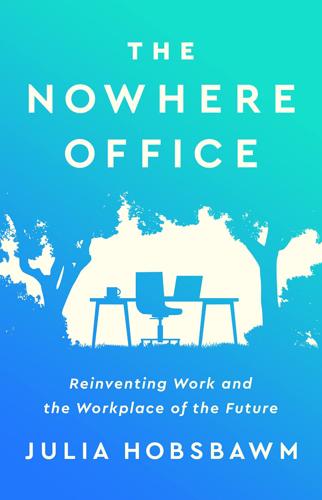
The Nowhere Office: Reinventing Work and the Workplace of the Future
by
Julia Hobsbawm
Published 11 Apr 2022
This explains why discussions around the four-day week have reached an intensity never seen before. We are not yet anywhere near to the famous fifteen-hour working week John Maynard Keynes predicted in the 1930s, but his prediction seems newly relevant. We do still want to work (and we need to financially) but in new ways.6 Emerging from the long tail of Covid something vital and exciting becomes clear: the old normal doesn’t exist any more. It is important to recognise that we have entered a liminal in-between time in the history of work. There have always been changes in work. We can track today’s move towards full-blown flexibility back to the six-hour day introduced by industrialist Kellogg in the 1930s.

Blockchain: Blueprint for a New Economy
by
Melanie Swan
Published 22 Jan 2014
Authority floating freely has already happened in other industries such as information, wherein the news and publishing industry became decentralized with blogging and the restructuring of the media industry. Entertainment is similar, with corporate media properties existing alongside YouTube channels, and individuals uploading their own content to the Web. The value chain has exploded into the long-tail format, and individuals became their own taste makers and quality arbiters. A crucial twenty-first-century skill is that individuals must examine content and think for themselves about its quality and validity. The Bitcoin revolution is the same thing happening now with currency, economics, finance, and monetary policy.
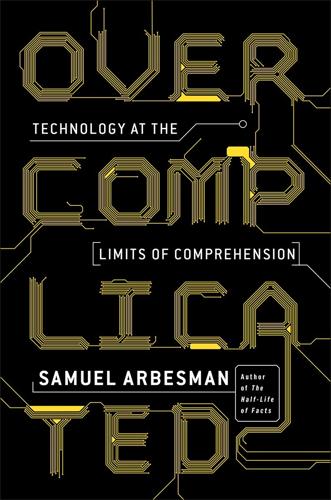
Overcomplicated: Technology at the Limits of Comprehension
by
Samuel Arbesman
Published 18 Jul 2016
These types of distributions, unlike the bell curves we are used to for such quantities as human height, have values that extend far out into the upper reaches of the scale, allowing both for exceedingly common words such as “the” and for much rarer words like “flother.” Often about half of the words in a corpus turn out to have only a single occurrence, making them hapax legomena. They occupy the “long” part of the long tail. While it is rare that you will encounter a specific hapax word, it is likely you will encounter them as a category. To translate this into the world of movies, it’s rare to find someone who has seen The Adventures of Buckaroo Banzai Across the 8th Dimension, but it’s not rare to find someone who has seen at least one weird cult film.
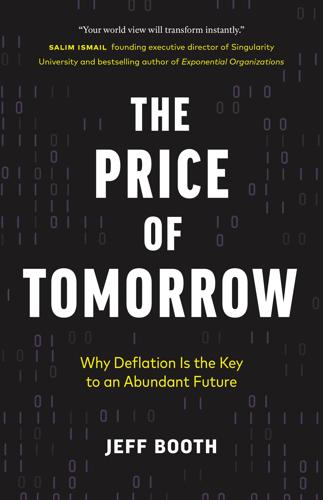
The Price of Tomorrow: Why Deflation Is the Key to an Abundant Future
by
Jeff Booth
Published 14 Jan 2020
Even if the pattern is well understood, the incumbent can be disadvantaged: technology often changes where business value is derived from and, in doing so, can reduce the worth of the incumbent’s assets at the same time as the market is shifting. It is those very assets, once highly valued and sometimes highly leveraged, that themselves become the proverbial noose around the neck. Chris Anderson, former editor of The Economist and author of The Long Tail, hints at some of the changes. In his book, he explains how when distribution costs fall, large incumbents that rely on their power to control distribution are at risk. For example, prior to Google, distribution of information required a different, less scalable infrastructure, and power came from controlling distribution.

The Content Trap: A Strategist's Guide to Digital Change
by
Bharat Anand
Published 17 Oct 2016
Boston: Harvard Business Publishing, rev. February 7, 2011. Anand, Bharat, and Ron Shachar. “Advertising the Matchmaker.” RAND Journal of Economics 42, no. 2 (Summer 2011): 205–45. ———. “Brands as Beacons: A New Source of Loyalty to Multiproduct Firms.” Journal of Marketing Research 41, no. 2 (May 2004): 135–50. Anderson, Chris. The Long Tail: Why the Future of Business Is Selling Less of More. New York: Hyperion Books, 2008. Anton, James, and Dennis Yao. “Expropriation and Inventions: Appropriable Rents in the Absence of Property Rights.” American Economic Review 84, no. 1 (March 1994): 190–209. Armstrong, Mark. “Competition in Two-Sided Markets.”
…
are uploaded to YouTube Anthony Wing Kosner, “YouTube Turns Seven Today, Now Uploads 72 Hours of Video Per Minute,” Forbes , May 21, 2012; Susan Gunelius, “The Data Explosion in 2014 Minute by Minute,” ACI Information Group, Featured Post, July 12, 2014. Much of this content is characterized as “long tail” content: see Chris Anderson, The Long Tail: Why the Future of Business Is Selling Less of More (New York: Hyperion Books, 2008). five exabytes…of data San Diego Supercomputer Center, accessed July 9, 2016, http://www.sdsc.edu/news_and_events/press_kit.html . Figure 1 Constructed by author. Thanks to Dee Jeong for assistance with artwork.

Model Thinker: What You Need to Know to Make Data Work for You
by
Scott E. Page
Published 27 Nov 2018
Our model reveals that the better choice depends on how many times she can afford to try new careers. If she must stick with her first career choice, becoming a doctor offers the higher expected salary. If she has sufficient resources to continue trying to be an entrepreneur, eventually she will get a high-paying draw from the long tail. The figure below shows the average largest salary across twenty trials assuming one, two, five, and ten career searches within each profession. If she has the opportunity to try her hand at quantum computing start-ups ten times, her salary will be nearly double what she would earn had she chosen medical school and experimented with ten careers.
…
Alvaredo, Facundo, Anthony B. Atkinson, Thomas Piketty, and Emmanuel Saez. 2013. “The World Top Incomes Database.” https://www.inet.ox.ac.uk/projects/view/149. Anderson, Chris. 2008a. “The End of Theory: The Data Deluge Makes the Scientific Method Obsolete.” Wired 16, no. 7. Anderson, Chris. 2008b. The Long Tail: Why the Future of Business Is Selling Less of More. New York: Hachette. Anderson, Phillip. 1972. “More Is Different.” Science 177, no. 4047: 393–396. Arrow, Kenneth. 1963. Social Choice and Individual Values. New Haven, CT: Yale University Press. Arthur, W. B. 1994. “Inductive Reasoning and Bounded Rationality (The El Farol Problem).”

The Stack: On Software and Sovereignty
by
Benjamin H. Bratton
Published 19 Feb 2016
Instead of providing every possible software service, product, or function that could be anticipated, it instead administers a centralized market for mini-applications, connecting developers and Users indirectly and ensuring profit for the former and some degree of code quality for the latter. An outgrowth of a hardware-led strategy, Apple's App ecology means letting developers assume the risk and reward for the long tail of software experiences. Even so, these must hew to the platform's core interaction affect or face banishment. Whichever way the Cloud (particularly the mobile Cloud) might evolve, Apple is positioned as a preferred physical “last millimeter” of delivery (the feel of “look and feel”), the exact physical point where User and Cloud touch.
…
The Amazon model demonstrates (as does Google's) how the microtargeting of content to individual Users based on previous search-and-click history allows unique terms of engagement with diverse subpublics without needing to put one User on display to the other. This technology of procedural individuation-without-identity is in contrast with Facebook's, which defines the individuation of the User largely through the visual display of identity. For Amazon, the long tail is a model of objective tendencies, not subjectively performed gestures. The platform does not care about your name or who you really are deep down, but only in the likelihood that the next presentation of object X, Y, or Z will motivate your One-Clicking and the subsequent activation of supply chain cascades that ensue.
…
It took a year, but this is what Griffith and his partners did, quantifying every big and small systemic interaction, from food and diet to transatlantic flights to taxes paid toward the paving of roads. He concluded that he uses around 17,027 watts per year, which not extraordinary for a US citizen. The world average, however, is 2,250 watts per person, with several billion people filling out the long tail of energy access. Even so, Griffith's confessional might nominate his practice of self as the ideal universal User (Homo persona?) far more than comparatively blunt profiles available for the Reids or the Hagens in Shanghai. Not only are his interactions with The Stack quantified with exacting candor and offered up for critique and comparison, but his intelligent efforts also provide those systems a valuable measure of their interactions with him.
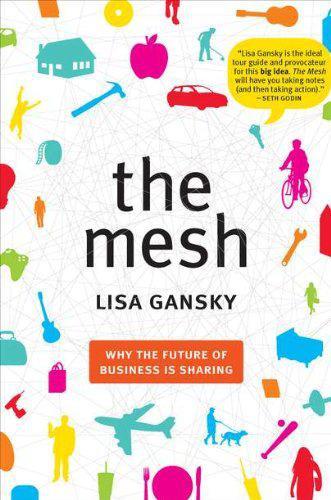
The Mesh: Why the Future of Business Is Sharing
by
Lisa Gansky
Published 14 Oct 2010
The Timeless Way of Building. New York: Oxford University Press, 1979. Alter, Lloyd. “9 Hip Housing Alternatives to the Mortgaged Single Family Home.” Planet Green, November 3, 2009, http://planetgreen.discovery.com/home-garden/hip-housing-alternatives. html (accessed March 17, 2010). Anderson, Chris. The Long Tail: Why the Future of Business Is Selling Less of More. New York: Hyperion, 2006. Belson, Ken. “Car-Sharing Services Cut Cost of Ownership.” New York Times, October 20, 2009, http://www.nytimes.com/2009/10/22/automobiles/autospecial2/22ZIP.html (accessed March 17, 2010). Bernoff, Josh, and Charlene Li.
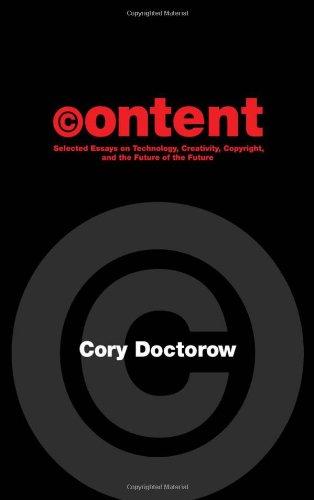
Content: Selected Essays on Technology, Creativity, Copyright, and the Future of the Future
by
Cory Doctorow
Published 15 Sep 2008
Hunt and kill more parasites, no matter what the cost. We are proud parasites, we Emerging Techers. We're engaged in perl whirling, pythoneering, lightweight javarey — we hack our cars and we hack our PCs. We're the rich humus carpeting the jungle floor and the tiny frogs living in the bromeliads. The long tail — Chris Anderson's name for the 95 of media that isn't top sellers, but which, in aggregate, accounts for more than half the money on the table for media vendors — is the tail of bottom-feeders and improbable denizens of the ocean's thermal vents. We're unexpected guests at the dinner table and we have the nerve to demand a full helping.
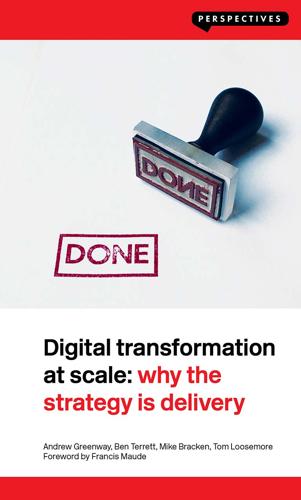
Digital Transformation at Scale: Why the Strategy Is Delivery
by
Andrew Greenway,Ben Terrett,Mike Bracken,Tom Loosemore
Published 18 Jun 2018
No matter how many services an institution is running, as a general rule the vast majority of transactions take place in a relatively small number of them – the top 10% in terms of volume typically account for 90% of all the transactions taking place across the whole of government. The rest make up the ‘long tail’. Quite a lot of these will be very small indeed. The UK’s environment department receives around 10 applications a year for burials at sea, for example. For the digital team, prioritising how best to achieve the strategic ambitions for digitisation suddenly becomes more straightforward. Fix the top 10% of services, and you can deliver the vast majority of benefit to users.

The Lights in the Tunnel
by
Martin Ford
Published 28 May 2011
Web: http://www.foreignaffairs.org/19971101faessay3815/alan-s-blinder/is-government-too-political.html 49 Jeremy Rifkin, The End of Work: The Decline of the Global Labor Force and the Dawn of the Post-Market Era, New York, Penguin Group, 1995. 50 Chapter 4: Transition Cornelia Dean, “Scientific Savvy? In U.S. Not Much”, New York Times, August 30, 2005, web: http://www.nytimes.com/2005/08/30/science/30profile.html 51 See Chris Anderson’s The Long Tail: Why the Future of Business is Selling Less of More, a book based on an article in Wired Magazine, October 2004. Web: http://www.wired.com/wired/archive/12.10/tail.html 52 John Maynard Keynes, “Economic Possibilities for our Grandchildren,” (written in 1930), Essays in Persuasion, New York, W.W.

Interactive Data Visualization for the Web
by
Scott Murray
Published 15 Mar 2013
Colophon The animal on the cover of Interactive Data Visualization for the Web is a long-tail tit or bushtit (Aegithalos caudatus). The bushtit is a common species of bird found throughout Europe and Asia. The caudatus group of the species has a pure white head. These birds are known for their tiny size, measuring at around only 13-15 cm in length, including their tail. The long-tail tit is recognized by its stubby bill, contrasted to its long, narrow tail. Females and males are indistinguishable, both undergoing a full moult before their first winter. Their adult plumage is primarily black and white with accents of grey and pink. The bushtit inhabits deciduous and mixed woodland, feeding on insects with a preference for eggs and larvae of moths and butterflies, and favoring oak, ash, and sycamore trees.
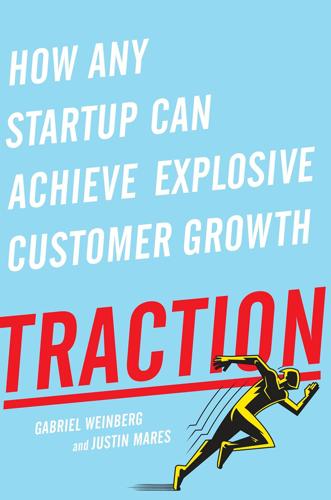
Traction: How Any Startup Can Achieve Explosive Customer Growth
by
Gabriel Weinberg
and
Justin Mares
Published 5 Oct 2015
These are longer terms that are highly specific—things like “gluten free for arthritis” or “private search engine.” Individually, searches for these terms don’t amount to much: together, though, they make up 70 percent of all searches. Because it is difficult to rank high for competitive (fat-head) terms, a popular SEO strategy for early-stage startups is to focus on the long tail. With this strategy, you bundle long-tail keywords together to reach a meaningful number of customers. As with the fat-head strategy, the Google Keyword Planner is the first way to evaluate whether a long-tail strategy may be effective for you. But this time you are seeking information on more specific, long-tail terms.

Blockchain Chicken Farm: And Other Stories of Tech in China's Countryside
by
Xiaowei Wang
Published 12 Oct 2020
Dinglou was China’s first Taobao village, but thousands more like it exist, making everything from wooden toys to clothing, candy, and computer fans. These items end up not only in China but abroad. While there are casualties of the trade war between the United States and China, with titans of globalization such as Walmart under threat, these smaller e-commerce manufacturing businesses in China are thriving in the long tail of shopping. Sellers on Amazon, independent drop-shippers, and platforms like Wish.com use the power of AliExpress to tap into these small manufacturers throughout China, in places like Dinglou. Curated Instagram campaigns, featuring prominent influencers, are launched by a vast landscape of small, new “lifestyle brands”—companies based outside China that source directly from AliExpress.
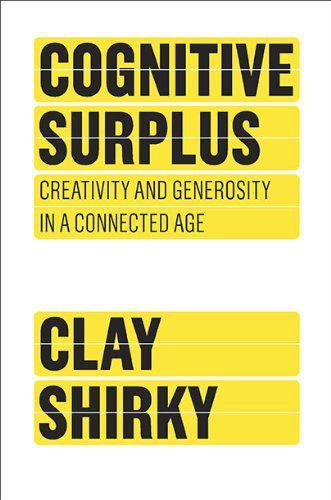
Cognitive Surplus: Creativity and Generosity in a Connected Age
by
Clay Shirky
Published 9 Jun 2010
The comment thread is also extraordinary (accessed January 8, 2010). 50 Whether this revolution in the reading habits of the American public: Quoted in Kenneth Davis and Joann Giusto-Davis, Two-Bit Culture: The Paperbacking of America (New York and Boston: Houghton Mifflin, 1984): 68. 57 The writer Nicholas Carr has dubbed this pattern digital sharecropping: Nicholas Carr writes at his blog, Rough Type. “Sharecropping the Long Tail” is from December 19, 2006, http://www.roughtype.com/archives/2006/12/sharecropping_t.php (accessed January 8, 2010). 59 sued AOL on behalf of the ten thousand or so other volunteers: Lisa Napoli covered the AOL lawsuit for The New York Times: “Former Volunteers Sue AOL, Seeking Back Pay for Work,” The New York Times, March 26, 1999, http://www.nytimes.com/1999/05/26/nyregion/former-volunteers-sue-aolseeking-back-pay-for-work.html?
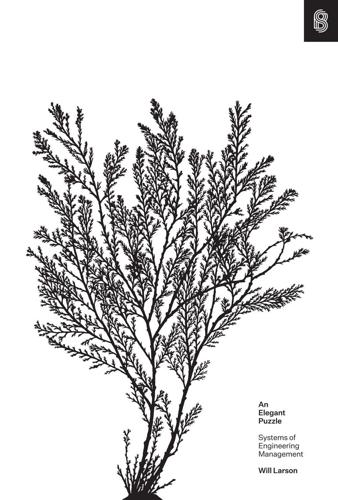
An Elegant Puzzle: Systems of Engineering Management
by
Will Larson
Published 19 May 2019
It’s important to give wider management context around migrations because the managers are the people who need to prioritize the migrations: if a team isn’t working on a migration, it’s typically because their leadership has not prioritized it. At this point, you’re pretty close to complete, but you have the long tail of weird or unstaffed work. Your tool now is: finish it yourself. It’s not necessarily fun, but getting to 100 percent is going to require the team leading the migration to dig into the nooks and crannies themselves. My final tip for finishing migrations centers around recognition. It’s important to celebrate migrations while they’re ongoing, but the majority of the celebration and recognition should be reserved for their successful completion.
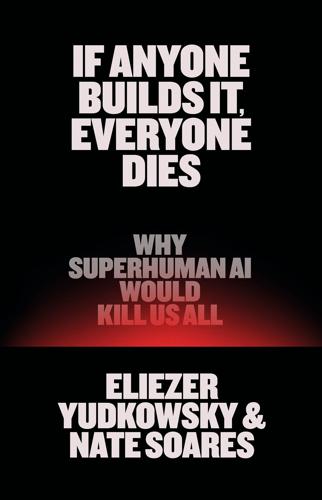
If Anyone Builds It, Everyone Dies: Why Superhuman AI Would Kill Us All
by
Eliezer Yudkowsky
and
Nate Soares
Published 15 Sep 2025
CHAPTER 4: YOU DON’T GET WHAT YOU TRAIN FOR 1. attract more females: Marion Petrie et al., “Peahens Prefer Peacocks with Elaborate Trains,” Animal Behavior 41, no. 2 (February 1991): 323–31; Malte Andersson, “Female Choice Selects for Extreme Tail Length in a Widowbird,” Nature 299 (October 28, 1982): 818–20, nature.com. While peahens prefer peacocks with elaborate trains, it’s less clear that elaborate tails are detrimental to survival. They may have uses such as intimidation (as evidenced by how peacocks spread their tails when threatened). A clearer example of costly sexual ornamentation is the long-tailed widowbird, which sheds its long tail feathers in the non-breeding season. We stick with peacocks because they are more familiar. 2. Isaac Asimov: Isaac Asimov, I, Robot (Doubleday, 1950). 3. Arthur C. Clarke: Stanley Kubrick and Arthur C. Clarke, 2001: A Space Odyssey (Metro-Goldwyn-Mayer, 1968). 4. seldom visit: Kim Swift et al., Portal, Valve Corporation, 2007.

Site Reliability Engineering: How Google Runs Production Systems
by
Betsy Beyer
,
Chris Jones
,
Jennifer Petoff
and
Niall Richard Murphy
Published 15 Apr 2016
User studies have shown that people typically prefer a slightly slower system to one with high variance in response time, so some SRE teams focus only on high percentile values, on the grounds that if the 99.9th percentile behavior is good, then the typical experience is certainly going to be. A Note on Statistical Fallacies We generally prefer to work with percentiles rather than the mean (arithmetic average) of a set of values. Doing so makes it possible to consider the long tail of data points, which often have significantly different (and more interesting) characteristics than the average. Because of the artificial nature of computing systems, data points are often skewed—for instance, no request can have a response in less than 0 ms, and a timeout at 1,000 ms means that there can be no successful responses with values greater than the timeout.
…
By avoiding over-customizing for one or two big users, we achieved broader adoption across the organization and lowered the barrier to entry for new services. We’ve also consciously endeavored to avoid the pitfall of defining success as 100% adoption across the organization. In many cases, there are diminishing returns on closing the last mile to enable a feature set that is sufficient for every service in the long tail at Google. Team Dynamics In selecting engineers to work on an SRE software development product, we’ve found great benefit from creating a seed team that combines generalists who are able to get up to speed quickly on a new topic with engineers possessing a breadth of knowledge and experience.

This Is How They Tell Me the World Ends: The Cyberweapons Arms Race
by
Nicole Perlroth
Published 9 Feb 2021
And increasingly, the most destructive threat to our civil discourse, to truth and fact, was coming from inside the White House itself. By 2020, the United States was in the most precarious position it had ever been in the digital realm. Three years after the NSA lost control of its tools, the long tail of EternalBlue was everywhere. The underlying Microsoft bugs were no longer zero-days—a Microsoft patch had been available for two years—and yet EternalBlue had become a permanent feature in cyberattacks on American towns, cities, and universities, where local IT administrators oversee tangled, cross-woven networks made up of older, expired software that stopped getting patched long ago.
…
Knake, Cyber War: The Next Threat to National Security and What to Do about It (HarperCollins, 2010). For a chronicle of Russian cyberattacks on America’s grid, and vice versa, see David E. Sanger and Nicole Perlroth, “U.S. Escalates Online Attacks on Russia’s Power Grid,” New York Times, June 15, 2019. CHAPTER 23: THE BACKYARD Scott Shane and I reported on the long tail of EternalBlue, which included attacks in San Antonio, Texas; Allentown, Pennsylvania; and finally, in the NSA’s own backyard, in Baltimore. See “In Baltimore and Beyond, A Stolen NSA Tool Wreaks Havoc,” New York Times, May 25, 2019. See also Yami Virgin, “Federal Agents Investigate Attempted Hacking at Bexar County Jail,” Fox San Antonio, January 31, 2019.
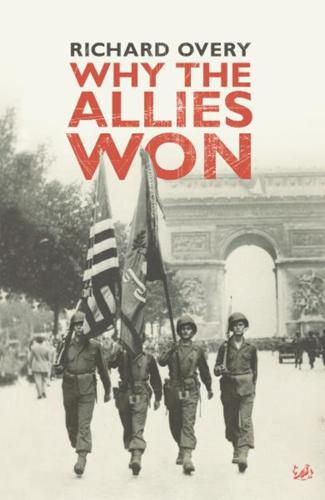
Why the Allies Won
by
Richard Overy
Published 29 Feb 2012
Most of the civilian population was now evacuated to the east bank of the river by a fleet of ferry boats that plied back and forth, carrying troops, guns and ammunition one way, the wounded and refugees the other. The 62nd army could continue only because of the frantic efforts of the military supply organisation and engineers in keeping open the Volga crossings in the face of heavy and repeated air and artillery attack. The long tail of the army – its artillery, air support and its rear services – was all on the far side of the Volga. From this less exposed position Soviet gunners and pilots kept up a ceaseless barrage against the approaching German forces.15 The fighting in Stalingrad was very different from the mobile cut and thrust that German armies had practised across the steppe.
…
An army of officials and officers, more than 350,000 men and women, laboured behind the scenes on routine issues of supply and recruitment. The organisation of training and troop deployment across 3,000 miles of ocean constituted a major feat of logistics. Dull though it seems on paper, the work of the long tail of non-combatants behind the Allied fist was vital to the success of the operation. Between January and June 1944 almost 9 million tons of supplies were shipped across the Atlantic, and some 800,000 troops, while almost four and a half million soldiers waited at bases in the United States.28 But the critical issues remained those of operations rather than organisation.

Financial Market Meltdown: Everything You Need to Know to Understand and Survive the Global Credit Crisis
by
Kevin Mellyn
Published 30 Sep 2009
It does not consider what are called ‘‘long-tail events,’’ otherwise know as ‘‘black swans.’’ If you shoot golf in the low eighties for ten years, the statistical probability is that your next golf score will be in the same range. The chance of your making several holes in one or being hit by lightning exists, but these are ‘‘extreme events’’ on the long tail of the mathematical bell curve of probabilities. These by definition cluster around the average in the middle of the curve. The problem is that the extreme events at the very edges of probability can be hugely destructive. Events like Pearl Harbor and the attacks of 9/11 were considered extremely remote by experts until they actually happened.

Designing Search: UX Strategies for Ecommerce Success
by
Greg Nudelman
and
Pabini Gabriel-Petit
Published 8 May 2011
Test those queries out yourself: Do they retrieve relevant results? Most frequent queries with zero results—Assuming no results means failure, which kinds of queries go wrong the most? Is the content there, but mistitled or rife with jargon? Or do you need to create new content? In all cases, start with the most frequent queries—the short head to the long tail you may have heard of—because frequent queries really occur frequently, much more often than you might expect. If you sorted all your site’s queries by frequency and stacked them from most frequent to least frequent, you’d get a distribution that looks like that shown in Figure 1-12, which depicts the Zipf Distribution, in which a few frequent queries—the ones in the short head—account for a huge volume of all search activity.
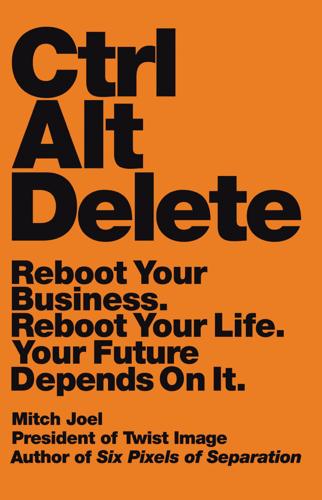
Ctrl Alt Delete: Reboot Your Business. Reboot Your Life. Your Future Depends on It.
by
Mitch Joel
Published 20 May 2013
What better way is there to know whether there is a market for your business idea than by putting that idea “out there” and enabling those who take an interest in it to put their money where their mouths are? These backers are paying customers—they just happen to be paying for something long before it is ever produced. They are the spirit and embodiment of a direct relationship. In 2004, Chris Anderson (the former editor in chief at Wired magazine) wrote the bestselling business book The Long Tail. The book describes a new economy that has emerged online because we are no longer limited by the physical retail store space and how much inventory can be sold per square foot. Because of online commerce, it now makes sense for companies to sell products that would have been purchased by only a handful of people, because they can make serious money selling these more obscure items online instead of only selling a limited number of more popular items.

Smart Money: How High-Stakes Financial Innovation Is Reshaping Our WorldÑFor the Better
by
Andrew Palmer
Published 13 Apr 2015
The next and final chapter looks at how finance can do better at managing very big risks, including the ones it generates itself. 9. Tail Risk: Pricing the Probability of Mayhem As job titles go, Gordon Woo’s takes some beating. Woo is a catastrophist, and his job is to think about tail risks—the sorts of big risks that occur outside the normal distribution of events and lurk in the long tails of probability. To be more precise, his job is to think about disasters. Earthquakes, hurricanes, terrorist attacks, and pandemics are his raw materials; models that calculate the probability of catastrophes and the damage they might cause are the products he helps to turn out. Woo is a physicist by background and an academic by temperament and appearance.

438 Days: An Extraordinary True Story of Survival at Sea
by
Jonathan Franklin
Published 17 Nov 2015
Unlike some nations where only the fins are sold, in Mexico shark steak is a traditional offering on restaurant menus. Despite attempts at conservation and evidence of a population collapse, thousands of tons of sharks are hauled every year from the dangerous waters of the Gulf of Tehuantepec. In recompense for the risks, fishermen are paid minimal wages. They live on the long tail of a global economy that prices a single half-pound serving of tuna at $25 in the Costa Azul resort restaurants but for which they earn only 40 cents. But when the fish are running and a sixty-hour shift can earn a man $250 cash, straight into his pocket, there are no limits on the fervor and party madness that erupts on Costa Azul’s left bank.

Hugh's Three Good Things
by
Hugh Fearnley-Whittingstall
Published 13 Apr 2015
To extract the meat from your cooked lobster, first twist the big front claws away from the body. Using a small hammer or the back of a heavy knife, crack the claws in several places so you can pull the shell away from the meat. Be careful to remove all fragments of shell. Roughly chop the claw meat and set aside. Now grasp the long tail section of the lobster and twist: it will come away from the head. Using kitchen scissors, cut along the thinner shell down the underside of the tail. Pull the shell apart, releasing the tail meat. Turn the tail meat over, so the back is uppermost, and make a cut along the length of the tail to reveal the dark intestinal vein.

First Light: Switching on Stars at the Dawn of Time
by
Emma Chapman
Published 23 Feb 2021
We can see the evidence for this hierarchical galaxy formation, or galactic cannibalism, by observing the galaxy mergers taking place right in front of our noses. There are two examples of ongoing galactic mergers in the centre-fold. The Mice Galaxies and Antennae Galaxies are each examples of two spiral galaxies colliding and ripping apart because of the pull of gravity, producing the long tail of the Mice Galaxies and the antennae of the Antennae Galaxies. When galaxies collide, the stars are all jumbled up inside. Sometimes the new merged galaxy will be bright with new star formation and at other times a loss of gas will cause a quiet period. When two spirals merge, they tend to be disrupted so much that the spiral arm configuration is lost and the result is an elliptical galaxy.

Dual Transformation: How to Reposition Today's Business While Creating the Future
by
Scott D. Anthony
and
Mark W. Johnson
Published 27 Mar 2017
As a bizarre mix of endless cat videos and pirated professional content began to populate the site, search titan Google took notice. In May 2006—less than twelve months after the company was founded—Google snatched it up for almost $2 billion. The industry wondered whether so-called user-generated content on topics aimed at the “long tail” of users interested in arcane topics could undermine a decades-long focus on blockbuster hits. In the third quarter of 2006, another important milestone occurred. Netflix, less than ten years old, announced that its quarterly revenues had crossed $300 million, meaning it was well on pace to become a billion-dollar business.

Prediction Machines: The Simple Economics of Artificial Intelligence
by
Ajay Agrawal
,
Joshua Gans
and
Avi Goldfarb
Published 16 Apr 2018
Any present effect was so small as to be of no real consequence, certainly not the basis of a competitive advantage. This suggests that historical data may be less useful than many suppose, perhaps because the world changes too quickly. However, we offer an important caveat. As many as 20 percent of Google searches each day are said to be unique.9 Accordingly, Google may have an advantage on the “long tail” of rarely searched for terms. Scale advantages to data are not dramatic for the common cases, but in highly competitive markets like search, even a small advantage in infrequent searches may translate into a larger market share. We still don’t know if the scale advantage of AI is big enough to give Google an advantage over other large players like Microsoft’s Bing or if Google is better for reasons that have nothing to do with data and scale.

The Return of Marco Polo's World: War, Strategy, and American Interests in the Twenty-First Century
by
Robert D. Kaplan
Published 6 Mar 2018
Nancy Berglass, director of the Iraq-Afghanistan Deployment Impact Fund, says “hundreds of thousands of active duty and former active duty troops are dealing with significant mental health [and drug dependence] problems that have not been adequately addressed.” In each instance of psychological disturbance, there is a story, perhaps as bad as Colonel Brown’s, behind it. The long tail of suffering that extends from the war front to the home front, and from dead and wounded soldiers and Marines, sailors and airmen, to their wives and children, and to their children’s children, is statistically numbing and heartrending. Of the 2.2 million American troops deployed to Iraq and Afghanistan since 2001, several hundred thousand have sustained physical and psychological wounds.

Hull Zero Three
by
Greg Bear
Published 22 Nov 2010
Once she embraced an irregular ball of rocky ice over a hundred kilometers in diameter—the shield and yolk of our interstellar journey. She still clutches a wasted chunk of the Oort moonlet—just a few billion tons. We decelerated with fuel to spare and now orbit the prime candidate. How long? The years are spread out cold and quiet behind us, the long tail of our journey. We do not remember those years intimately, there were so many. How many? It doesn’t matter. I will look at the log when there is time, after the teams are chosen to make our first journey to the planet’s surface. Our new names are called, and we arrange ourselves in the loading bay, ceremonial outfits like so many brilliant daubs of paint, the better to see and be seen.

The System: Who Owns the Internet, and How It Owns Us
by
James Ball
Published 19 Aug 2020
FURTHER READING The following serve as a selected bibliography of the books used in the research of this book, as well as a few not cited herein but which offer good background or further reading on some of the topics covered. This isn’t comprehensive – it doesn’t include books or papers cited in passing, but these are included in the endnotes. Anderson, C., The Long Tail: Why the Future of Business Is Selling Less of More, Hachette Books, 2008. Bamford, J., The Shadow Factory: The Ultra-Secret NSA from 9/11 to the Eavesdropping on America, Anchor, 2009. Bartlett, J., People Vs Tech, Ebury Press, 2018. Beckett, C., and Ball, J., Wikileaks: News in the Networked Era, Polity, 2012.

The Broken Ladder
by
Keith Payne
Published 8 May 2017
Even though income distributions are always skewed, today’s distribution in the United States is many times more unequal than in the past, and much more so than that of other developed economies. Figure 2 shows how incomes have changed over the past fifty years for each income quintile, as well as for the richest 5 percent. (The dollar amounts are adjusted for inflation.) You can see the long tail from Figure 1 in action: The rich are getting richer, while the poor are . . . well, the poor are doing something interesting. The poorest fifth of Americans have been standing pretty much in place for the last fifty years. You probably did not expect this result for the poor (or the middle class, for that matter, who have barely budged, either), as the well-known aphorism clearly states that the rich get richer while the poor get poorer.

Endless Forms Most Beautiful: The New Science of Evo Devo
by
Sean B. Carroll
Published 10 Apr 2005
This means that in the course of the evolution of different kinds of insects, signature sequences for Ultrabithorax have appeared in the switches of some genes. The coalitions of genes are different in different insects. The genes that must be shut off to prevent vein formation in the fly hindwing are different from the genes that need to be turned on to make the long tail of a swallowtail butterfly. The geography of hindwings evolves by changing the switches that are governed by Ultrabithorax (figure 7.8). F IG . 7.8 Evolving hindwing geography . Different forms of insect hindwings have evolved by changes in the sets of genes controlled by the hindwing-specific Ubx Hox protein.
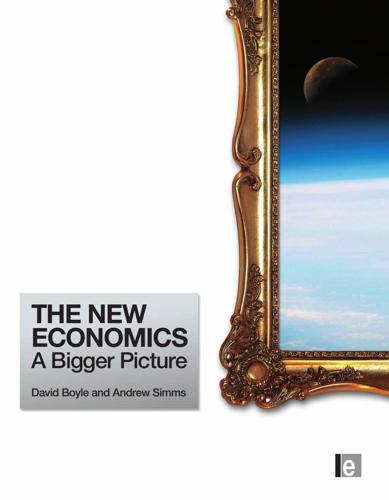
The New Economics: A Bigger Picture
by
David Boyle
and
Andrew Simms
Published 14 Jun 2009
It is now a sophisticated campaign that has 65,000 members in 42 countries, an office in Brussels for lobbying the Eurocrats and another one in New York for organizing trade fairs. From their headquarters in Bra in Piedmont, at the foot of the Alps – a region known for its truffles and red wine – Petrini and the Slow Food movement have since taken up the cause of the long-tailed sheep of Laticauda, Siennese pigs, Vesuvian apricots and many other half-forgotten foods. They have a publishing house, a programme to protect endangered food, and about 500 local organizations known as convivia, where they meet to eat. He describes his campaign as a defence of what is ordinary and ubiquitous, a repeated new economics theme: 120 THE NEW ECONOMICS We want to extend the kind of attention that environmentalism has dedicated to the panda and the tiger to domesticated plants and animals.

Matchmakers: The New Economics of Multisided Platforms
by
David S. Evans
and
Richard Schmalensee
Published 23 May 2016
He started Brightcove, having seen the promise of delivering TV over broadband Internet connections as an alternative to cable TV. Brightcove wanted to provide a one-stop shop for Internet TV content providers, advertisers, and consumers. It planned to provide distribution services to content providers, including large ones like the New York Times as well as smaller ones that could make up the long tail; advertising, subscription, and other monetization methods that these content providers could use through Brightcove rather than having to create themselves; and delivery services to get content to consumers’ personal computers, television sets, and mobile devices. Brightcove adopted a two-step strategy like OpenTable’s.

The End of Big: How the Internet Makes David the New Goliath
by
Nicco Mele
Published 14 Apr 2013
O’Reilly solved that problem, laying out a complicated but compelling vision of how the Web was evolving and what constituted Web 2.0 thinking. A core part of O’Reilly’s conception of Web 2.0 was the idea of Web as platform. We’ve talked in earlier chapters about the role of Even Bigger technical platforms to enable the long tail of the small, bringing about the End of Big. Well, O’Reilly wants to apply this notion of Web as platform to Big Government, too. The idea of a platform goes back to the early days of computer programming. The truth is, computers understand just one thing: electricity or no electricity. Everything you do on your laptop, on your smartphone, on your car’s navigation system gets translated down to electricity or no electricity, represented by zeros and ones.

Exponential Organizations: Why New Organizations Are Ten Times Better, Faster, and Cheaper Than Yours (And What to Do About It)
by
Salim Ismail
and
Yuri van Geest
Published 17 Oct 2014
* ( ) Our Mission focuses on delivering the best products and services ( ) Our Mission focuses on our core values as an organization, extending beyond delivering products and services ( ) Our Mission is broader than serving end customers; it aims to bring positive change to our entire ecosystem of vendors, partners, suppliers and employees ( ) We have a transformational purpose that goes beyond a Mission Statement. We aspire to deliver significance to the whole world APPENDIX B Sources and Inspirations All the books below were extensively reviewed, analyzed and cross-referenced with the ExO model. Anderson, C. (2006). The Long Tail: Why the Future of Business Is Selling Less of More. Hyperion. Anderson, C. (2009). Free: The Future of a Radical Price. Hyperion. Anderson, C. (2012). Makers: The New Industrial Revolution. Crown Business. Blank, S. (2005). The Four Steps to the Epiphany. Cafepress.com. Blank, S., & Dorf, B. (2012).

Busy
by
Tony Crabbe
Published 7 Jul 2015
RescueTime, for example, is an app that tracks your computer usage. The program has turned up data that the average person uses sixteen different computer programs, visits forty websites and is interrupted every 5.2 minutes by a message every day. The founder, Tony Wright, was depressed to find he spent nearly a third of his day on “the long tail of information porn” (his words not mine!): visits to sites not related to his chief work. There are some brilliant apps out there for monitoring your behavior. Or, you could simply time yourself. If you’re about to start a big piece of work, start the stopwatch! See how long you last before being distracted.
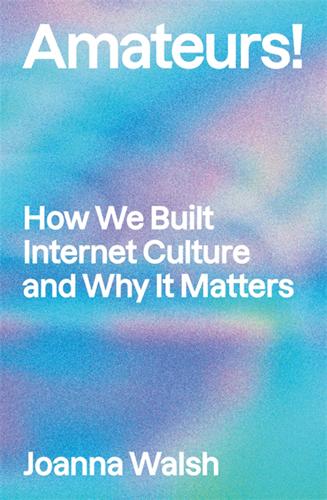
Amateurs!: How We Built Internet Culture and Why It Matters
by
Joanna Walsh
Published 22 Sep 2025
Hence everything is production.’8 The central box contains strategic positioning points, user positioning, and core competencies including services not packaged software, architecture of participation, cost-effective scalability, remixable data source and data transformations, software above the level of a single device, and harnessing collective intelligence. Surrounding terms on the top include Flickr tagging, Google services, PageRank, blogs, Wikipedia radical trust and BitTorrent radical decentralization. Surrounding term at the bottom include an attitude, not a technology; the long tail; data as the intel inside; the perpetual beta; software that gets better the more people use it; play; rich user experience; small pieces loosely joined, web as components; trust your users; hackability; the right to remix some rights reserves; emergent: user behaviour not predetermined; and granular addressability of content.

The Wealth of Networks: How Social Production Transforms Markets and Freedom
by
Yochai Benkler
Published 14 May 2006
At large numbers of nodes, the exponent dominates the uniform component, accounting for the pure power law distribution when looking at the Web as a whole, or even at broadly defined topics. In smaller clusters of sites, however, the uniform component begins to exert a stronger pull on the distribution. The exponent keeps the long tail intact, but the uniform component accounts for a much more moderate body. Many sites will have dozens, or even hundreds of links. The Pennock paper looked at sites whose number was reduced by looking only at sites of certain organizations--universities or public companies. Chakrabarti and others later confirmed this finding for topical clusters as well.
…
The former leaves all but the very [pg 252] few languishing in obscurity, with no one to look at them. The latter, as explained in more detail below, offers a mechanism for topically related and interest-based clusters to form a peer-reviewed system of filtering, accreditation, and salience generation. It gives the long tail on the low end of the distribution heft (and quite a bit of wag). 454 The fourth and last piece of mapping the network as a platform for the public sphere is called the "small-worlds effect." Based on Stanley Milgram's sociological experiment and on mathematical models later proposed by Duncan Watts and Steven Strogatz, both theoretical and empirical work has shown that the number of links that must be traversed from any point in the network to any other point is relatively small. 88 Fairly shallow "walks"-- that is, clicking through three or four layers of links--allow a user to cover a large portion of the Web. 455 What is true of the Web as a whole turns out to be true of the blogosphere as well, and even of the specifically political blogosphere.
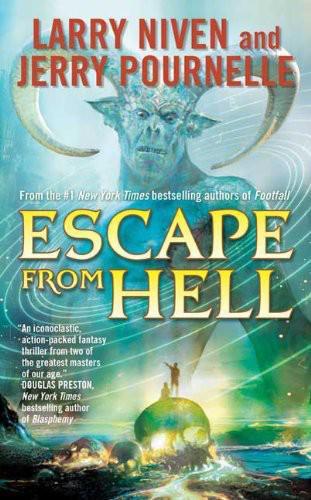
Escape from Hell
by
Larry Niven; Jerry Pournelle
Published 1 Apr 2010
Geryon floated up like a curious shark. He turned to show his profile, perhaps posing to show off the long reach of his handsomely body. His pelt was gorgeous, all gold–on–dark knots and figures that might have served as camouflage in sunlit water or the halls of Versailles. Now he slid halfway onto the cliff’s edge, leaving the long tail still waving above the depths. To me he still looked more like an alien than a mythological creature, but I could see subtle changes. Sylvia gaped. “Just like Dante,” she whispered. Geryon said, “Ouch. Who threw that rock?” “This has been willed where what is willed must be,” I said. Geryon grinned slyly.

The Shock of the Old: Technology and Global History Since 1900
by
David Edgerton
Published 7 Dec 2006
Increasingly engines were permanently fitted, but irrigation-pump engines remained the most popular since they were subsidised. In the 1980s iron sheet started to be used to make boats, and for bigger boats, recycled steel plates from the shipbreakers on the coast.32 The cycle-rickshaws, the motorised country-boats, the long-tailed boats, as well as the buildings of the shanty towns, combine the products of large-scale industry – the car engine, the bicycle, cement, asbestos-cement – and the local and small scale. These were derivative, adapted technologies. But they were more than that – for they were local adaptations that gave new life to older, more traditional forms.

Undoing the Demos: Neoliberalism's Stealth Revolution
by
Wendy Brown
Published 6 Feb 2015
Wolin emphasizes this in Democracy, Incorporated, although Wolin, too, avoids the descriptor “neoliberalism.”26 These themes are also the signature of filmmaker Michael Moore, and are developed in a different way by Paul Pierson and Jacob Hacker in Winner-Take-All Politics.27 U n d o in g D e m o c r a c y 29 Finally, critics of neoliberal state policy are often concerned with the economic havoc wreaked on the economy by the ascendance and liberty of finance capital, especially the destabilizing effects of the inherent bubbles and other dramatic fluctuations of financial markets. Made vivid by the immediate shock as well as the long tail of the 2008–2009 finance-capital meltdown, these effects are also underscored by the routinely widening discrepancies between the fates of Wall Street and the so-called “real” economy. They are charted by a range of thinkers including Gérard Duménil and Dominique Lévy in The Crisis of Neoliberalism, Michael Hudson in Finance Capitalism and Its Discontents, Yves Smith in E-CONned: How Unrestrained Self-Interest Undermined Democracy and Corrupted Capitalism, Matt Taibbi in Griftopia: A Story of Bankers, Politicians and the Most Audacious Power Grab in American History, and Philip Mirowski in Never Let a Serious Crisis Go to Waste: How Neoliberalism Survived the Financial Meltdown.28 Intensified inequality, crass commodification and commerce, ever-growing corporate inf luence in government, economic havoc and instability — certainly all of these are consequences of neoliberal policy, and all are material for loathing or popular protest, as indeed, Occupy Wall Street, the Southern European protests against austerity policies, and, earlier, the “Antiglobalization” movement loathed and protested them.

The Sharing Economy: The End of Employment and the Rise of Crowd-Based Capitalism
by
Arun Sundararajan
Published 12 May 2016
Also see Fred Butcher, “What Is a Smart Refrigerator,” https://fredsappliance.com/2014/06/smart-refrigerator/ for an interesting historical overview. 8. For an overview of the drone delivery technology tested by Amazon in 2014, see http://www.amazon.com/b?node=8037720011. 9. Marc Andreessen, “Why Bitcoin Matters,” New York Times, January 21, 2014, http://dealbook.nytimes.com/2014/01/21/why-bitcoin-matters/. 9. See Chris Anderson, The Long Tail: Why the Future of Business Is Selling Less of More (New York: Hyperion, 2008). 10. Jason Tanz, “How Airbnb and Lyft Finally Got Americans to Trust Each Other,” Wired, April 23, 2014, http://www.wired.com/2014/04/trust-in-the-share-economy. 11. James Coleman, Foundations of Social Theory (Cambridge, MA: Harvard University Press, 1990). 12.

The Impulse Society: America in the Age of Instant Gratification
by
Paul Roberts
Published 1 Sep 2014
William Lazonick, “Reforming the Financialized Corporation,” http://www.employmentpolicy.org/sites/www.employmentpolicy.org/files/Lazonick%20Reforming%20the%20Financialized%20Corporation%2020110130%20(2).pdf. 13. Author interview with William Lazonick, April 15, 2013. 14. Gerald Davis, Managed by the Markets: How Finance Re-Shaped America (New York: Oxford University Press, 2009), p. 90–91. 15. Interview with author. 16. “The Rise of Freakonomics,” Wired, Nov. 26, 2006, http://www.longtail.com/the_long_tail/2006/11/the_rise_of_fre.html. 17. The Oxford Companion to American Food and Drink, edited by Andrew F. Smith (New York: Oxford University Press, 2006), p. 266. 18. “Supply Chain News: Will Large Retailers Help Manufacturers Drive Out Supply Chain Complexity” Supply Chain Digest, June 30, 2009, http://www.scdigest.com/assets/On_Target/09-06-30-2.php 19.
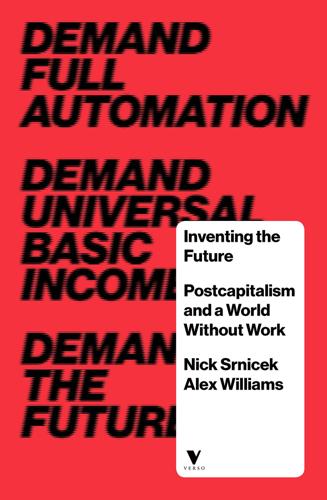
Inventing the Future: Postcapitalism and a World Without Work
by
Nick Srnicek
and
Alex Williams
Published 1 Oct 2015
In the process of transformation leaders will arise, but there is no vanguard party – only mobile vanguard functions.34 An ecology of organisations means a pluralism of forces, able to positively feedback on their comparative strengths.35 It requires mobilisation under a common vision of an alternative world, rather than loose and pragmatic alliances.36 And it entails developing an array of broadly compatible organisations: The point is to create something more than mere alliance building (where the parts, understood as constituted groupings of people, are supposed to stay the same, only co-operating punctually) and less than a one-size-fits-all solution (e.g. the idea of the party). This is about strategic interventions that can attract both constituted groups and the ‘long tail’ that does not belong to any groups, pitched not as exclusive but as complementary, whose effects can reinforce each other.37 This means that the overarching architecture of such an ecology is a relatively decentralised and networked form – but, unlike in the standard horizontalist vision, this ecology should also include hierarchical and closed groups as elements of the broader network.38 There is ultimately no privileged organisational form.

Moonwalking With Einstein
by
Joshua Foer
Published 3 Mar 2011
For that matter, why couldn’t I remember what I had for breakfast just the day before, even though I remembered exactly what I was having for breakfast—Corn Pops, coffee, and a banana—four years earlier when I was told that a plane had just crashed into one of the twin towers? And why am I always forgetting why I opened the refrigerator door? I came away from the U.S. Memory Championship eager to find out how Ed and Lukas did it. Were these just extraordinary individuals, prodigies from the long tail of humanity’s bell curve, or was there something we could all learn from their talents? I was skeptical about them for the same reason I was skeptical about Tony Buzan. Any self-appointed guru who has earned himself a king’s ransom in the modern “self-help” racket is bound to perk up a journalist’s bullshit detector, and Buzan had set off every alarm bell I’ve got.
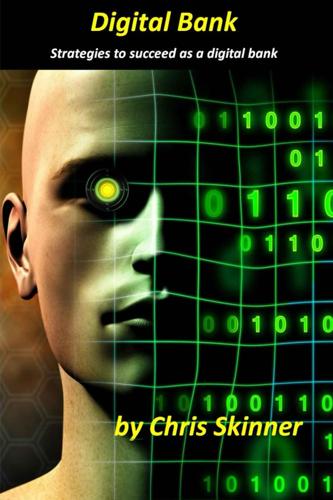
Digital Bank: Strategies for Launching or Becoming a Digital Bank
by
Chris Skinner
Published 27 Aug 2013
This is why mPowa questions the Square and iZettle models, saying that if you seek small merchants then the volume of transactions is too low to be a sustainable business model. It would certainly be true that if 90% of your clients only make one transaction a month of low value payments, then the model is questionable. However, I am sure that Square would refute such critique by claiming that the long tail of payments creates enough volume to be profitable. It certainly seems that way, as there are a whole range of other companies competing in this space such as PayaTrader, Intuit with GoPayment, Bancard with PayAnywhere, Verifone, Payleven and Sumup all noteworthy. Many of these systems are reviewed in more depth in the chapter that discuses mobile developments, so we do not want to repeat these in depth here except to focus a little bit upon the virtual currency aspects of social money.
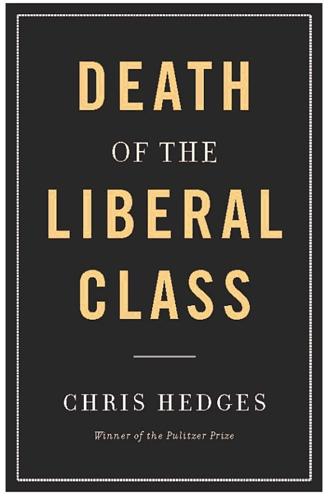
Death of the Liberal Class
by
Chris Hedges
Published 14 May 2010
I spoke with Jaron Lanier, the father of virtual-reality technology. He warns of this frightening new collectivism in You Are Not a Gadget. He notes that the habits fostered by the Internet have further reconfigured how we relate to one another. He writes that the philosophy behind terms of art such as Web 2.0, open culture, free software, and the long tail have become enablers of this new collectivism. He sites Wikipedia, which consciously erases individual voices, and Google Wave, which permits users to edit what someone else has said in a conversation, as well as watch others as they input, as technologies that accelerate mass collective thought and mass emotions.

The Second Machine Age: Work, Progress, and Prosperity in a Time of Brilliant Technologies
by
Erik Brynjolfsson
and
Andrew McAfee
Published 20 Jan 2014
When Kia poached Peter Schreyer from Audi in 2006, it was a signal that the market for talented automobile designers was increasingly global, not local. Although the top 1 percent and 0.01 percent have seen record increases in their earnings, the superstar economy has faced a few headwinds. Perhaps the most important among these is the growth of the long tail—the increased availability of niche products and services. Technology has not just lowered marginal costs; in many cases it has also lowered fixed costs, inventory costs, and the costs of searching. Each of these changes makes it more attractive to offer a greater variety of products and services, filling small niches that previously went unfilled.

Two Nations, Indivisible: A History of Inequality in America: A History of Inequality in America
by
Jamie Bronstein
Published 29 Oct 2016
Racial disparities in wage inequalities are measured using the wages of people who are actually in the labor force. But as sociologists Bruce Western and Becky Pettit show, incarceration falls the most heavily on those who are either already unemployed or who are able to command very low wages. Since so many young black men were imprisoned, their low wage levels—the long tail of a bell curve—were excluded from statistical calculations of inequality. Not only did imprisonment hide the real racial disparities in economic equality, it also helped to perpetuate those disparities. Time in prison and out of the labor force translates into fewer skills, an even lower wage, and tremendous difficulties in actually getting hired.63 GLOBALIZATION AND FREE TRADE While incarceration of young black men caused the statistical illusion that inequality was slowing in America in the 1990s, the jobs available were becoming more polarized into high-wage management jobs and low-wage service sector jobs with no hope of serving as a stepping stone to a middle-class career.64 During the 1980s, improvements in communications technology and the expansion of “big box” stores like Walmart and Target provided greater markets in the United States for goods either produced or finished inexpensively overseas.
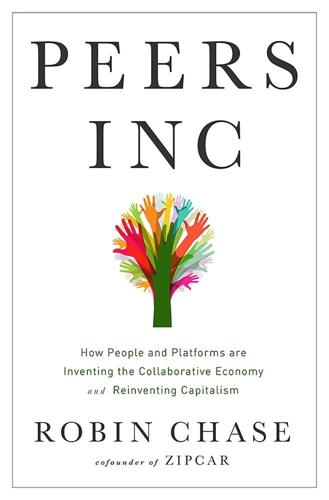
Peers Inc: How People and Platforms Are Inventing the Collaborative Economy and Reinventing Capitalism
by
Robin Chase
Published 14 May 2015
Pimps are less likely to be abusive if prostitutes have an alternative route to market. Specialist sites will enable buyers and sellers to assess risks more accurately. Apps and sites are springing up that will let them confirm each other’s identities and swap verified results from sexual-health tests.”3 Chris Anderson, former editor of Wired and author of The Long Tail and Makers, tells the story of Jordi Muñoz, who with him co-founded 3D Robotics. Chris writes, “He was a 19-year-old high school graduate in Tijuana, Mexico when I met him online.” In the community of unmanned aerial vehicle (UAV or drone) enthusiasts, Jordi was a standout. Jordi had been interested in remote-control planes since he was a young schoolboy in Tijuana.

Frugal Innovation: How to Do Better With Less
by
Jaideep Prabhu Navi Radjou
Published 15 Feb 2015
Philip Parker, a professor of marketing at INSEAD, a graduate business school, has developed a particularly disruptive publishing business model. He has found a way to reduce the cost of writing and printing to 12 cents a book while charging hundreds of dollars for niche titles. Some 95% of Parker’s automatically generated books are sent out electronically, and the rest are printed on demand as self-published paperbacks, targeting the long tail of extremely specialised topics. Probably the most prolific author there has been, Parker claims to have written over 200,000 books, with titles such as The 2009–2014 World Outlook for 60-milligram Containers of Fromage Frais and Webster’s English to Italian Crossword Puzzles: Level 1. Although this is still a niche, it may be only a matter of time before mainstream publishers adopt such frugal approaches to writing, printing, selling and distributing books.

The Fourth Revolution: The Global Race to Reinvent the State
by
John Micklethwait
and
Adrian Wooldridge
Published 14 May 2014
Ludwig Siegele, “Special Report on Start-ups,” The Economist, January 18, 2014, p. 13. 3. Ken Auletta, Googled: The End of the World as We Know It (New York: Penguin Press, 2009), p. 15. 4. Don Tapscott and Anthony D. Williams, Macrowikinomics: Rebooting Business and the World (New York: Portfolio / Penguin, 2012), p. 253. 5. Chris Anderson, The Long Tail: Why the Future of Business Is Selling Less of More (New York: Hyperion, 2006), p. 5. 6. Nicholas Bloom and John Van Reenen, “Measuring and Explaining Management Practices Across Firms and Countries,” Quarterly Journal of Economics 122, no. 4 (November 2007). 7. Gavin Newsom, Citizenville: How to Take the Town Square Digital and Reinvent Government (New York: Penguin Press, 2013), p. 9. 8.

Possible Minds: Twenty-Five Ways of Looking at AI
by
John Brockman
Published 19 Feb 2019
We need them to take our human nature into account, so that they are well coordinated and well aligned with us. If we succeed, we will indeed have tools that substantially increase our quality of life. Chapter 14 GRADIENT DESCENT CHRIS ANDERSON Chris Anderson is an entrepreneur; former editor-in-chief of Wired; co-founder and CEO of 3DR; and author of The Long Tail, Free, and Makers. Chris Anderson’s company, 3DR, helped start the modern drone industry and now focuses on drone data software. He got his start building an open-source aerial robotics community called DIY Drones, and undertook some ill-advised early experiments, such as buzzing Lawrence Berkeley Laboratory with one of his self-flying spies.

The Sixth Extinction: An Unnatural History
by
Elizabeth Kolbert
Published 11 Feb 2014
Of course, you know, in the real world it’s always more complicated.” Most of the findings from the BDFFP have indeed been variations on the theme of loss. Six species of primates can be found in the area of the project. Three of these—the black spider monkey, the brown capuchin monkey, and the bearded saki—are missing from the fragments. Birds like the long-tailed woodcreeper and the olive-backed foliage gleaner, which travel in mixed-species flocks, have all but disappeared from the smaller fragments and are found at much lower abundance in the larger ones. Frogs that breed in peccary wallows have vanished along with the peccaries that produced the wallows.
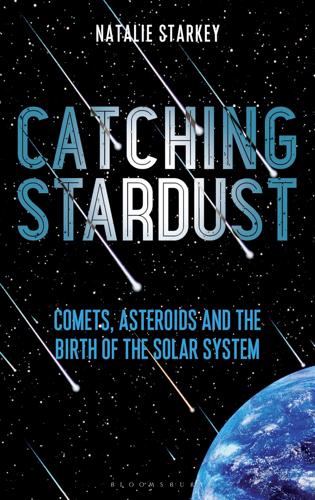
Catching Stardust: Comets, Asteroids and the Birth of the Solar System
by
Natalie Starkey
Published 8 Mar 2018
AUs are a handy way to discuss space distances, since 1AU is around 149.6 million km (93 million miles). During the formation of the planets the snow line is thought to have been located at around 2–3AU, but today it is located around 5AU because of the changing conditions of the Sun and solar nebula over time. The name ‘comet’ derives from the Greek word for ‘long-haired’, signifying the long tails comets produce as they pass near the Sun. Such tails are said to become ‘active’ as the comet crosses the snow line to enter the inner Solar System, causing it to release gas and dust as its nucleus is heated. Comets can produce magnificent tails, which can extend hundreds of kilometres from the nucleus in some cases, sometimes visible from Earth with the naked eye.
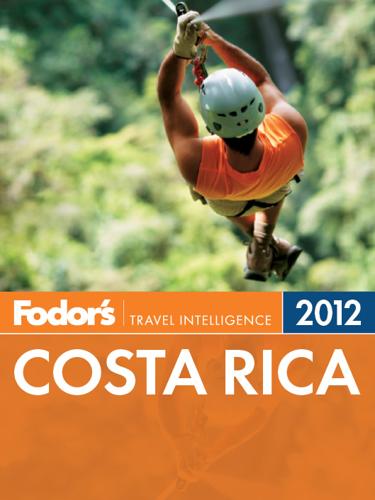
Fodor's Costa Rica 2012
by
Fodor's
Published 6 Oct 2011
Your reward is the cool waterfall and swimming hole at the end of the trail. There are also warm springs in the rocks surrounding the pool, so you can alternate between warm and cool water in this natural spa. Bird-Watching Wherever you walk in this park, you are bound to hear the three-note song of the long-tailed manakin. It sounds something like “Toledo,” and that’s what the locals call this bird. Along with their lavish, long tail feathers, the males are famous for their cooperative courting dance: two pals leap back and forth over each other, but only the senior male gets any girl who falls for this act.
…
The trail climbs 8 km (5 mi) through shaded forest, then up a sunbaked, treeless slope to the windswept crater, where temperatures plummet. Be sure to check wind and weather conditions at the ranger station before attempting this hike. Birding: The park’s forest, alive with the haunting songs of the long-tailed manakin and the loud whinnies of the ivory-billed woodcreeper, is prime bird-watching territory. For intrepid birders, the winding trail leading to the crater is home to the rock wren, which can only be found on these slopes. Santa Rosa National Park Renowned for its wildlife, Santa Rosa National Park protects the largest swath of extant lowland dry forest in Central America, about 91,000 acres.

Climbing Mount Improbable
by
Richard Dawkins
and
Lalla Ward
Published 1 Jan 1996
Figure 1.9 Animals with similar needs often resemble each other more than they resemble their closer relatives. The Algerian hedgehog, Erinaceus algirus (a), is a close cousin of the shrew hedgehog, Neotetracus sinensis (b). The greater hedgehog tenrec, Setifer setosus (c), is a close cousin of the long-tailed tenrec, Microgale melanorrachis (d). Figure 1.10 Convergent evolution: independently evolved streamlining: (a) Bottlenose dolphin, Tursiops truncatus; (b) Ichthyosaurus; (c) blue marlin, Makaira nigricans; and (d) Galapagos penguin, Spheniscus mendiculos. Often living bodies have converged upon the same shape as each other, not because they are mimicking each other but because the shape that they share is separately useful to each of them.
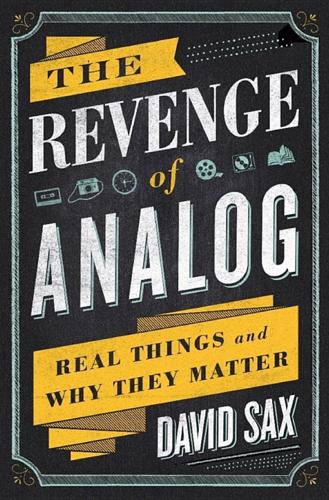
The Revenge of Analog: Real Things and Why They Matter
by
David Sax
Published 8 Nov 2016
one startup founder told me, cradling the black Moleskine notebook in his arms. The more I looked into this, the deeper it went. I read articles about the lives of technology industry leaders who spoke about their personal aversion to digital gadgets with their families. Steve Jobs didn’t let his kids play with the very iPads he created, Chris Anderson from Wired and The Long Tail set time limits on technology for his children, and Evan Williams, who cocreated the digital publishing platforms Twitter, Blogger, and Medium, lived in a technology-free house, with a huge library of books. Silicon Valley and San Francisco, the mecca of ed tech, were also home to the most analog alternative schools in the country, from screen-free Waldorf and Montessori schools to outdoor kindergartens and a wild warehouse I visited called Brightworks School, where the children of digital titans built their own classrooms with saws and drills.

Beautiful Visualization
by
Julie Steele
Published 20 Apr 2010
“Link communities reveal multi-scale complexity in networks.” http://arxiv.org/abs/0903.3178v2. Aldroandi, Ulisse. 1556/1562. “Appresso tutte le statue antiche, che in Roma in diversi luoghi, e case particolari si veggono, raccolte e descritte (...) in questa quarta impressione ricorretta.” Le antichità della città di Roma. Ed. Lucio Mauro. Venice. Anderson, Chris. 2006. The Long Tail. New York: Hyperion. http://www.thelongtail.com. Anderson, P.W. 1972. “More is different.” Science 177, no. 4047: 393–396. Bartsch, Adam. 1854–1870. Le Peintre-Graveur, nouvelle edition. v. 1–21. Leipzig: Barth. Bartsch, Tatjana. 2008. “Distinctae per locos schedulae non agglutinatae” – Das Census-Datenmodell und seine Vorgänger.

Only Humans Need Apply: Winners and Losers in the Age of Smart Machines
by
Thomas H. Davenport
and
Julia Kirby
Published 23 May 2016
Even avocations can turn to vocations when artisans can connect with enough interested buyers. The new employment marketplaces that match workers to tasks, or solvers to seekers, might be bad news for undistinguished talent. But they greatly reward the hyperspecialists. How far can this take people into the long tail? We think it is fair to say: infinitely far. A young friend is a novice filmmaker, hoping to shoot a scene in New York. Finding the right location might be hard, but finding the guy who can find it turns out to be easy. Nick Carr specializes in film location scouting in New York City, and has for the past decade.
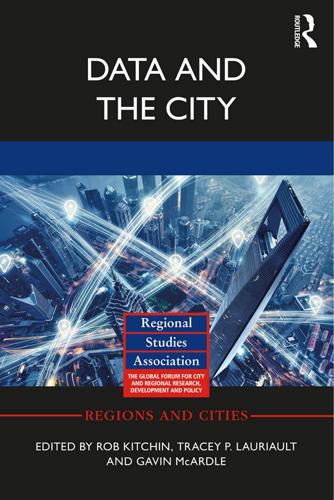
Data and the City
by
Rob Kitchin,Tracey P. Lauriault,Gavin McArdle
Published 2 Aug 2017
Inherently, the level of engagement of the participants is assumed to be very low – merely downloading a piece of software and configuring it once in a while. Since 2010, I have been involved in volunteer computing as part of the IBM World Community Grid (WCG) project, as a way of experiencing volunteer computing on my work desktop, laptops and later on my smartphone. Even though I am only one of 378,000 participants in the project, I am part of the long tail – ranking 20,585 with my top contributions being for FightAIDS@Home and Computing for Clean Water projects. The operation of WCG transformed my volunteering into a ‘device’ and it disburdened me from actively dedicating time to support the project. From time to time, I notice the screensaver on my computers and am pleased to see the IBM WCG icon on my smartphone in the morning, knowing that it has used time since being fully charged for some processing.

Forward: Notes on the Future of Our Democracy
by
Andrew Yang
Published 15 Nov 2021
The most common jobs in the economy—retail, customer service, food service and preparation, truck driving and transportation, manufacturing—often require physical proximity and have fallen into lower demand when more people stay home. These effects will last for years. When will the bars, restaurants, concert halls, theaters, and bus tours be operating at full capacity? Will shuttered department stores ever reopen? Many of them won’t. Then there is the long-tail human toll. People who are unemployed for six months or more are likely to become unattached from the workforce entirely. This results in an increase in smoking, drinking, drug use, depression, domestic violence, child abuse, suicides, violent crimes, disability, and on and on. People who drop out tend to atrophy as communities disintegrate and opportunities disappear.

Masters of Scale: Surprising Truths From the World's Most Successful Entrepreneurs
by
Reid Hoffman
,
June Cohen
and
Deron Triff
Published 14 Oct 2021
In those early days, Julia went to extremes to keep Eventbrite’s feedback loop spinning. Both she and Kevin gave out their cellphone numbers where they could be reached to handle their customers’ real-time issues and complaints. By reacting to all this feedback fast, Eventbrite was able to create a revenue stream from the long tail of small-event organizers that their competitors had left on the table. Pretty soon, those TechCrunch meetups Eventbrite helped ticket grew into the TechCrunch Disrupt Conference—a dominant feature on the tech industry calendar. Year after year, Eventbrite found a larger, equally vocal customer base, helping them further refine their product, setting them up to service bigger and more complex events.
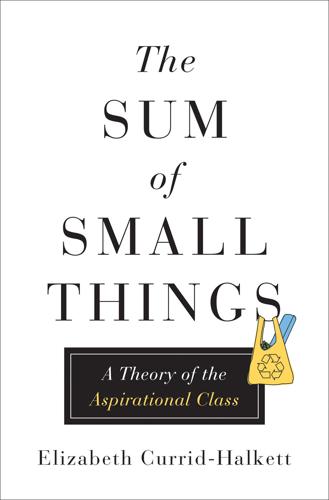
The Sum of Small Things: A Theory of the Aspirational Class
by
Elizabeth Currid-Halkett
Published 14 May 2017
Or, simply put, in urban centers there are plenty of people who will partake in the same types of consumption (economies of scale) to uphold amenities like baseball stadiums, opera houses, and theaters and will drive down fixed costs for expenditures such as massages, organic food, and happy hour. Simultaneously, there are enough people that the “long tail” of consumption (economies of scope)—ethnic restaurants, high-end boutiques, and avant-garde theater—will also be in demand. This interplay of significant demand for the same things and the large sum of idiosyncrasies that emerge from having so many people with diverse backgrounds and preferences in the same place is what propels so many choices in urban centers.

The Big Nine: How the Tech Titans and Their Thinking Machines Could Warp Humanity
by
Amy Webb
Published 5 Mar 2019
Because Amazon was smartest in its approach, working with federal, state, and local governments—offering them deep discounts at Amazon.com, patiently working through procurement requirements, and building and maintaining cloud services specifically for them—it became the preferred platform for certain social services in the United States. That is how Amazon discovered how to leverage the long tail of government funding. Low-income families now live in Amazon Housing, which has replaced city-funded public housing programs in the United States. By every measure, they are far superior to any public housing ever provided through our previous government programs. Amazon Homes are completely outfitted with connected devices in every room.

Secrets of Sand Hill Road: Venture Capital and How to Get It
by
Scott Kupor
Published 3 Jun 2019
BELL CURVE POWER-LAW CURVE So if you are an institutional investor in this paradigm, the likelihood of your investing in one of the few firms that generates excess returns is small. And if you invest in the median firm, the results generated by that firm are likely to be in the long tail of returns that are subpar. On top of that, academic research on VC returns shows that the top firms are likely to persist across fund cycles. Thus, the firms that generate excess returns in one fund are more likely to continue to generate excess returns in subsequent funds. In other words, there is not a pattern of different firms winning from one fund to the next; the spoils tend to go to the same set of winners over time.

Calling Bullshit: The Art of Scepticism in a Data-Driven World
by
Jevin D. West
and
Carl T. Bergstrom
Published 3 Aug 2020
This is the democratizing promise of the Internet: endless new voices brought into a worldwide conversation. Members of marginalized groups, who previously might have lacked the financial and social capital to publish and publicize their work, can now make their stories heard. At the same time, the new technology captures the long tail of interests and creates communities around even the rarest of obsessions. Want to build your own air calliope? Explore the Scooby-Doo cartoons from a critical theory perspective? Learn the complex dice games played by the protagonists of The Canterbury Tales? The Internet has you covered. This democratization has a dark side as well.
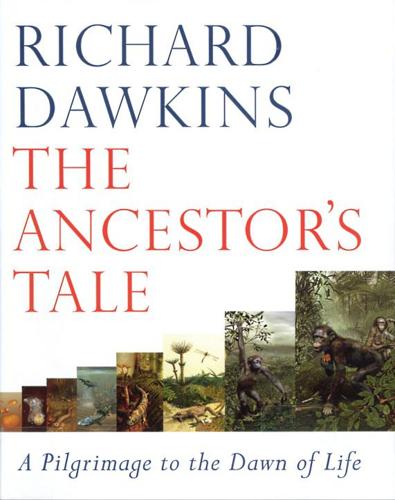
The Ancestor's Tale: A Pilgrimage to the Dawn of Evolution
by
Richard Dawkins
Published 1 Jan 2004
Lorises and pottos, whom we shall meet at Rendezvous 8, creep about the trees, slowly stalking their prey, and they have extremely short tails. Their relatives the bushbabies, on the other hand, are energetic leapers, and they have long feathery tails. Tree sloths are tailless, like the marsupial koalas who might be regarded as their Australian equivalents, and both move slowly in the trees like lorises. In Borneo and Sumatra, the long-tailed macaque lives up trees, while the closely related pig-tailed macaque lives on the ground and has a short tail. Monkeys that are active in trees usually have long tails. They run along the branches on all fours, using the tail for balance. They leap from branch to branch with the body in a horizontal position and the tail held out as a balancing rudder behind.
…
All apes, as we have seen, are occasionally bipedal, and gibbons, when not brachiating, run along branches on their hind legs, using their long arms to steady themselves. It is easy to imagine a tail being a nuisance for a bipedal walker. My colleague Desmond Morris tells me that spider monkeys sometimes walk bipedally, and the long tail is obviously a major encumbrance. And when a gibbon projects itself to a distant branch it does so from a vertically hanging position, unlike the monkey's horizontal leaping posture. Far from being a steadying rudder streaming out behind, a tail would be a positive drag for a vertical brachiator like a gibbon or, presumably, Concestor 4.

Fodor's Costa Rica 2013
by
Fodor's Travel Publications Inc.
Published 1 Oct 2012
Get here early, well before 9 am, if you plan a long hike or a climb to the crater, since the park officially closes at 3 pm but you can still exit up until 5 pm. The park is closed Monday all year. BEST WAYS TO EXPLORE Bird-Watching Wherever you walk in this park, you are bound to hear the three-note song of the long-tailed manakin. It sounds something like “Toledo,” and that’s what the locals call this bird. Along with their lavish, long tail feathers, the males are famous for their cooperative courting dance: two pals leap back and forth over each other, but only the senior male gets any girl who falls for this act.
…
Local ranches and lodges organize daylong trail rides to waterfalls and sulfur springs. Your nose will tell you when you are approaching the springs—it’s not the picnic lunch gone bad, it’s the distinctive rotten-egg smell of sulfur. TOP REASON TO GO Birding The park’s forest, alive with the haunting songs of the long-tailed manakin and the loud whinnies of the ivory-billed woodcreeper, is prime bird-watching territory. For intrepid birders, the winding trail leading to the crater is home to the rock wren, which can only be found on these slopes. Climbing to the Crater The hike to the crater summit is the most demanding, but also the most dramatic.

Utopia Is Creepy: And Other Provocations
by
Nicholas Carr
Published 5 Sep 2016
Wikipedia articles have become the default external link for many creators of web content, not because Wikipedia is the best source but because it’s the best-known source and, generally, it’s “good enough.” Wikipedia is the lazy man’s link, and we’re all lazy men, except for those of us who are lazy women. What Chris Anderson famously described as the long tail of content still exists online, but far from wagging the web-dog, the tail has taken on the look of a vestigial organ. Chop it off, and most people would hardly notice. On the net as off, things gravitate toward large objects. The center holds. RESURRECTION February 16, 2009 THE SINGULARITY—THAT much-anticipated moment when artificial intelligence leaps ahead of human intelligence, rendering man immortal at the instant of his obsolescence—has been called “the rapture of the geeks.”
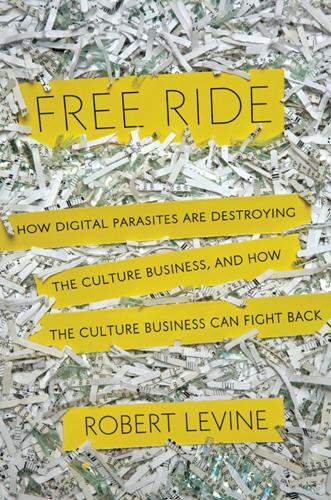
Free Ride
by
Robert Levine
Published 25 Oct 2011
“Creators Must Move Beyond Suing the Audience,” Electronic Frontier Foundation Deeplinks blog, May 28, 2010. BIBLIOGRAPHY BOOKS Alderman, John. Sonic Boom: Napster, MP3, and the New Pioneers of Music. Cambridge, Mass.: Perseus, 2001. Anderson, Chris. Free: The Future of a Radical Price. New York: Hyperion, 2009. ———. The Long Tail: Why the Future of Business Is Selling Less of More. New York: Hyperion, 2006. Auletta, Ken. Googled: The End of the World as We Know It. New York: Penguin, 2009. Battelle, John. The Search: How Google and Its Rivals Rewrote the Rules of Business and Transformed Our Culture. New York: Portfolio, 2005.

Building Microservices
by
Sam Newman
Published 25 Dec 2014
Not only could this be inefficient for the reporting system, it could generate load for the service in question too. While we could speed up some of the data retrieval by adding cache headers to the resources exposed by our service, and have this data cached in something like a reverse proxy, the nature of reporting is often that we access the long tail of data. This means that we may well request resources that no one else has requested before (or at least not for a sufficiently long time), resulting in a potentially expensive cache miss. You could resolve this by exposing batch APIs to make reporting easier. For example, our customer service could allow you to pass a list of customer IDs to it to retrieve them in batches, or may even expose an interface that lets you page through all the customers.
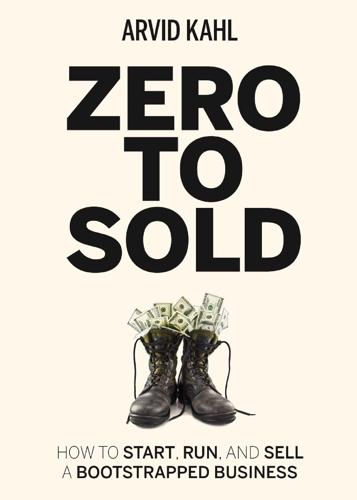
Zero to Sold: How to Start, Run, and Sell a Bootstrapped Business
by
Arvid Kahl
Published 24 Jun 2020
You'll be surprised by how something that's perfectly clear to you can be confusing to someone in the industry you serve if you don't know the intricacies of the domain-specific language. When you want to convince a customer to buy a product, you usually show them your value propositions. Value propositions can be leading or lagging. That means some features have an immediate impact when being used, and others will only show themselves in the long tail of using a service. There are retention value propositions that you only use in customer service situations (think of a conversation that contains the phrase "See how easy this was? Next time you'll use this, it won't take more than a minute") that are not going to sell the product to someone who is just browsing.

Don't Be Evil: How Big Tech Betrayed Its Founding Principles--And All of US
by
Rana Foroohar
Published 5 Nov 2019
Larry Page and Sergey Brin were at first reluctant to combine the data and information that could be harvested via cookies on its own platform with what could now be garnered via DoubleClick (which was, of course, now a part of Google itself). But eventually, under pressure to grow, the company relented. Thanks to the merger, “Google became the only company,” writes Levy, “with the ability to pull together user data on both the fat head and the long tail of the Internet. The question was, would Google aggregate that data to track the complete activity of internet users? The answer was yes.”21 While Google had long promised users that it would ask their permission if it ever used their data for anything other than the purposes for which they’d given it (that is, for whatever individual search, or email, social media, or map functions they’d signed up for), it had begun combining and selling all the data it had on users to the highest bidder.

Reset
by
Ronald J. Deibert
Published 14 Aug 2020
India is currently the world’s second-largest smartphone market, and what I see in Nehru Place certainly testifies to that statistic.374 I don’t think I’ve ever seen as many variations of mobile devices and their various plastic components and accessories in one place as I do here. This district is a way station of sorts, a kind of technological halfway house interposed between consumers and India’s semi-regulated reuse, repair, and remanufacturing sector. From here, we make our way by car to Seelampur in northeast Delhi, the next and final step in the long tail at the end of the supply chain. According to the 2018 Global E-waste Monitor report, India generates about two million tonnes of e-waste annually and ranks fifth among e-waste producing countries, after the U.S., China, Japan, and Germany. It recycles less than 2 percent of the total e-waste it produces annually.
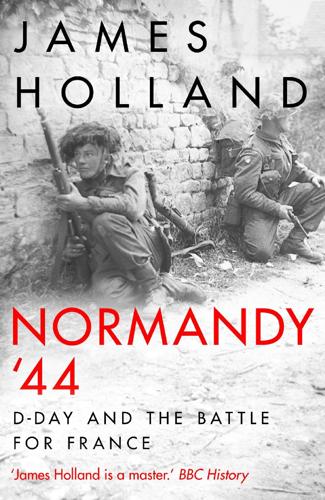
Normandy '44: D-Day and the Epic 77-Day Battle for France
by
James Holland
Published 3 Jun 2019
Under him were the component commanders, and while no one could deny that Montgomery was a difficult character, at least the channels of communication were clear and uncluttered. For the most part, an Allied divisional, corps, army or even army group commander knew where they stood, to whom they were subordinated, and they also knew they were being superbly supported by the long tail of supply and logistics behind them. This applied to the air forces and navy as much as it did to the army. Finally, while there were inter-service rivalries, for the most part the different services were all driven by a common goal. The quite exceptional coordination of effort between naval, air and ground forces in the first week of the invasion had enabled the Allies to overcome the many crises and challenges that had been thrown up so far.
…
‘All the luck in the world to you and Dempsey,’ signalled Eisenhower that day to Montgomery.3 ‘Please do not hesitate to make major demands for air support of any kind which could possibly be helpful to you. Whenever a justifiable opportunity offers itself, we must destroy the enemy with everything we have.’ EPSOM would finally begin at dawn the following morning, Monday, 26 June. For all the Allied fire-power and the long tail of support troops, it was still the infantry and armour, with a few engineers besides, who had to cover the hard yards. It was these men who had to emerge from their slit-trenches and their cover, get up and advance. The moment they did that, they exposed themselves to a mass of withering machine-gun fire, mortars and artillery.

Radicals Chasing Utopia: Inside the Rogue Movements Trying to Change the World
by
Jamie Bartlett
Published 12 Jun 2017
But for climate-change activism to use civil disobedience with similar effect, it needs to become a mass movement: activists and Nimbys have to work together. Activists doing it alone will replicate the same problem: a small band of well-intentioned risk-takers who accidentally turn off the masses. Activists can bring their experience, daring and know-how, and Nimbys can bring the numbers—the long tail of grandmothers, builders, unemployed people, personal trainers, bankers, shopkeepers, conservative voters—that are necessary. This is the dynamic that has helped turn anti-fracking into a powerful force, and it’s the same dynamic that mobilised thousands of indigenous Americans against the Dakota Access Pipeline in 2016.

The Everything Store: Jeff Bezos and the Age of Amazon
by
Brad Stone
Published 14 Oct 2013
There were orders from U.S. troops overseas and from an individual in Ohio who wrote to say he lived fifty miles away from the nearest bookstore and that Amazon.com was a godsend. Someone from the European Southern Observatory in Chile ordered a Carl Sagan book—apparently as a test—and after the order was successful, the customer placed a second order for several dozen copies of the same book. Amazon was getting one of the first glimpses of the “long tail”—the large number of esoteric items that appeal to relatively few people. Paul Davis once surveyed the odd assortment of books squirreled away on the shelves in the basement and with a sigh called it “the smallest and most eclectic bookstore in the world.” No one had been hired yet to pack books, so when volumes rose and the company fell behind on shipping, Bezos, Kaphan, and the others would descend to the basement at night to assemble customer orders.

Designing Social Interfaces
by
Christian Crumlish
and
Erin Malone
Published 30 Sep 2009
. • Consider withholding the vote mechanism on high-level listing pages. Make readers click down to an article page before voting. • Provide a standalone voting mechanism that third-party publishers can include on destination sites. Items with fewer votes are not punished for their lack of popularity; they merely fall into obscurity, and disappear into the long tail of the popularity-ranked pool. You may want to consider a moderation control that lets the community decide to remove an item altogether, but don’t make this control prominent. The emphasis for this pattern is on promoting the good, not punishing the bad. You should downplay the down-vote. Why This pattern has come to popularity recently (most notably on the link-popularity sites Digg, Reddit, and Newsvine, among others).

Miracle Cure
by
William Rosen
Published 14 Apr 2017
The reason for even that small number was that Richardson-Merrell had recruited physicians for “investigational use” of the drug prior to FDA approval, which was not only permissible but condoned by the existing 1938 Food, Drug, and Cosmetic Act. As a result, when the company withdrew its application at the end of 1961, the long tail of thalidomide risk hadn’t yet been reached. Kelsey, very much aware of this, sent the company a letter asking whether any quantity of Kevadon/thalidomide was still in the hands of physicians. The company was unable to provide anything but an embarrassingly incomplete answer; it had distributed more than 2.5 million thalidomide pills to more than a thousand doctors in the United States and had utterly failed to maintain adequate records of who, when, and how much.
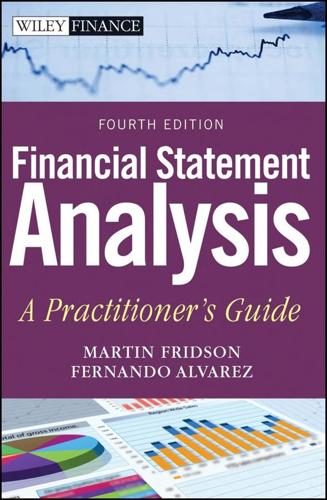
Financial Statement Analysis: A Practitioner's Guide
by
Martin S. Fridson
and
Fernando Alvarez
Published 31 May 2011
A bankruptcy at an otherwise financially sound company, brought on solely by legal claims, had become a nightmarish reality. Intensifying the shock was that the problem had lain dormant for many years. Manville's bankruptcy resulted from claims for diseases contracted decades earlier through contact with the company's products. The long-tailed nature of asbestos liabilities was underscored by a series of bankruptcy filings over succeeding years. Prominent examples, each involving a billion dollars or more of assets, included Walter Industries (1989), National Gypsum (1990), USG Corporation (1993 and again in 2001), Owens Corning (2000), and Armstrong World Industries (2000).

After the Fall: Being American in the World We've Made
by
Ben Rhodes
Published 1 Jun 2021
I reached out to a friend named John, a perpetually sunny millennial who prided himself on knowing people across Hong Kong’s political spectrum. One afternoon, we went to a local bar and met with two young people named Charles and Lorraine, both around thirty years old. The sound system churned out a steady stream of American rock hits from the 1980s, the music of my childhood, the dusk of the Cold War, the long tail of American influence: Def Leppard’s “Pour Some Sugar on Me” and Journey’s “Don’t Stop Believin’.” I asked them to go back to the handover to give me a sense of how things had changed. Lorraine explained what “one country, two systems” meant by quoting a Chinese proverb famously used by the former Chinese Communist Party leader Jiang Zemin: “The river water does not intrude into the well water.”

Binge Times: Inside Hollywood's Furious Billion-Dollar Battle to Take Down Netflix
by
Dade Hayes
and
Dawn Chmielewski
Published 18 Apr 2022
“So, when he became CEO . . . that gave us license to go further. I felt that set the tone for, like, ‘The CEO has given permission. So let’s do it.’” A provocative article published in 2004 by Wired editor Chris Anderson got Iger and his senior management team thinking about the future. In “The Long Tail,” Anderson predicted the internet would radically transform the entertainment economy by creating a frictionless, no-barriers-to-entry platform where niche content would find its audience and flourish. Iger asked corporate strategist Kevin Mayer to examine what this coming democratization of content might mean for Disney as a purveyor of mass-market movies and television shows.

The Coming Wave: Technology, Power, and the Twenty-First Century's Greatest Dilemma
by
Mustafa Suleyman
Published 4 Sep 2023
The SecureDNA project is a good example, laying out a path for governing synthetic biology similarly to how chemical weapons have been curtailed. If China and the United States could create, say, a shared bio-risk observatory, encompassing everything from advanced R&D to deployed commercial applications, it would be a precious area of collaboration to build on. China and the United States also share an interest in restraining the long tail of bad actors. Given that an Aum Shinrikyo could come from anywhere, both countries will be keen to restrain the uncontrolled spread of the world’s most powerful technologies. Currently China and the United States are in a struggle to set technological standards. But a shared approach is a clear win-win; splintered standards make things harder for everyone.

Digital Disconnect: How Capitalism Is Turning the Internet Against Democracy
by
Robert W. McChesney
Published 5 Mar 2013
The extent of the crisis in journalism is underappreciated by most Americans, including many serious news and political junkies. The primary reason may well be the Internet itself. Because many people envelop themselves in their favored news sites and access so much material online, even surfing out onto the “long tail,” the extent to which we are living in what veteran editor Tom Stites terms a “news desert” has been obscured.110 Moreover, using dissident websites, social media, and smartphones, activists have sometimes “bypassed the gatekeepers” in what John Nichols calls a “next media system.”111 Its value is striking during periods of public protest and upheaval.
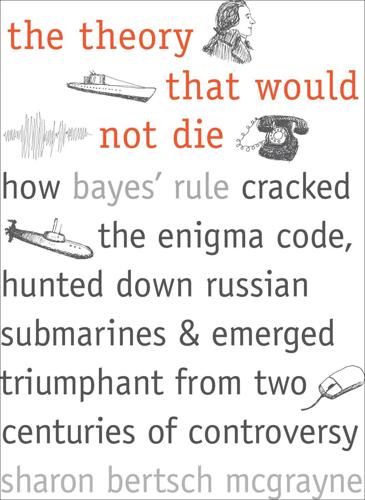
The Theory That Would Not Die: How Bayes' Rule Cracked the Enigma Code, Hunted Down Russian Submarines, and Emerged Triumphant From Two Centuries of Controversy
by
Sharon Bertsch McGrayne
Published 16 May 2011
Contemporaries called it the Century of Lights and the Age of Science and Reason, and the popularization of science was its most important intellectual phenomenon. Given the almost dizzying curiosity of the times, it is not surprising that, shortly after his tenth birthday, Pierre Simon was profoundly affected by a spectacular scientific prediction.2 Decades before, the English astronomer Edmond Halley had predicted the reappearance of the long-tailed comet that now bears his name. A trio of French astronomers, Alexis Claude Clairaut, Joseph Lalande, and Nicole-Reine Lepaute, the wife of a celebrated clockmaker, solved a difficult three-body problem and discovered that the gravitational pull of Jupiter and Saturn would delay the arrival of Halley’s comet.
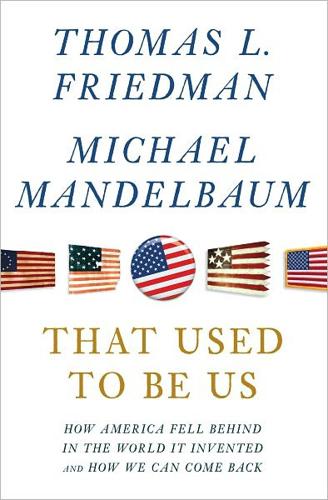
That Used to Be Us
by
Thomas L. Friedman
and
Michael Mandelbaum
Published 1 Sep 2011
Transformative change happens when industries democratize, when they’re ripped from the sole domain of companies, governments, and other institutions and handed over to regular folks. The Internet democratized publishing, broadcasting, and communications, and the consequence was a massive increase in the range of both participation and participants in everything digital—the long tail of bits. Now the same is happening to manufacturing … The tools of factory production, from electronics assembly to 3-D printing, are now available to individuals, in batches as small as a single unit. Anybody with an idea and a little expertise can set assembly lines in China into motion with nothing more than some keystrokes on their laptop.

The Rise and Fall of the Third Chimpanzee
by
Jared Diamond
Published 2 Jan 1991
A visitor from outer space who had yet to see humans could have no way of predicting that men rather than women would have beards, that the beards would be on the face rather than above the navel, and that women would not have red and blue buttocks. That sexual selection really can work, at least in birds, was proved by an elegant experiment carried out by the Swedish biologist Make Andersson on the long-tailed widowbird of Africa. In this species the male's tail in the breeding season grows to 20 inches long, while the female's tail is only 3 inches. Some males are polygamous and acquire up to six mates, at the expense of other males who get none. Biologists had guessed that a long tail served as an arbitrary signal by which males attracted females to join their harem.
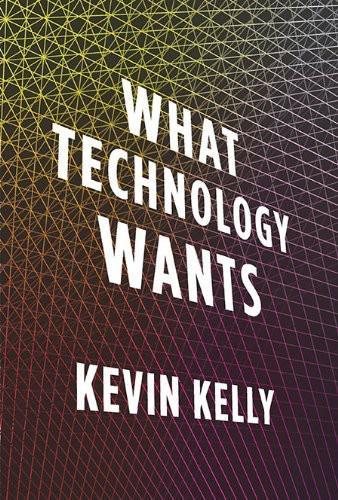
What Technology Wants
by
Kevin Kelly
Published 14 Jul 2010
With the advent of rapid fabrication (machines that can fabricate things on demand in quantities of one) specialization will leap ahead so that any tool can be customized to an individual’s personal needs or desires. Very niche-y functions may summon devices that are assembled for only one task and then unassembled. Ultraspecialized artifacts may live for only a day, like a mayfly. The “long tail” of niches and personal customization is a characteristic not merely of media but of technological evolution itself. We can forecast the future of almost any invention working today by imagining it evolving into dozens of narrow uses. Technology is born in generality and grows to specificity.
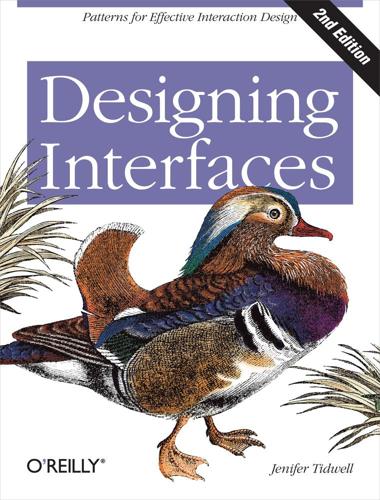
Designing Interfaces
by
Jenifer Tidwell
Published 15 Dec 2010
A widget containing the top three services might appear near the top of the content, for instance, while a more complete widget might appear at the end. This complicates the design, but it might work well if you have a lot of services to show and not much space at the top. Figure 9-31. Sharing widgets from Wired, Boing Boing, Technorati, and Pandora Pop ups and drop downs to show the “long tail” of social services are a common way to implement progressive disclosure—the user doesn’t see the numerous other sharing services until she clicks on a button—but again, these hide functionality and are not as accessible as items shown directly on the page. Mashable, shown in Figure 9-32, uses three different strategies: a small Sharing Widget beside a news snippet on the front page, a slightly expanded widget on the page containing the article (it now has an Email feature and a Share button), and a pop up shown when the reader clicks the Share button.
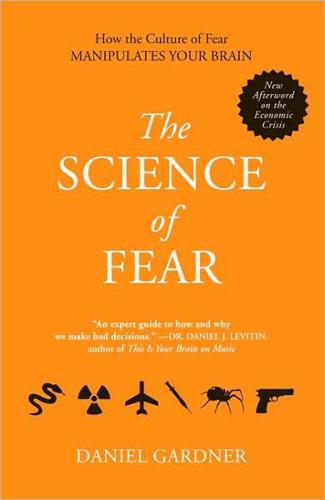
The Science of Fear: How the Culture of Fear Manipulates Your Brain
by
Daniel Gardner
Published 23 Jun 2009
We can understand the toxicological principle that “the poison is in the dose” rationally. But Gut doesn’t get, it doesn’t make intuitive sense, and that can lead to some very odd conclusions. In The Varieties of Scientific Experience , the late astronomer Carl Sagan tells how, when it appeared that the Earth would pass through the long tail of Halley’s comet in 1910, “there were national panics in Japan, in Russia, in much of the southern and midwestern United States.” An astronomer had found that comet tails include, among other ingredients, cyanide. Cyanide is a deadly poison. So people concluded that if the Earth were to pass through a comet tail, everyone would be poisoned.

Water: A Biography
by
Giulio Boccaletti
Published 13 Sep 2021
In particular, its experts developed plans for the Pa Mong dam, an enormous multipurpose installation on the main stem of the river, a few kilometers north of the capital of Laos. Eventually, the United Nations began getting involved through the Economic Committee for Asia and the Far East, which led to the intergovernmental Mekong Committee in 1957. The long tail of American influence continued in this new era. The committee had been the result of recommendations by the retired General Wheeler, former chief of engineers of the Army Corps and consultant to the World Bank. American experts, led by the geographer Gilbert F. White, also developed a further set of recommendations in 1961, while on a mission funded by the Ford Foundation.
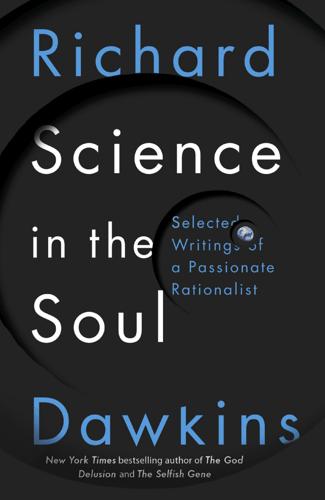
Science in the Soul: Selected Writings of a Passionate Rationalist
by
Richard Dawkins
Published 15 Mar 2017
He believed that sexually selected ornaments were badges of good health, selected for their capacity to advertise the health of a male – bad health as well as good. One way to express Hamilton’s Wallacean idea is to say that selection favours females who become skilled veterinary diagnosticians. At the same time, selection favours males who make it easy for them by, in effect, growing the equivalent of conspicuous thermometers and blood-pressure meters. The long tail of a bird of paradise, for Hamilton, is an adaptation to make it easy for females to diagnose the male’s health, good or bad. An example of a good general diagnostic is a susceptibility to diarrhoea. A long dirty tail is a giveaway of ill-health. A long clean tail is the opposite. The longer the tail, the more unmistakable the badge of health, whether good health or poor.

The Lonely Century: How Isolation Imperils Our Future
by
Noreena Hertz
Published 13 May 2020
In a poll conducted immediately after President Trump signed the $2 trillion coronavirus stimulus bill in March of 2020, over three-quarters of Democrats and Republicans expressed approval of the legislation – even after they had been reminded of the astonishing price tag.8 Another poll carried out at the same time revealed that as many as 55% of US voters were now in favour of Medicare for All, a rise of nine points since January of that year.9 Meanwhile, in the United Kingdom public support for increased welfare spending to help the poor, even if it led to higher taxes, was already in 2017 at its highest level for fourteen years.10 And in May 2020 during the coronavirus crisis, even the most ardent pro free-market think tanks were urging the government to avoid tax cuts and austerity measures and instead increase public expenditure.11 The need for bold steps and an unprecedented scale of commitment will be especially profound in the immediate wake of the pandemic, given the economic pressures and the competing demands on public resources it has induced. Yet it is imperative that, as we move away from the eye of the storm, governments understand that the need for additional support will persist due to factors including rapidly aging populations (in the Global North, that is), the long-tail economic damage of the coronavirus and the additional (and severe) job losses due to automation we can expect over the coming years. When it comes to unemployment, the support the state provides cannot just be financial. Governments need to make moves to slow down the rate of substitution of labour by robots, and earlier I mooted one way of potentially achieving this – a robot tax.
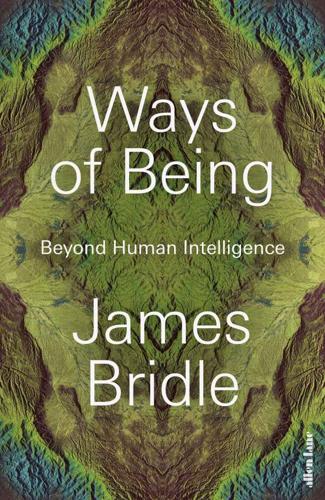
Ways of Being: Beyond Human Intelligence
by
James Bridle
Published 6 Apr 2022
One day, the same might be true of the demilitarized zone, or DMZ, between North and South Korea, a 155-mile-long, 2.5-mile-wide strip of land that has been virtually untouched by humans for more than six decades and is now home to millions of migratory birds and flourishing plant species, as well as endangered animals such as Siberian musk deer, cranes, vultures, Asiatic black bears and a unique species of goat, the long-tailed goral. As in the thirty-kilometre exclusion zone around the Chernobyl nuclear reactor, which scientists have called ‘an unintentional nature reserve’, wildlife has flourished when humans have withdrawn. Despite high radiation levels in the zone, populations of elk, boar, foxes and deer are at least as high as in other preserves in Ukraine and Belarus – while one study suggests that wolves might be seven times more abundant.7 A crab bridge on Christmas Island.
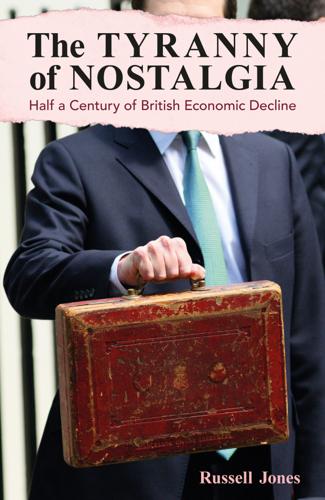
The Tyranny of Nostalgia: Half a Century of British Economic Decline
by
Russell Jones
Published 15 Jan 2023
structural faults The productivity slowdown pointed to shortcomings in UK supply-side policy. Indeed, it could be argued that the UK needed a second wave of structural reforms in the wake of the GFC, akin to those of the 1980s, and that the policies needed to focus on improving the performance of the long tail of underperforming firms largely situated beyond London and the South East in particular. Besides evidence that parts of the competition regime would benefit from a revamp to stem the development of tech-related oligopolies and monopolies, the overriding priorities revealed by the post-crisis years were the need to encourage more high-quality investment and to improve the allocation of human capital.

Born in Flames
by
Bench Ansfield
Published 15 Aug 2025
“In contrast,” wrote Brenner, “to the primary insurer, who is subject to unfair claims practice regulations which speed up payment, the longer the lag, the more time the reinsurer has to invest the money.” In some lines of reinsurance, like product liability, the lag time could stretch as long as twenty years. The “long tail,” as it was known in the industry, was “one of the biggest inducements to get into the reinsurance business.”17 For the better part of the 1970s, Lloyd’s of London rode the reinsurance boom. The decade saw an unprecedented expansion in the membership of Lloyd’s, with the number of Names—as Lloyd’s terms its investors—tripling.

Beautiful Data: The Stories Behind Elegant Data Solutions
by
Toby Segaran
and
Jeff Hammerbacher
Published 1 Jul 2009
> s = sorted_counts[1:1000] > barplot(s) In 1935, the linguist George Zipf observed that word frequency distributions often follow a “power law,” where the frequency of the nth word is proportional to (1/ns), where s is a constant. Unlike a Gaussian distribution, this distribution has infinite variance, which can make it somewhat unwieldy for certain statistical algorithms. Popular books such as Nassim Nicholas Taleb’s The Black Swan (Random House) and Chris Anderson’s The Long Tail (Hyperion) have made these distributions famous as “fat tail” and “long tail” distributions, respectively. Indeed, our data has quite a long tail: 220,000 words, or 76% of the vocabulary, occur only once. SUPERFICIAL DATA ANALYSIS: EXPLORING MILLIONS OF SOCIAL STEREOTYPES Download at Boykma.Com 291 Frequency of tag vs.

Moby-Duck: The True Story of 28,800 Bath Toys Lost at Sea and of the Beachcombers, Oceanographers, Environmentalists, and Fools, Including the Author, Who Went in Search of Them
by
Donovan Hohn
Published 1 Jan 2010
The manta trawl, already overboard, was still unspooling from the white steel A-frame crane that spanned the stern. It was easy to see how the manta trawl got its name. The resemblance was obvious: from the side of the trawl’s boxy aluminum maw flared hollow aluminum wings that, together with the long tail of netting, brought the giant ray to mind. The netting terminated in a cylinder called a cod end. Considering me through a pair of silvered sunglasses, her hair balled up inside a knit cap, Young stopped drumming and said, in her girlish voice, “You going to get some sun on those pasty legs? You’ve got a library tan, friend.”

Schismatrix Plus
by
Bruce Sterling
Published 1 Jan 1995
A machine was lashed to the smooth clifflike deck of the enormous ship. Centuries had corroded it, but its winged outlines were clear. “It’s an aircraft,” Pilot said. “It had jets. This was some kind of watery spaceport. Airport, rather.” “A ratfish!” Lindsay exulted. “After it, Vera!” The surveyor lunged after the abyssal creature. The long-tailed, blunt-headed fish, the size of a man’s forearm, darted for safety along the broad deck of the aircraft carrier. It vanished through a ruptured crevice in the multistory wreckage of the control tower. The robot pulled up short. “Wait,” Vera said. “If this is a ship, where did the heat come from?”

Convergence Culture: Where Old and New Media Collide
by
Henry Jenkins
Published 31 Jul 2006
People i n the entertainment industry are talking a lot these days about what Wired reporter Chris A n d e r s o n calls "The Long T a i l . " A n derson argues that as distribution costs lower, as companies can keep more and more backlist titles i n circulation, and as niche communities can use the Web to mobilize around titles that satisfy their particular interests, then the greatest profit w i l l be made b y those companies that generate the most diverse content and keep it available at the most reasonable prices. If A n d e r s o n is right, then niche-content stands a much better chance of turning a profit than ever before. The Long Tail model assumes a n increasingly savvy media consumer, one w h o w i l l actively seek out content of interest and w h o w i l l take pride i n being able to recommend that content to friends. 21 Imagine a subscription-based model i n w h i c h viewers commit to pay a monthly fee to watch a season of episodes delivered into their homes v i a broadband.
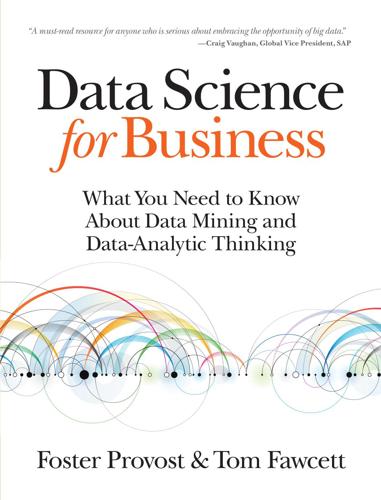
Data Science for Business: What You Need to Know About Data Mining and Data-Analytic Thinking
by
Foster Provost
and
Tom Fawcett
Published 30 Jun 2013
The distribution is not a symmetric bell curve. We should then worry about simply profiling wait times by reporting the mean and standard deviation. For example, the mean (100) does not seem to satisfy our desire to profile how long our customers normally wait; it seems too large. Technically, the long “tail” of the distribution skews the mean upward, so it does not represent faithfully where most of the data really lie. It does not represent faithfully the normal wait time of our customers. To give more depth to what our data science-savvy manager might do, let’s go a little further. We will not get into the details here, but a common trick for dealing with data that are skewed in this way is to take the logarithm (log) of the wait times.

Chaos Monkeys: Obscene Fortune and Random Failure in Silicon Valley
by
Antonio Garcia Martinez
Published 27 Jun 2016
The newspaper people turned digital publishers were still rubbing the newsprint off their hands as they tried to figure out “this Internet thing,” while the marketers inside leading games companies knew their CACs and LTVs out to three decimals.* As a result, the only mobile apps that used advertising to monetize were the long tail of free, crappy games that couldn’t convince users to pay up, or second-tier social media networks that outsourced their monetization to existing networks and exchanges. As an example, for a long while (and probably still) the biggest source of ads inventory on the most respectable mobile ad exchanges was Grindr, the gay hookup app that features endless selfies of half-naked men mugging for casual sex.

Dark Mirror: Edward Snowden and the Surveillance State
by
Barton Gellman
Published 20 May 2020
It looks complicated, but we can tell you what it means. Here is the context and here is why it is news. Verax countered that I had no power to promise that. He predicted a corporate publisher would buckle under government threats, whatever my intent. “My concern is about your editors, their lawyers, and the rest of the long tail,” he wrote. “I fear institutional caution is going to dilute this to the detriment of the public.” “What you are saying does not match my experience in any way,” I replied. “You do not know my world at all.” My departure from the Post had not been happy, but there was no doubt the paper had backed me to the hilt for twenty-one years.

The Pandemic Century: One Hundred Years of Panic, Hysteria, and Hubris
by
Mark Honigsbaum
Published 8 Apr 2019
Moreover, they did not investigate the pathogenic effect of filtered sputum from noninfluenza cases, nor were they able to conduct passage experiments, as Pasteur had done with rabies in rabbits, to manipulate the virulence of the organism and reproduce the disease through several generations. Nevertheless, Nicolle and Lebailly concluded that the bronchial expectorations of influenza patients were virulent and that both the bonnet monkey and the long-tailed macaque were susceptible to subcutaneous inoculation with the filtered fluids. Flu therefore was an “organisme filtrant”—a filtered organism. They further concluded that the filtered virus had “reproduced the disease” in the two people inoculated subcutaneously. Nicolle and Lebailly’s paper detailing their findings was read by Roux before the French Academy of Sciences in Paris on September 21.
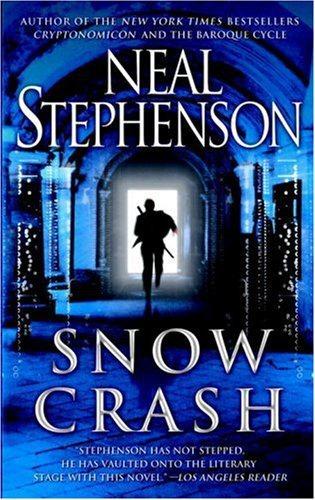
Snow Crash
by
Neal Stephenson
Published 15 Jul 2003
Like when you open your freezer door on a humid day. She pushes the Rat Thing into its hutch. Some kind of cold liquid sprays out of all the walls and bursts into steam before it even reaches the Rat Thing's body, and the steam comes blasting out the front of the hutch so powerfully that it knocks her on her ass. The long tail is strung out the front of the hutch, across the floor, and out through the doggie door. She picks up part of it, the sharp machine-tooled edges of its vertebrae pinching her gloves. Suddenly it tenses, comes alive, vibrates for a second. She jerks her hands back. The tail shoots back inside the hutch like a rubber band snapping.
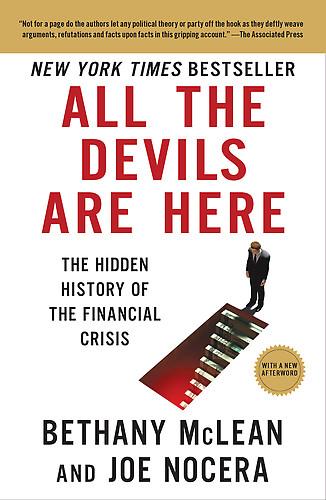
All the Devils Are Here
by
Bethany McLean
Published 19 Oct 2010
Once, a Wall Street analyst took some clients to see Greenberg and asked him point-blank how he managed to produce that steady stream of earnings growth “in this highly volatile industry,” as he put it. “Aren’t you concerned that the SEC or someone is going to look at AIG and ask if you are managing earnings?” Greenberg was not happy with the question, but he gave a surprisingly straightforward answer. “Look,” he replied. “We are in the long-tail liability business”—meaning that, though the risks AIG insured didn’t occur very often, the payout was very large when they did. “If there is one thing we have learned, it is that there are risks we can’t anticipate, so when we have extra capital we are justified in setting it aside.” He added, “What do you want?
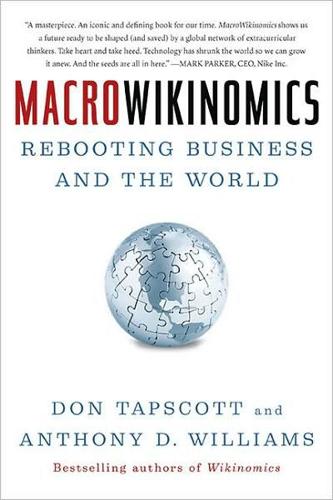
MacroWikinomics: Rebooting Business and the World
by
Don Tapscott
and
Anthony D. Williams
Published 28 Sep 2010
As educator Jeff Golub pointed out in 1988: “Collaborative learning has as its main feature a structure that allows for student talk: students are supposed to talk with each other . . . and it is in this talking that much of the learning occurs.” 14. John Seely Brown and Richard P. Adler, “Minds on Fire: Open Education, the Long Tail, and Learning 2.0,” EDUCAUSE Review, vol. 43, no. 1 (January/February 2008). 15. Richard J. Light, Making the Most of College: Students Speak Their Minds (Harvard University Press, 2001). 16. Papert’s notion of “constructionism” should not be confused with constructivism, a theory of knowledge developed by Jean Piaget, that argues that humans generate knowledge from their experiences. 17.

Lonely Planet Nicaragua (Travel Guide)
by
Lonely Planet
,
Alex Egerton
and
Greg Benchwick
Published 30 Jun 2013
Other countries in on the agreement are just getting started on the project, but Nicaragua’s two enormous Unesco biosphere reserves, Bosawás and Southeast Nicaragua (Río San Juan), make a significant chunk. Animals Most people are looking for monkeys, and there are three natives: big howler monkeys, smaller spider monkeys and sneaky capuchins. Pizotes, elsewhere called coatis, are the long-tailed, toothy-smiled rodents that are particularly bold on the Rivas peninsula – feed them at your own risk. Several cats (pumas, jaguars and others) survive, but you probably won’t see them. Baird’s tapirs, 250kg herbivores, are another rare treat. At night you’ll see hundreds of bats, including, maybe, vampire bats – which usually stick to livestock.
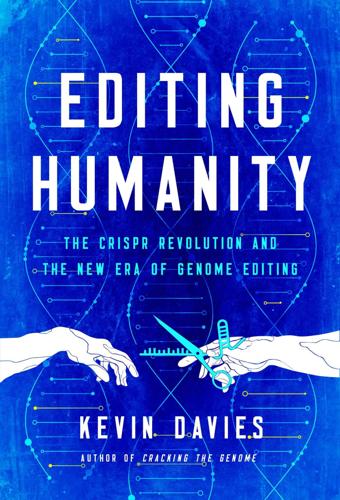
Editing Humanity: The CRISPR Revolution and the New Era of Genome Editing
by
Kevin Davies
Published 5 Oct 2020
“I don’t want my legacy to be the most expensive drugs in history,” George Church told me. “We’ve brought down the price of the genome from $3 billion now to ‘zero dollars.’ That I’m proud of. I’m much more excited about that than I am about my contribution to expensive therapy.”35 This is not scalable. Five percent of live births have a Mendelian genetic disorder—the long tail of thousands of rare or orphan diseases. “We’re not going to be spending $2 million on 5 percent of births!” Church says. He estimates that the total cost, including opportunity losses and caregiver costs, is a catastrophic $1 trillion worldwide per year, not to mention the collective pain and suffering.
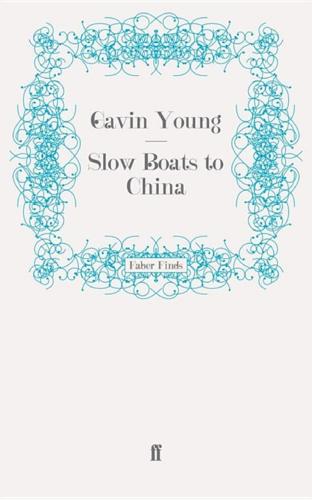
Slow Boats to China
by
Gavin Young
Published 24 Feb 1983
The Malays call it orang blanda (Dutchman), showing what they thought about their overlords in the East Indies. We paused before a case of birds of paradise, perhaps the most wonderful of tropical creatures, and, a few paces further on, looked at the grotesque hornbills with their unwieldy-looking bills and the long tail feathers that the superstitious Dayaks like to wear as headdresses. Then we saw that the custodians were closing the museum. As we walked slowly down the hill to the Aurora, Bushey said, ‘I ended the war in Burma, you know. Place called Prome. Now at Prome there was as queer a coot as you’ll ever find.

Valley of Genius: The Uncensored History of Silicon Valley (As Told by the Hackers, Founders, and Freaks Who Made It Boom)
by
Adam Fisher
Published 9 Jul 2018
Ray Sidney: That’s definitely important. You can call the big advertisers and say, “Hey, how would you like to start advertising with us?” But you can’t call up all the little people who are interested in spending a small amount of money to advertise whatever small things they’re selling—what you would call the long tail. So that was definitely key. Douglas Edwards: One of the key innovations was that the ads were going to be created by the advertisers themselves and not in any way be vetted by Google. I thought that that was absolutely insane. I was sure that was suicide. And I told Larry as much. And so we did it anyway.

The Power Law: Venture Capital and the Making of the New Future
by
Sebastian Mallaby
Published 1 Feb 2022
The PC around 1980–81; the internet in 1994; mobility and cloud in 2007. The next is AI.” Doerr, interview by the author, Sept. 13, 2018. BACK TO NOTE REFERENCE 70 For a lucid analysis of the relationship between Metcalfe’s law and Moore’s law, see Bob Metcalfe, “Metcalfe’s Law Recurses Down the Long Tail of Social Networks,” VC Mike’s Blog, Aug. 18, 2006, vcmike.wordpress.com/2006/08/18/metcalfe-social-networks. BACK TO NOTE REFERENCE 71 Khosla, interview by the author, July 30, 2018. What was distinctive about Doerr and Khosla was not that they were ready to invest in a browser; by 1994, “it was very clear to all of us what was happening in the browser world,” Jim Swartz of Accel commented.
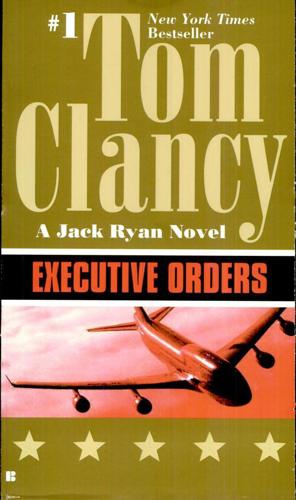
Executive Orders
by
Tom Clancy
Published 2 Jan 1996
After all, the African green monkey was abundant throughout Africa. It wasn't as though there were a shortage of the things, he told himself. Two hours later, he learned something different. There was a shortage, though it would last only a few days, as long as it took for the trappers to find a few more troops of the long-tailed pests. VASCO HANDLED THE translation in addition to his commentary duties. 'Our wise and beloved leader who has given our country so much ' Like population control the hard way, Ed Foley snorted. The soldiers, all guardsmen, moved the coffin into the prepared tomb, and with that, two decades of Iraqi history passed into the books.
…
That attenuated the sound, but not the fetid smell which the aircraft's recirculation systems cycled back and forth, both further enraging the cargo and sickening the crew. The pilot, normally an eloquent man with his invective, had run out of curses and had tired of entreating Allah to expunge these horrid little creatures from the face of the earth. In a zoo, perhaps, he would have pointed to the long-tailed creatures, and his twin sons would have smiled and perhaps tossed some peanuts to their amusing captives. No more. With his tolerance gone, the pilot reached for the emergency oxygen mask and switched the flow on, wishing then he might blow open the cargo doors, de-pressurize the aircraft and thus both extinguish the monkeys and vent the dreadful smell.
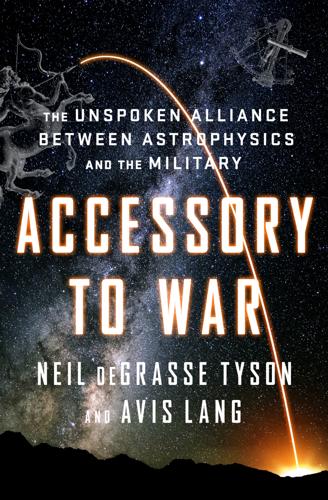
Accessory to War: The Unspoken Alliance Between Astrophysics and the Military
by
Neil Degrasse Tyson
and
Avis Lang
Published 10 Sep 2018
A mariner might carry a caged “shore-sighting” raven, booby, or frigate bird on board, freeing it periodically to see whether it would return to the dry safety of the boat or head off toward the preferable safety of land. Genesis 8:11 tells us that Noah sent forth a dove, which returned with an olive sprig in its beak. Ancient Polynesians, seeing the long-tailed cuckoo migrate southwestward each year, would have realized it was heading for unseen terra firma, because the cuckoo is a landlubber. Taking their cue from the cuckoo and steering southwestward in their twin-hulled voyaging canoes, the Polynesians came upon New Zealand. Medieval Irish monks saw vast, honking flocks of geese head northward every spring from the Shannon estuary and return every autumn; sailing north in their curraghs, they came upon Iceland.
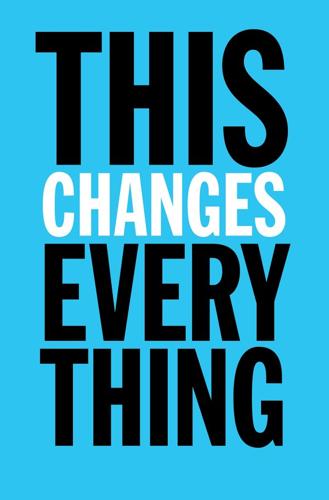
This Changes Everything: Capitalism vs. The Climate
by
Naomi Klein
Published 15 Sep 2014
Ossie Michelin, “Amanda Polchies, the Woman in Iconic Photo, Says Image Represents ‘Wisp of Hope,’ ” APTN, October 24, 2013; “Greek Granny Goads Riot Police at Gold Mining Protest with Wartime Song,” (video) Keep Talking Greece, March 8, 2013; David Herron, “Government Still Ensuring Hydraulic Fracturing Happens in Pungesti, Romania, Despite Protests by Villagers,” The Long Tail Pipe, January 5, 2014. 23. FOOTNOTE: Maxime Combes, “Let’s Frackdown the Fracking Companies,” in Leah Temper, et al., “Towards a Post-Oil Civilization: Yasunization and Other Initiatives to Leave Fossil Fuels in the Soil,” EJOLT Report No. 6, May 2013, p. 92. 24. Esperanza Martínez, “The Yasuní—ITT Initiative from a Political Economy and Political Ecology Perspective,” in Temper et al., “Towards a Post-Oil Civilization,” p. 11; KC Golden, “The Keystone Principle,” Getting a GRIP on Climate Solutions, February 15, 2013. 25.
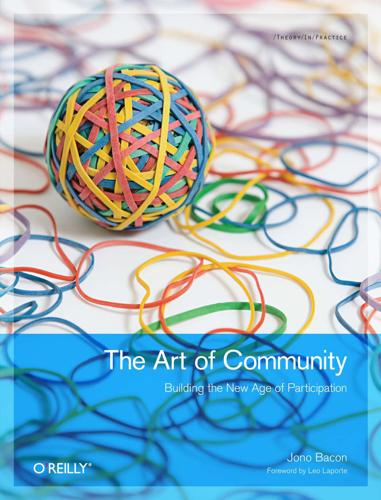
The Art of Community: Building the New Age of Participation
by
Jono Bacon
Published 1 Aug 2009
The second edition not only refines and extends this body of work, but also shares many other stories of how successful communities have been created and the choices made in doing so. This combination of Jono’s experience and insight as well as these real-world stories from other community leaders provides a strong pathway to success in your own communities. —Chris AndersonEditor of Wired Magazine, author of The Long Tail (Hyperion), creator of DIYDrones Berkeley, California November 15, 2011 Preface Community is a funny ol’ word. In recent years our humble nine-letter friend has come to mean many things to many people. No longer merely the domain of charity groups and overtly friendly neighbors, community has gone on to be the talk of technologists, businesspeople, politicians, students, welfare groups, and just about anyone who has connected to the Internet.

Global Catastrophic Risks
by
Nick Bostrom
and
Milan M. Cirkovic
Published 2 Jul 2008
Buchanan, M. (2001). Ubiquity (London: Phoenix). This is a popular account - one of several now available including the same author's Small Worlds - of the 'inverse power' regularities somewhat surprisingly found to exist widely in complex systems. This is of particular interest to insurers as the long-tail probability distribution most often found for catastrophe risks is the pareto distribution which is 'inverse power'. G I RO (2006). Report of the Catastrophe Modelling Working Party (London: Institute of Actuaries). This specialist publication provides a critical survey of the modelling methodology and commercially available models used in the insurance industry.

Palo Alto: A History of California, Capitalism, and the World
by
Malcolm Harris
Published 14 Feb 2023
“That national connection brought many migrants from the east coast to San Francisco, and as well as manufactured goods from eastern factories to the west coast, creating pressure on the high prices and high wages that had previously flourished in a market of scarcity,” writes historian Mae Ngai. “Far from delivering untold wealth and development to the Pacific coast, the railroad brought joblessness and poverty—the long tail of the national depression of 1873–77.”17 Notable among those immigrants were defeated Confederate rebels, and the racist militants hadn’t undergone any postwar ideological reeducation. The boom era of settlement, when men who made it to the coast could count on low supply and high demand for whatever it was they wanted to do or sell, was over.
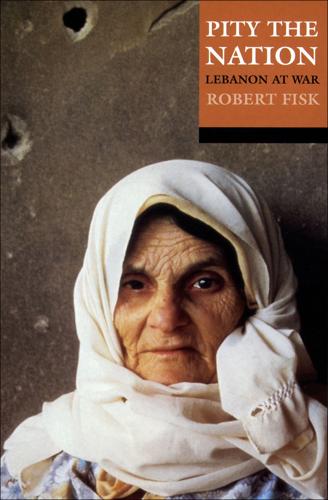
Pity the Nation: Lebanon at War
by
Robert Fisk
Published 1 Jan 1990
Anderson, Faramarzi, Mell and I sat on the roof of Anderson’s and my apartment block and watched the helicopters thundering across the sea towards the Corniche. Anderson and Mell were pleased to see the Americans go. We were tired of their armoured vehicles outside our door, of their military orders bellowed at all hours from windows and sandbag guard posts, of the long-tailed rats that thrived on their piles of garbage in the street. But we were all aware of what this departure meant. It was not that we felt abandoned. We were at home in Lebanon. Our friends were Lebanese. I felt much easier without the battery of Hawk missiles on the neighbouring roof. But we knew that this tiny, almost symbolic withdrawal would leave a vacuum quite out of proportion to the American departure.

The Rough Guide to New Zealand: Travel Guide eBook
by
Rough Guides
Published 1 Jan 2024
Knob’s Flat Daily: May–Sept 8.30am–3pm; Oct–April 8am–5pm • Free Most tour buses stop to use the last flush toilets before Milford at Knob’s Flat, 6km beyond Mirror Lakes, where the amenity centre also contains display panels on the invasive species threatening the region (notably stoats and possums), plus the effects of avalanches that are a perennial danger June to November. The beech forests in this area are also home to New Zealand’s only native land mammal, the long-tailed bat. Camping is permitted here. The Divide As you get nearer to the head of the Eglinton Valley, the road steepens to The Divide (83km from Te Anau), which at 531m is the lowest east–west crossing of the Southern Alps. This is the start/finish of the Greenstone and Caples (see page 473) and Routeburn (see page 471) tracks, the last of which can be followed to Key Summit (5km return; 2–3hr; 400m ascent) for a shorter hike.
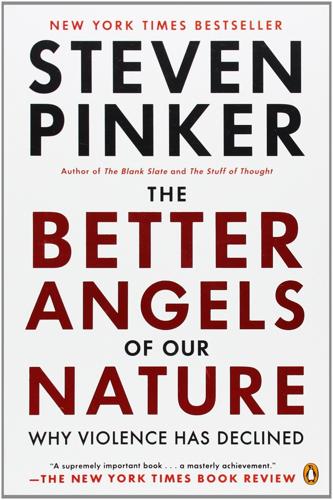
The Better Angels of Our Nature: Why Violence Has Declined
by
Steven Pinker
Published 24 Sep 2012
The extensive historical data from Europe also give us an opportunity to broaden our view of organized conflict from interstate wars involving the great powers to wars between less powerful nations, conflicts that miss the thousand-death cutoff, civil wars, and genocides, together with deaths of civilians from famine and disease. What kind of picture do we get if we aggregate these other forms of violence—the tall spine of little conflicts as well as the long tail of big ones? The political scientist Peter Brecke is compiling the ultimate inventory of deadly quarrels, which he calls the Conflict Catalog.85 His goal is to amalgamate every scrap of information on armed conflict in the entire corpus of recorded history since 1400. Brecke began by merging the lists of wars assembled by Richardson, Wright, Sorokin, Eckhardt, the Correlates of War Project, the historian Evan Luard, and the political scientist Kalevi Holsti.

Central America
by
Carolyn McCarthy
,
Greg Benchwick
,
Joshua Samuel Brown
,
Alex Egerton
,
Matthew Firestone
,
Kevin Raub
,
Tom Spurling
and
Lucas Vidgen
Published 2 Jan 2001
Wildlife ANIMALS The country’s abundance of animals includes 250 species of mammal, 600 bird species, 200 species of reptile and amphibian, and numerous butterflies and other insects. The national bird, the resplendent quetzal, is often used to symbolize Central America. Though small, the quetzal is exceptionally beautiful. The males sport a bright red breast, brilliant blue-green across the rest of the body and a spot of bright white on the underside of the long tail. Other colorful birds include toucans, macaws and parrots. Boasting the ocellated turkey (or ‘Petén turkey’) – a large, impressive, multicolored bird reminiscent of a peacock, Tikal is a bird-watching hot spot, with some 300 tropical and migratory species sighted to date. Several woodpecker species, nine types of hummingbirds and four trogon species are just the beginning of the list.

Southeast Asia on a Shoestring Travel Guide
by
Lonely Planet
Published 30 May 2012
– book ahead online via http://ebooking.com.my, stop by the National Park Booking Office in Kuching, or phone the park. By the time you read this, a new hostel should be open and some of the chalets upgraded. The designated camping zone (per person RM5) at park headquarters has only three spots. * * * CHEEKY MACAQUES The long-tailed macaques that hang about the park headquarters are great to watch, but they are mischievous and cunning opportunists who will make running leaps at anything potentially edible they think they can carry off. Lock your doors, close your bags and do not leave valuables, food or drink – or anything in a plastic bag – unattended, especially on the beaches or on the chalet verandahs
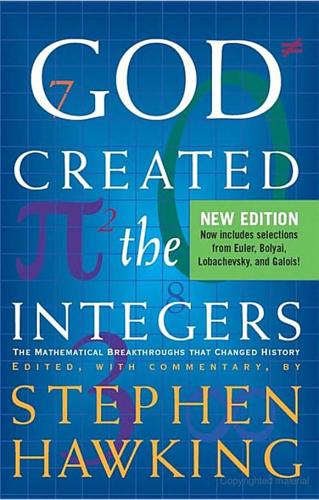
God Created the Integers: The Mathematical Breakthroughs That Changed History
by
Stephen Hawking
Published 28 Mar 2007
No one prayed to have the planets and the sun arrested in their courses: observation had soon made apparent the futility of such prayers. But as these phenomena, occurring and disappearing at long intervals, seemed to oppose the order of nature, it was supposed that Heaven, irritated by the crimes of the earth, had created them to announce its vengeance. Thus the long tail of the comet of 1456 spread terror through Europe, already thrown into consternation by the rapid successes of the Turks, who had just overthrown the Lower Empire. This star after four revolutions has excited among us a very different interest. The knowledge of the laws of the system of the world acquired in the interval had dissipated the fears begotten by the ignorance of the true relationship of man to the universe; and Halley, having recognized the identity of this comet with those of the years 1531, 1607, and 1682, announced its next return for the end of the year 1758 or the beginning of the year 1759.

The Rough Guide to South America on a Budget (Travel Guide eBook)
by
Rough Guides
Published 1 Jan 2019
The most visited village at these dizzying heights and the only place with any accommodation is the little whitewashed settlement of Parinacota, accessible by public transport, though it’s far easier to see the sights of Lauca on an organized tour. Las Cuevas The stony hillsides of Las Cuevas, 9km into the park, are the best place to see viscachas, the long-tailed, rabbit-like relatives of chinchillas, as they use their powerful hind legs to leap from boulder to boulder. The well-watered bofedal (alluvial depression) here provides permanent grazing for herds of vicuñas, the wild relatives of llamas and alpacas, which are commonly seen. In addition, you’ll find numerous examples of the llareta plant, which takes three hundred years to grow to full size; the plant looks like a pile of oddly shaped green cushions but is actually rock-hard.

Artificial Intelligence: A Modern Approach
by
Stuart Russell
and
Peter Norvig
Published 14 Jul 2019
Which would you trust: an experimental aircraft that has never flown before but has a detailed explanation of why it is safe, or an aircraft that safely completed 100 previous flights and has been carefully maintained, but comes with no guaranted explanation? 19.9.5Operation, monitoring, and maintenance Once you are happy with your model’s performance, you can deploy it to your users. You’ll face additional challenges. First, there is the problem of the long tail of user inputs. You may have tested your system on a large test set, but if your system is popular, you will soon see inputs that were never tested before. You need to know whether your model generalizes well for them, which means you need to monitor your performance on live data—tracking statistics, displaying a dashboard, and sending alerts when key metrics fall below a threshold.